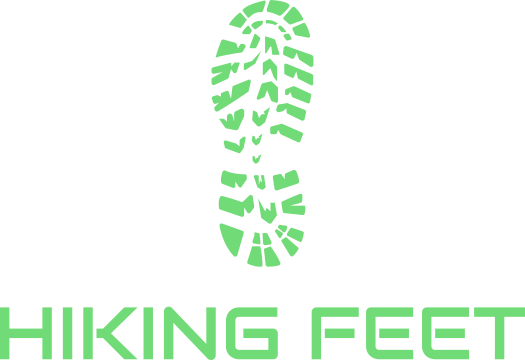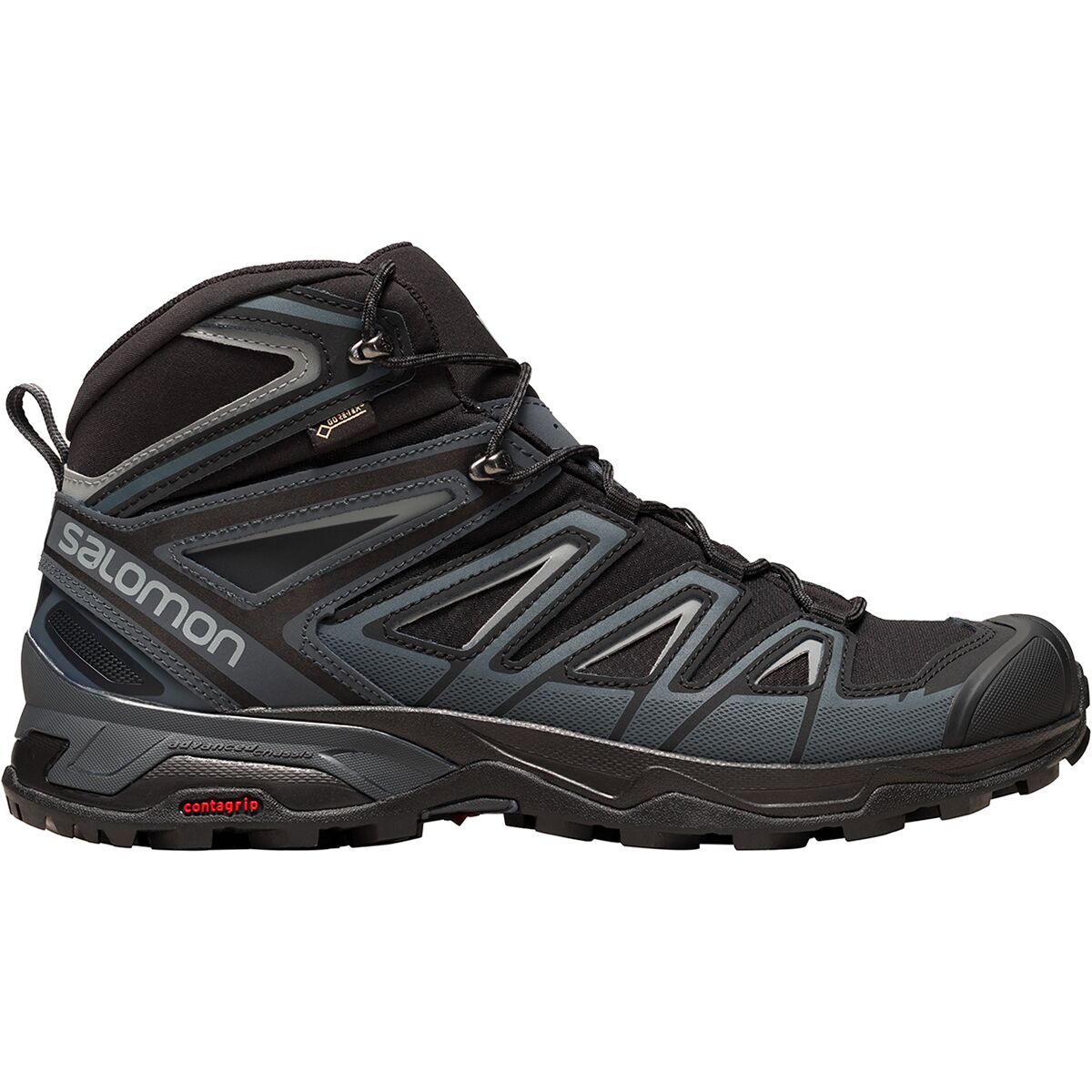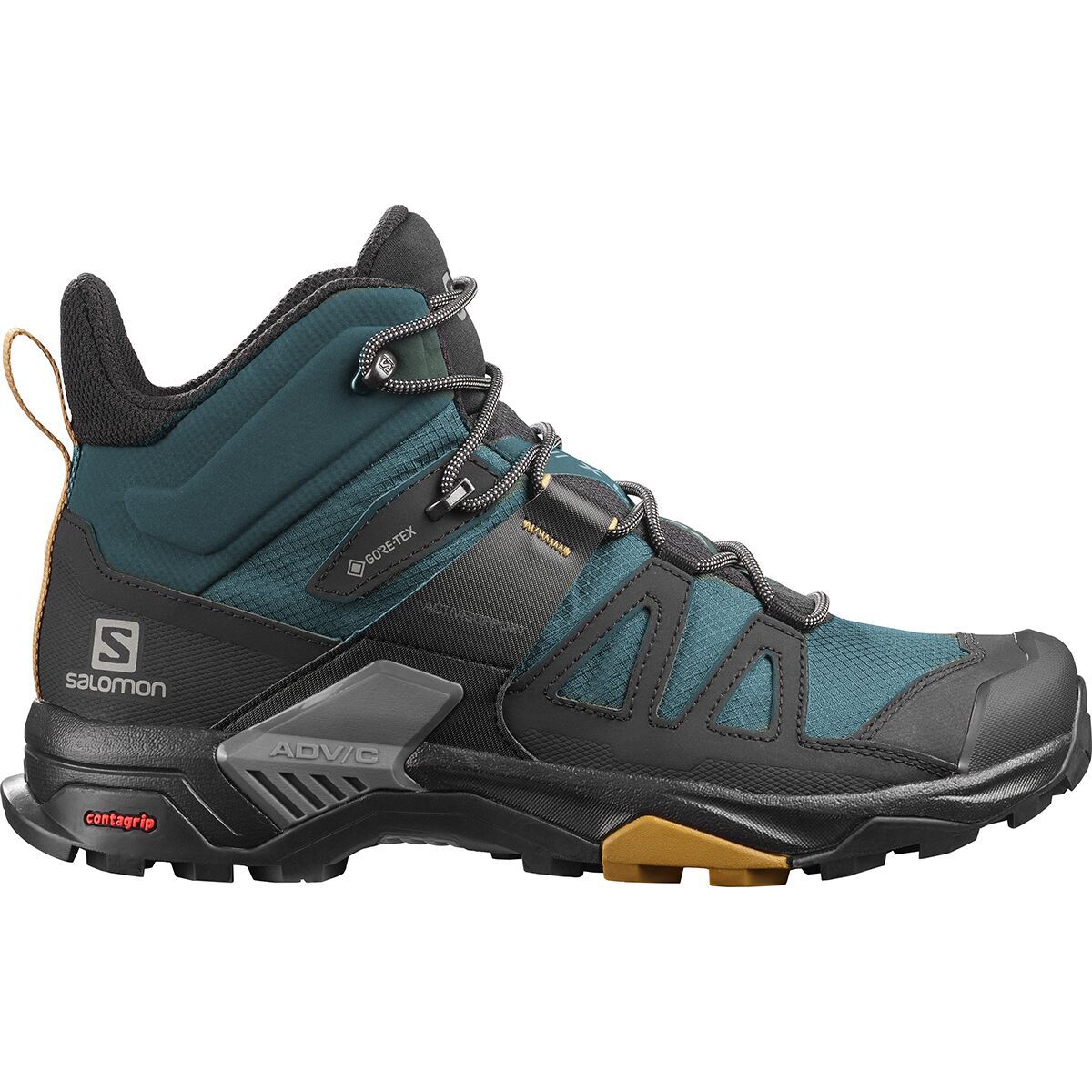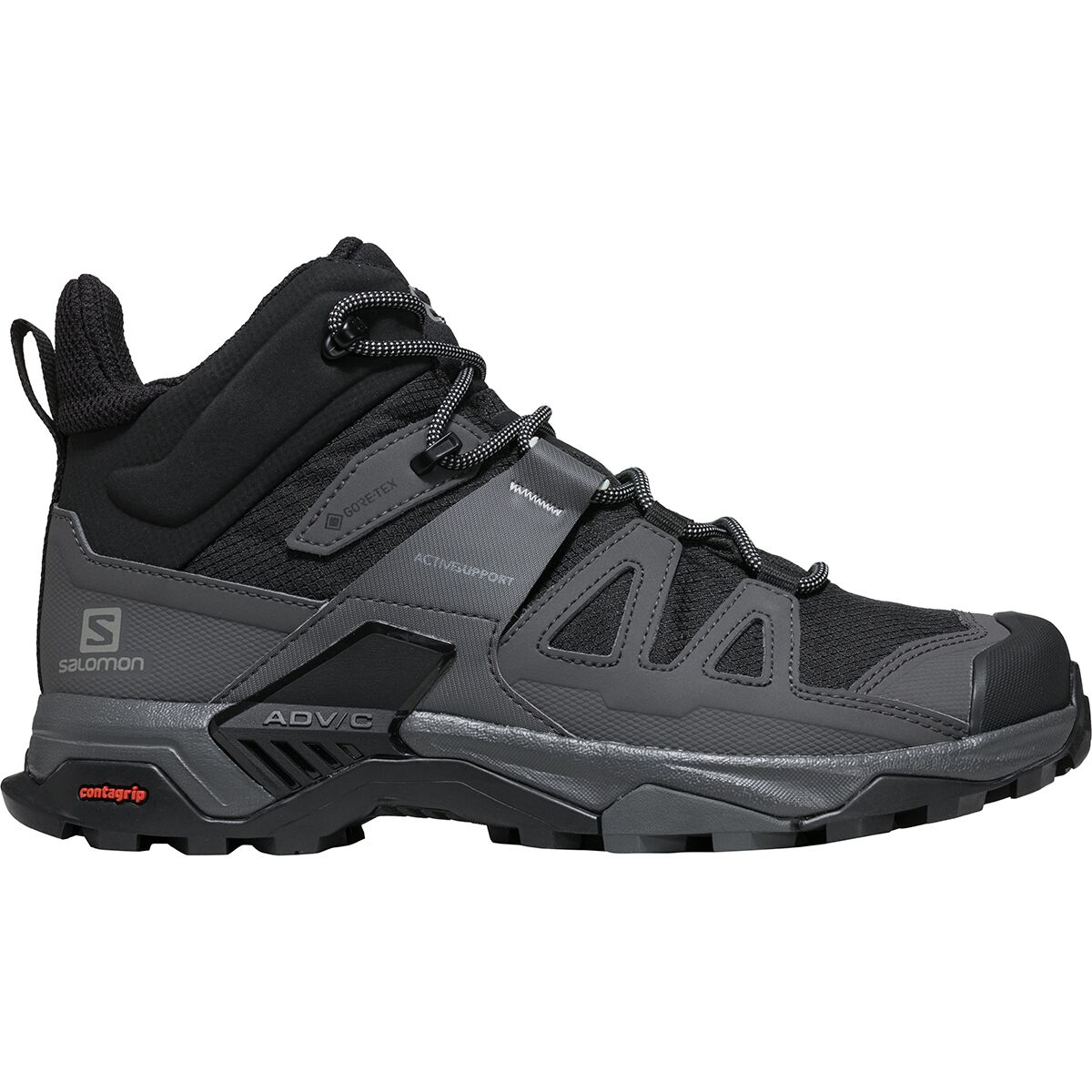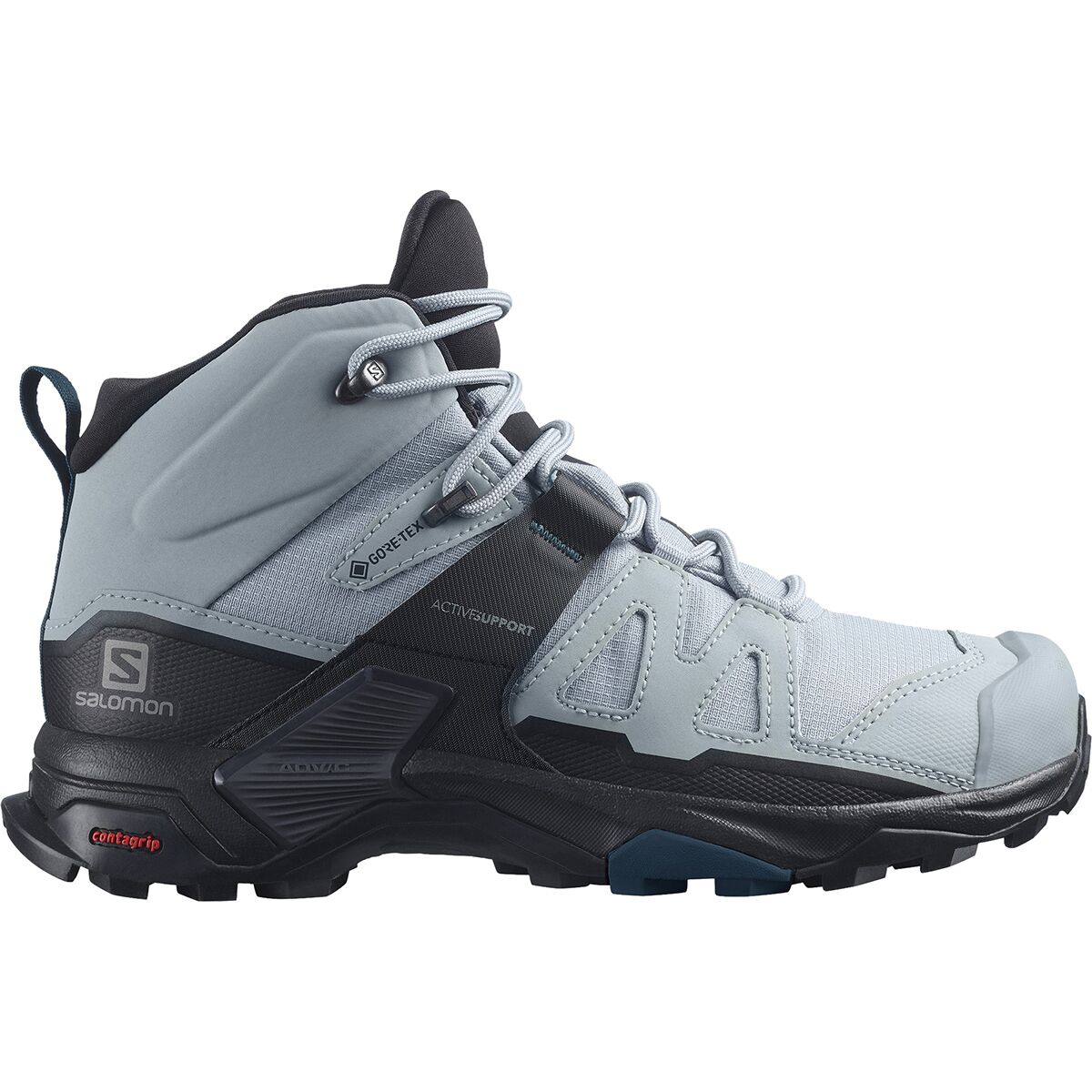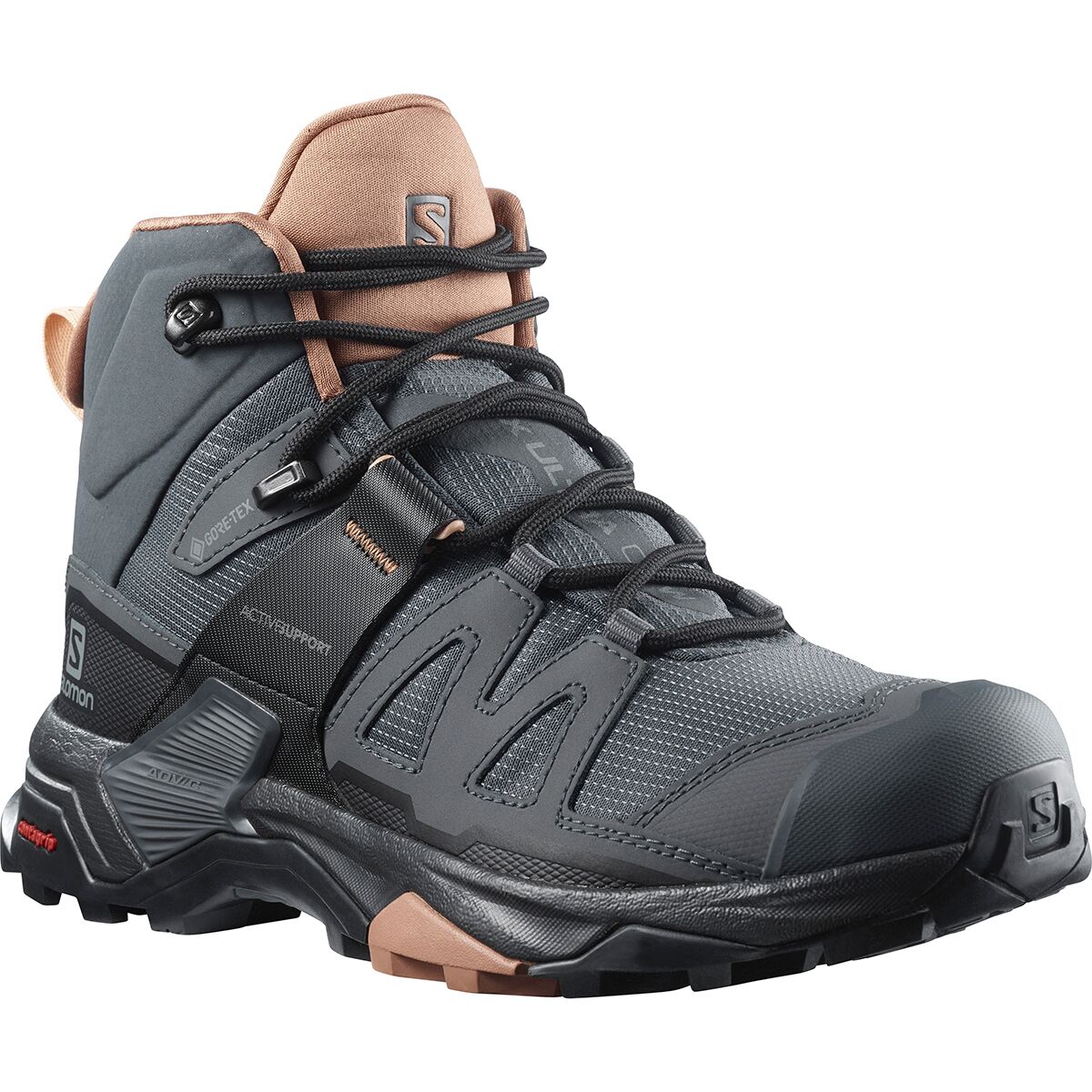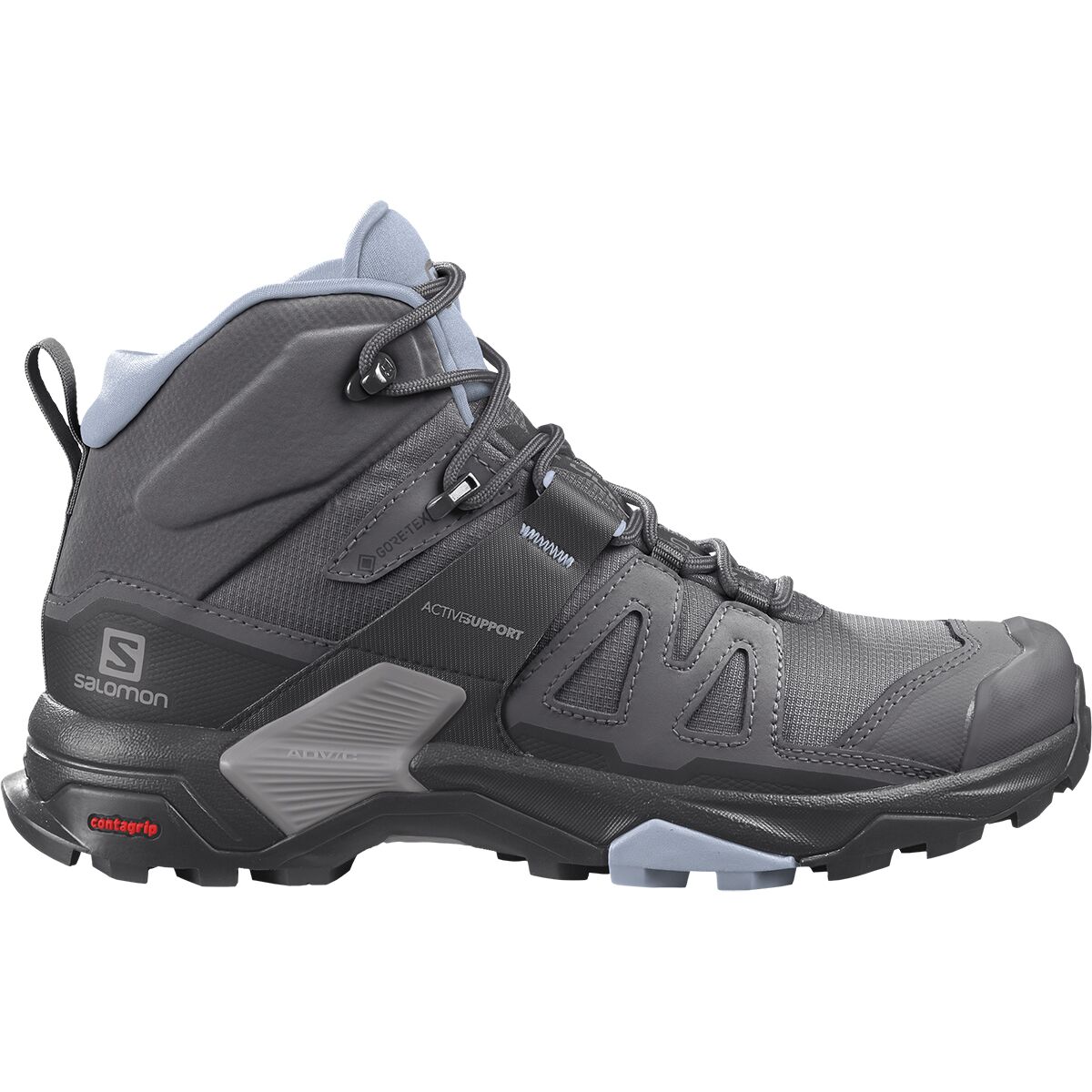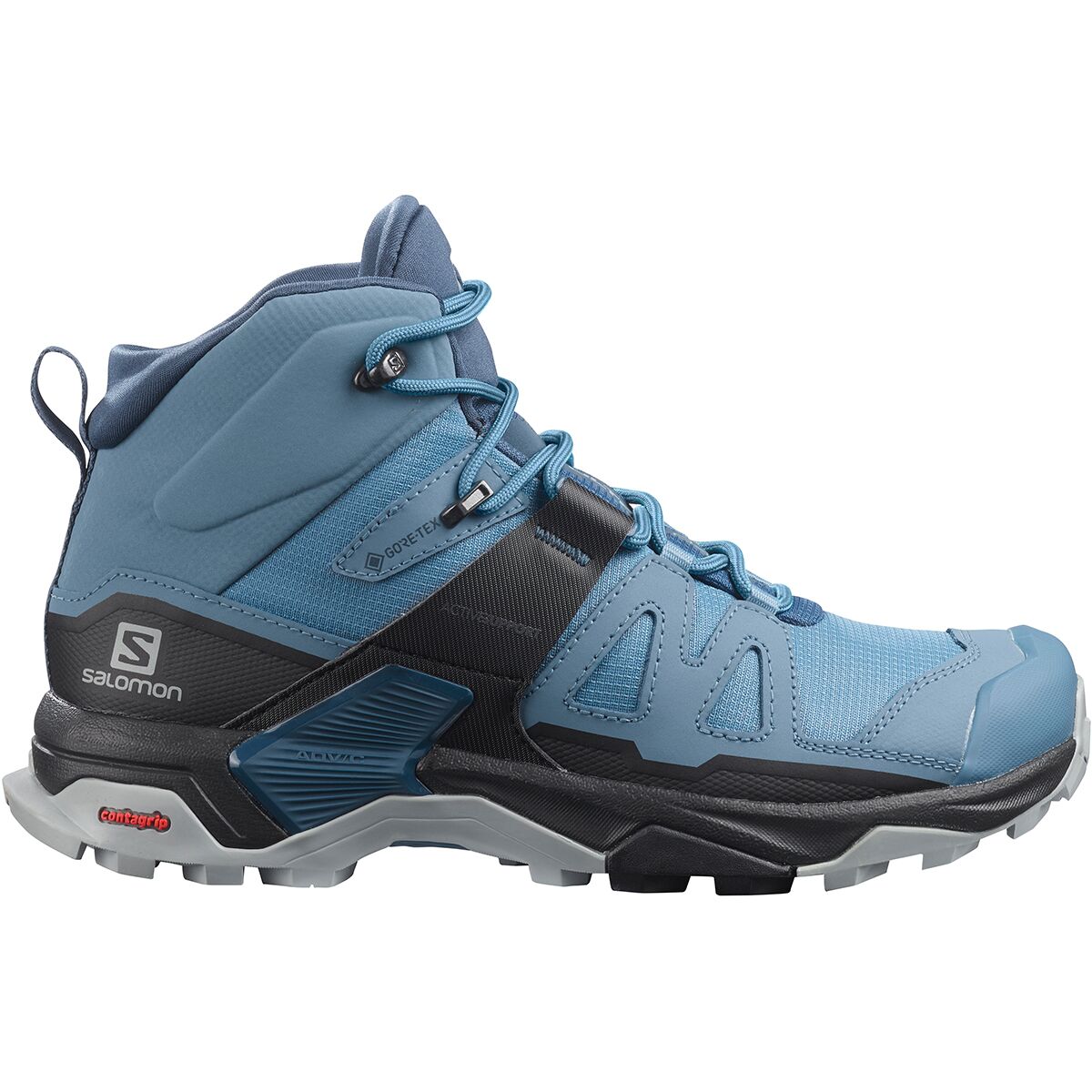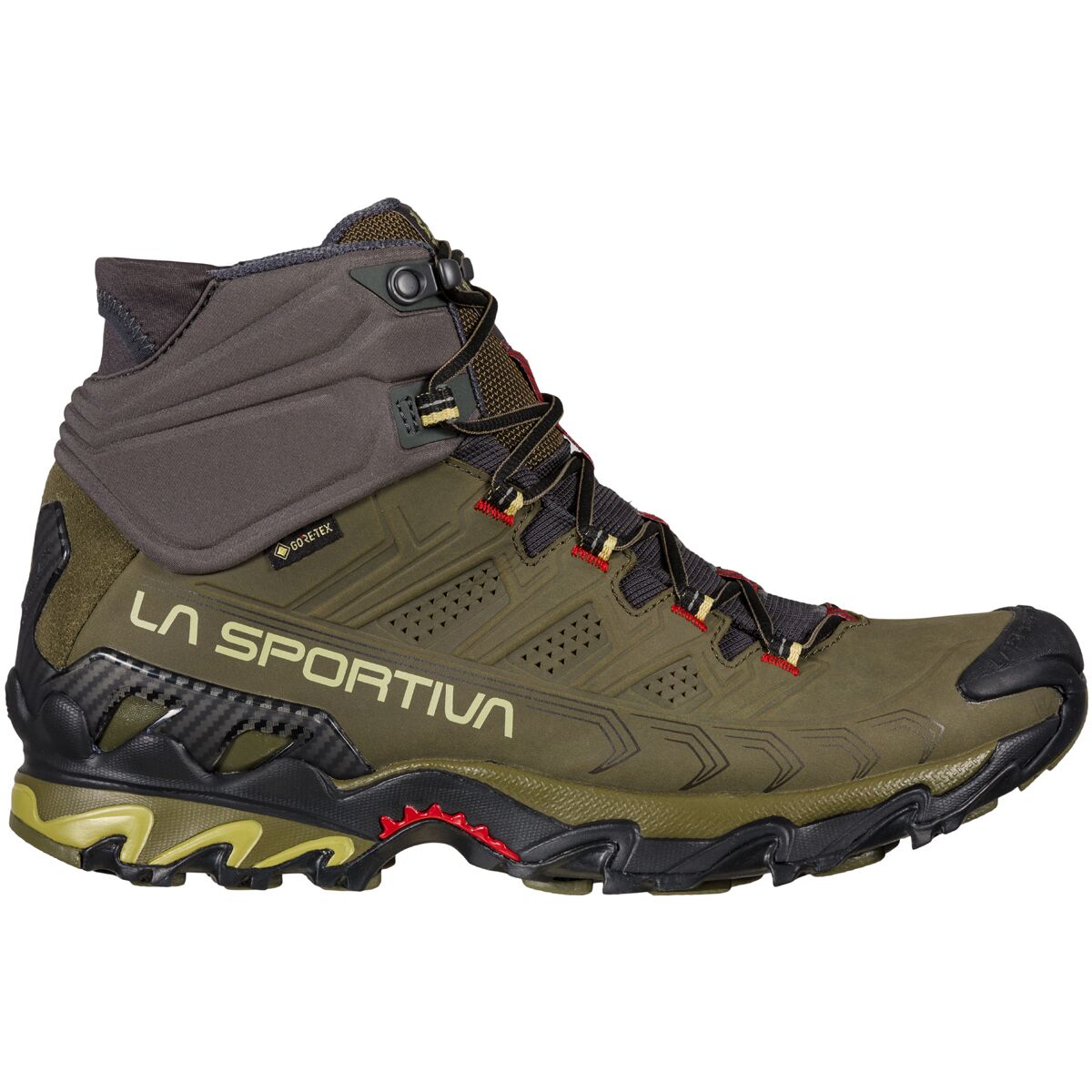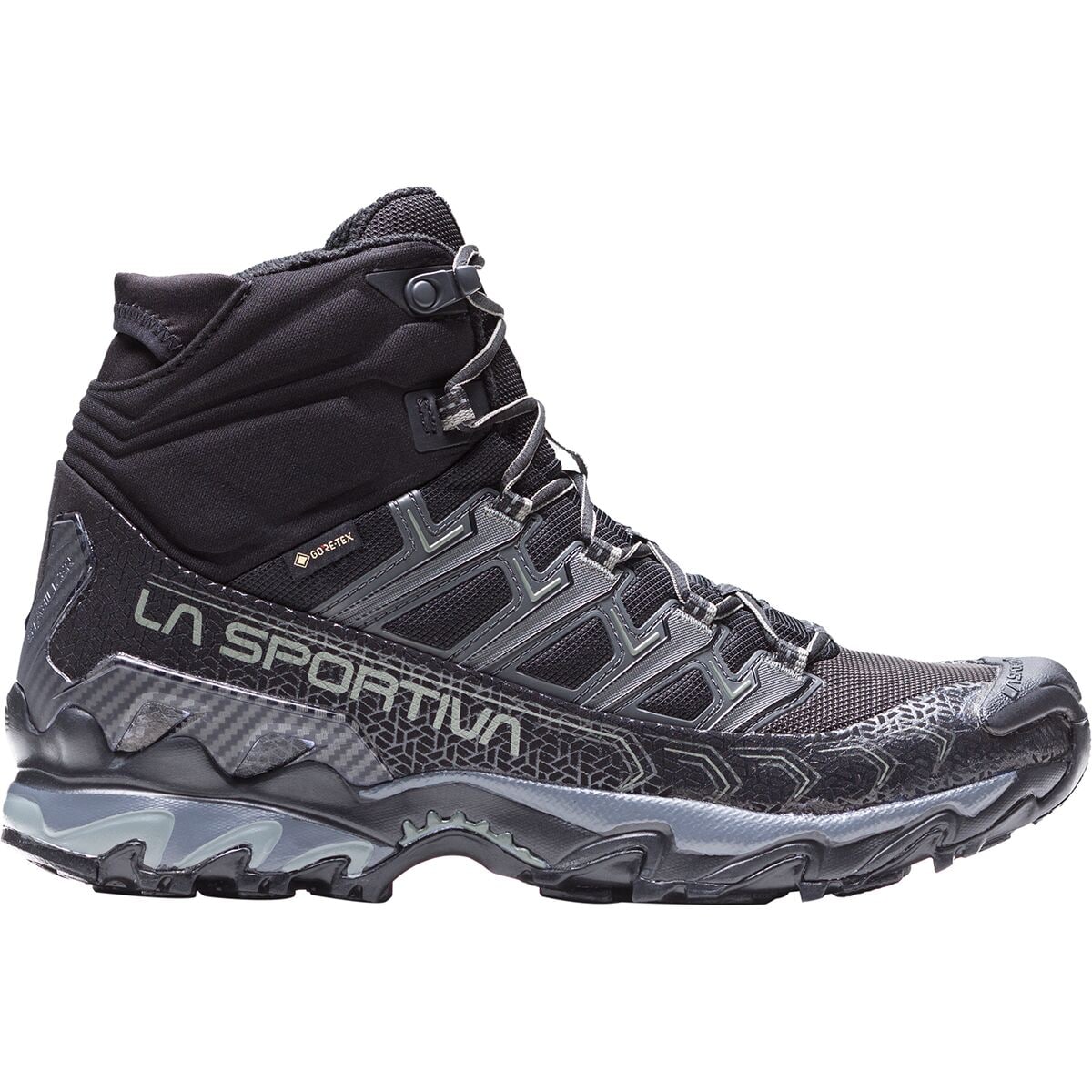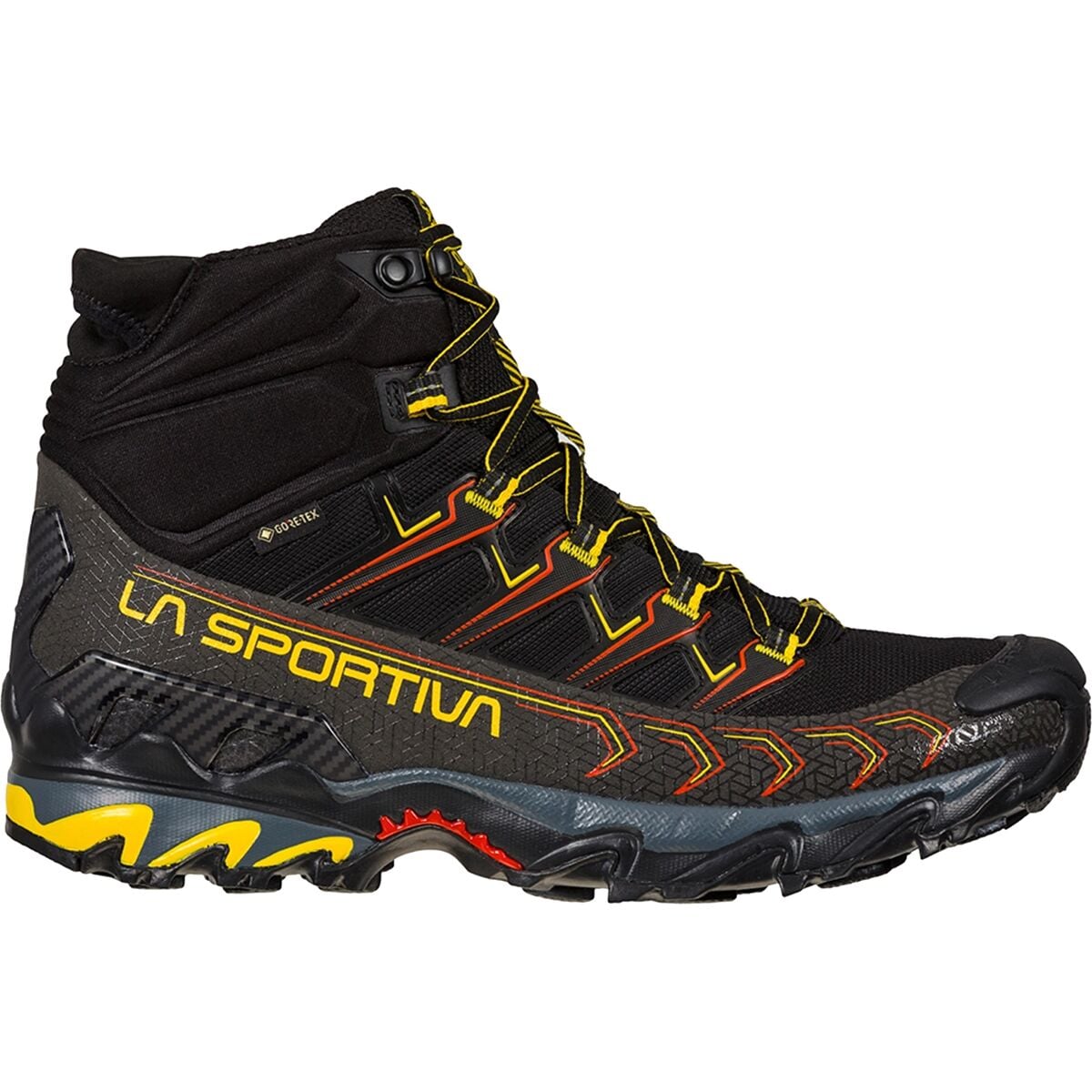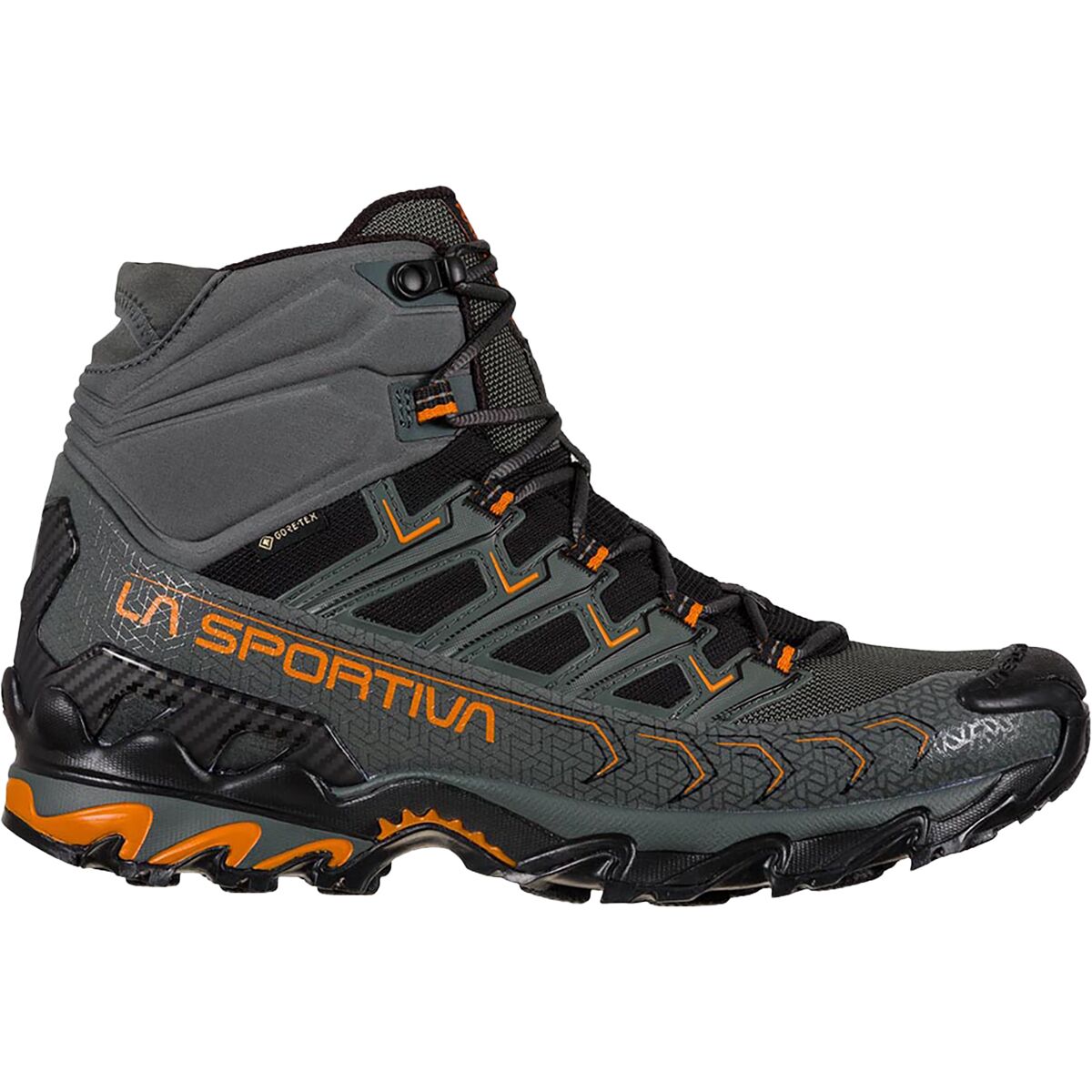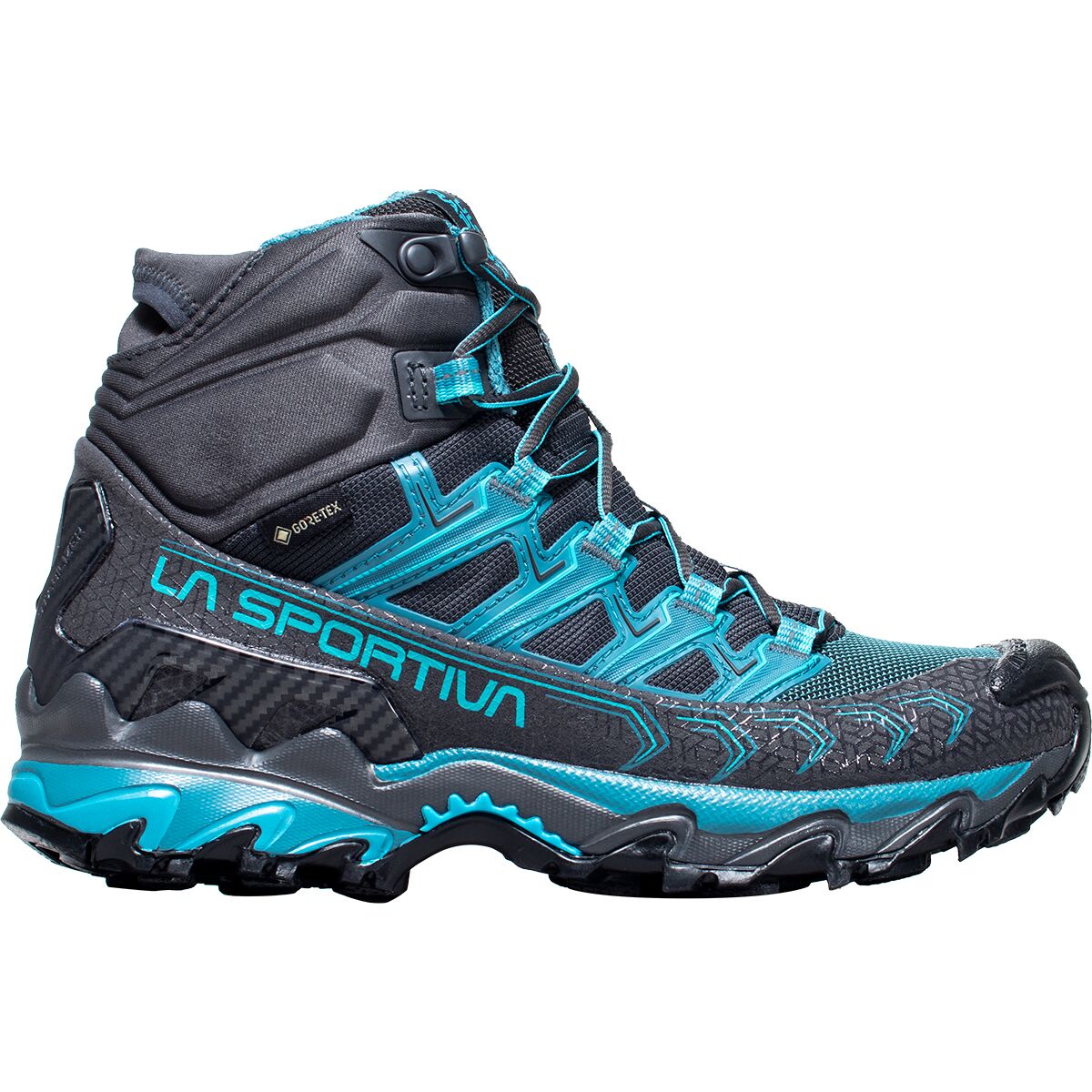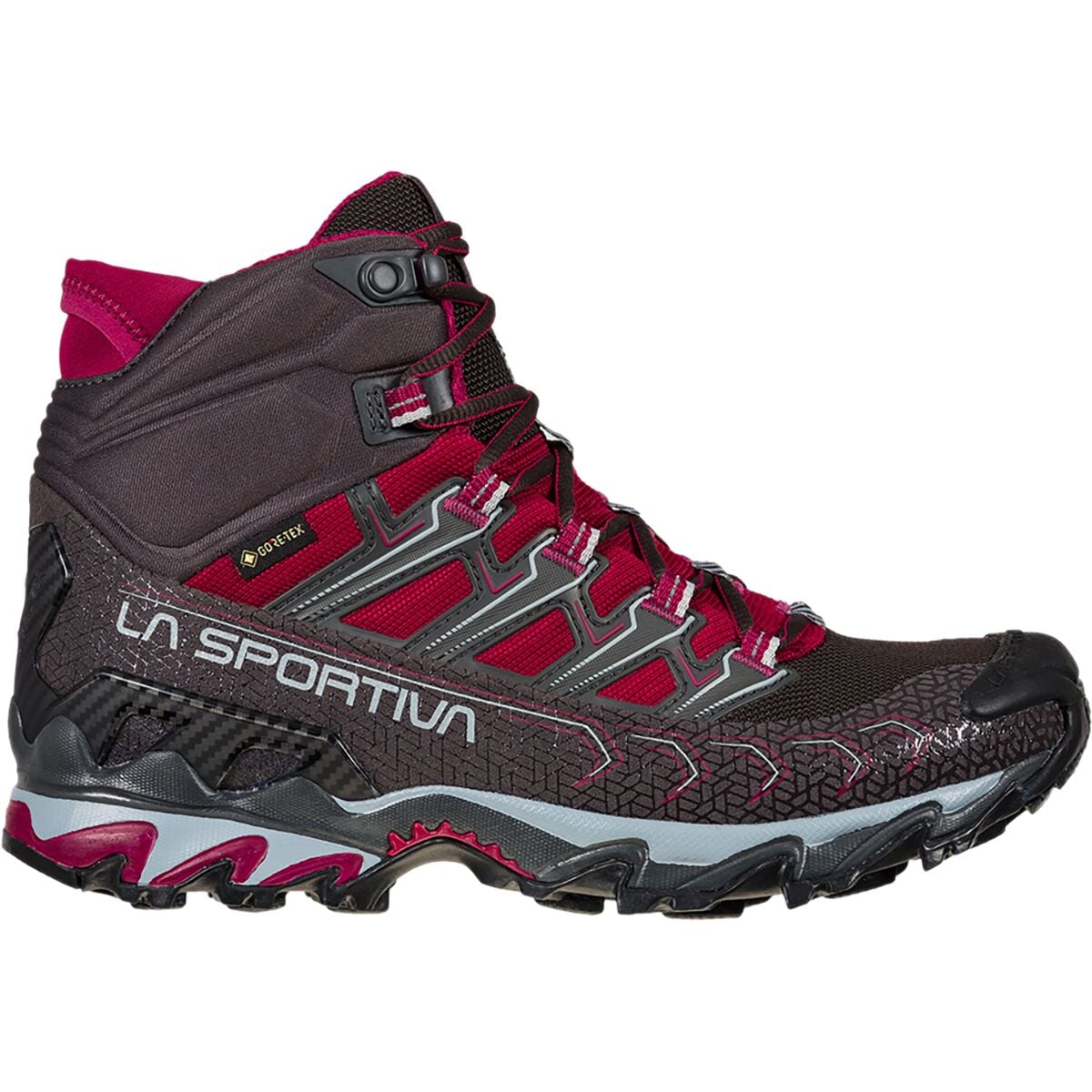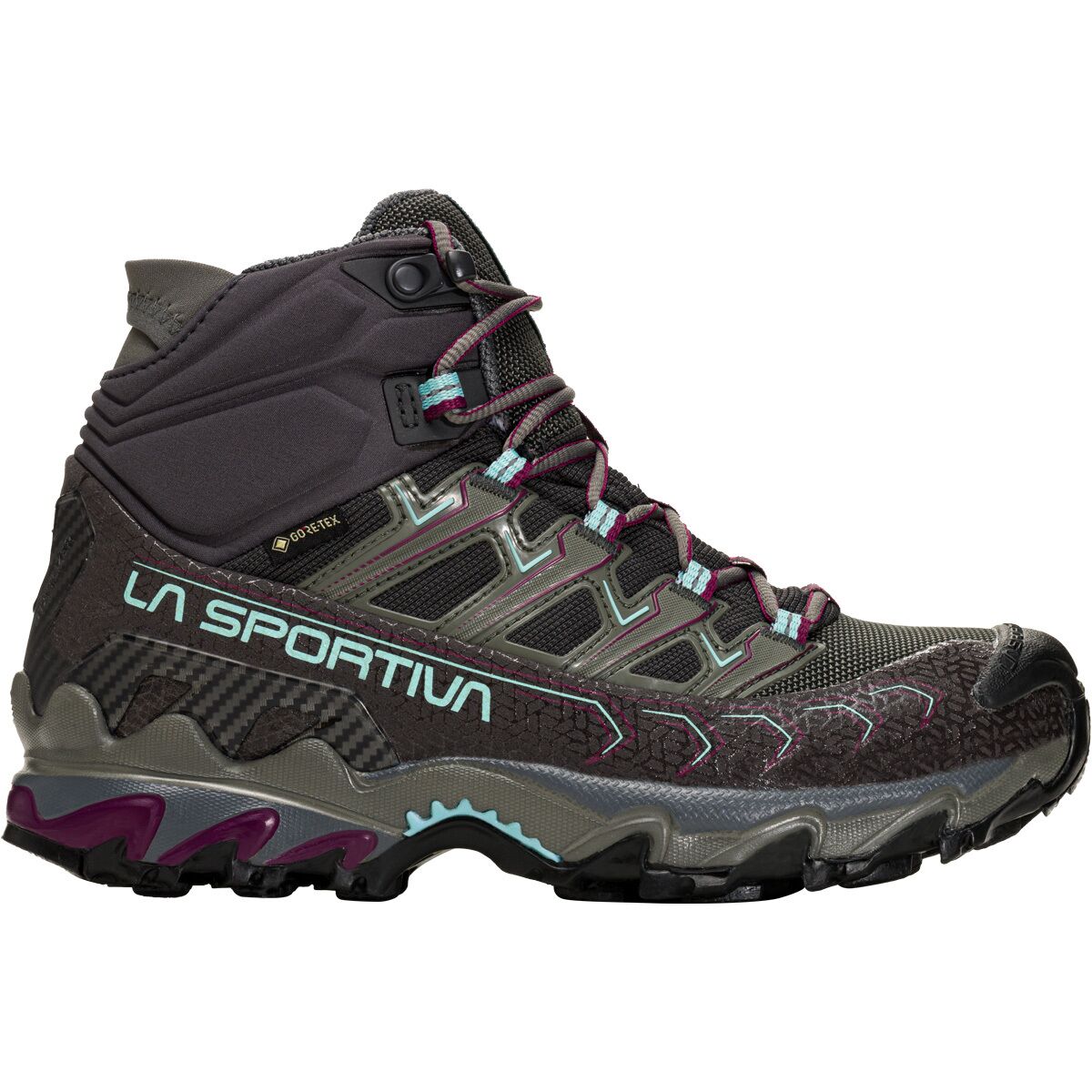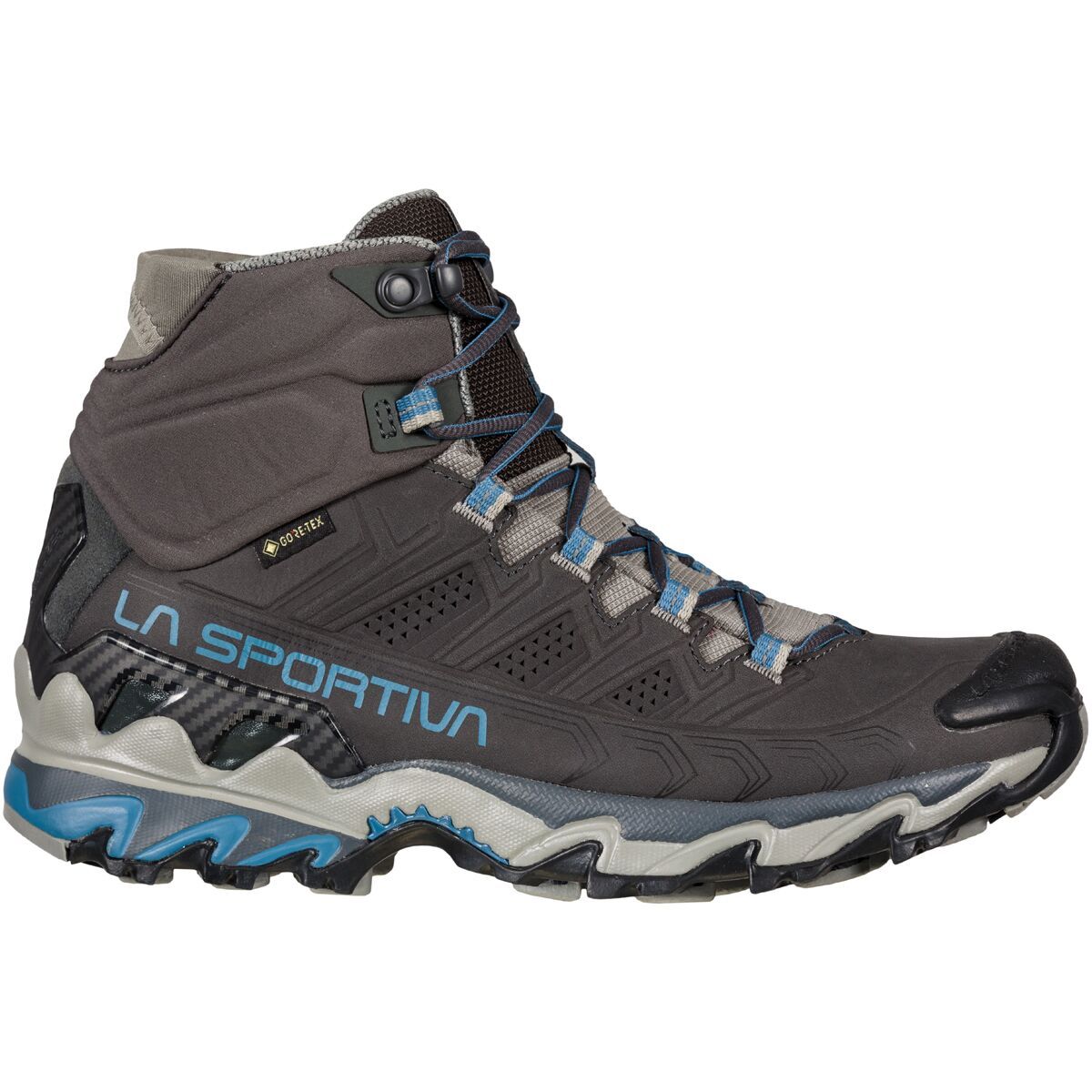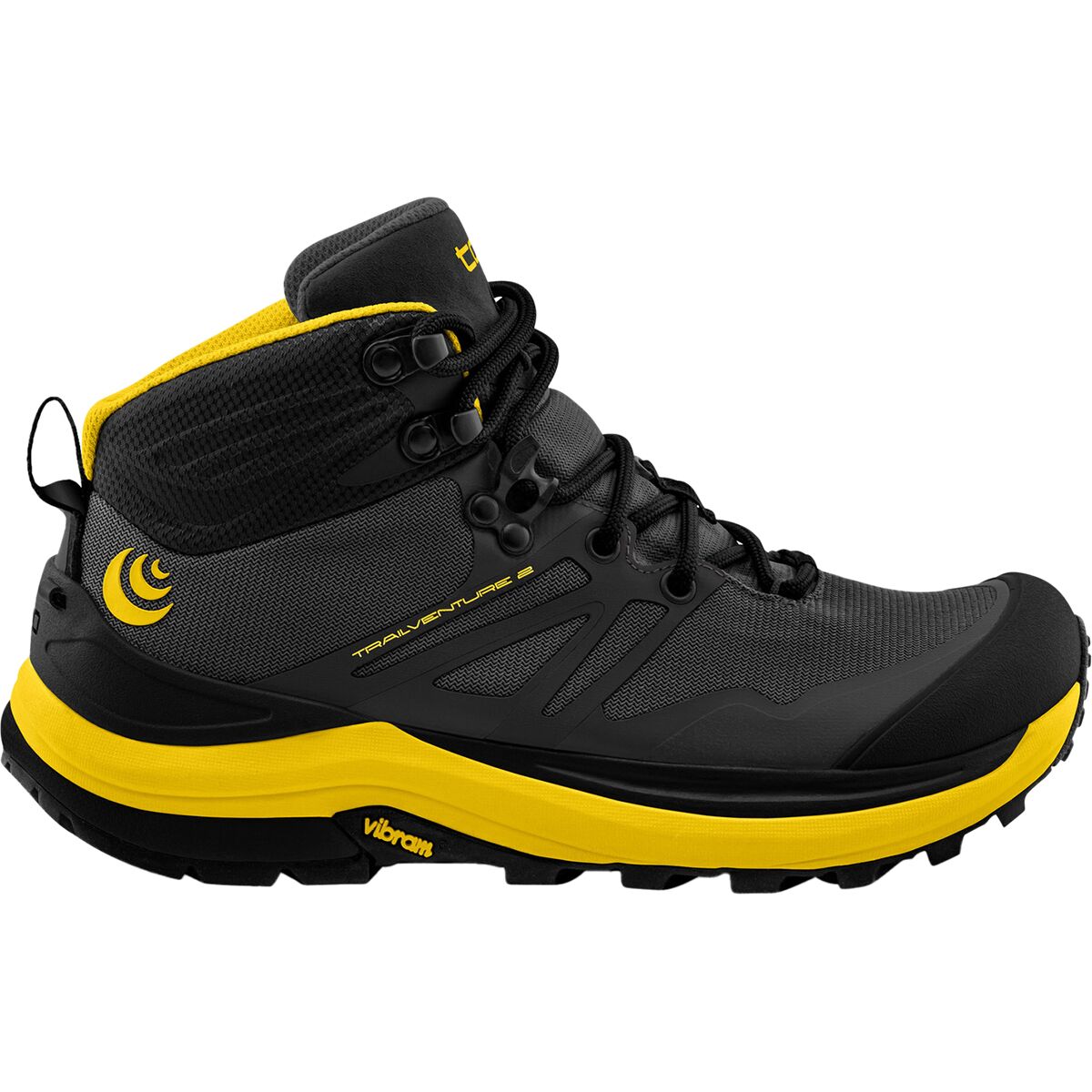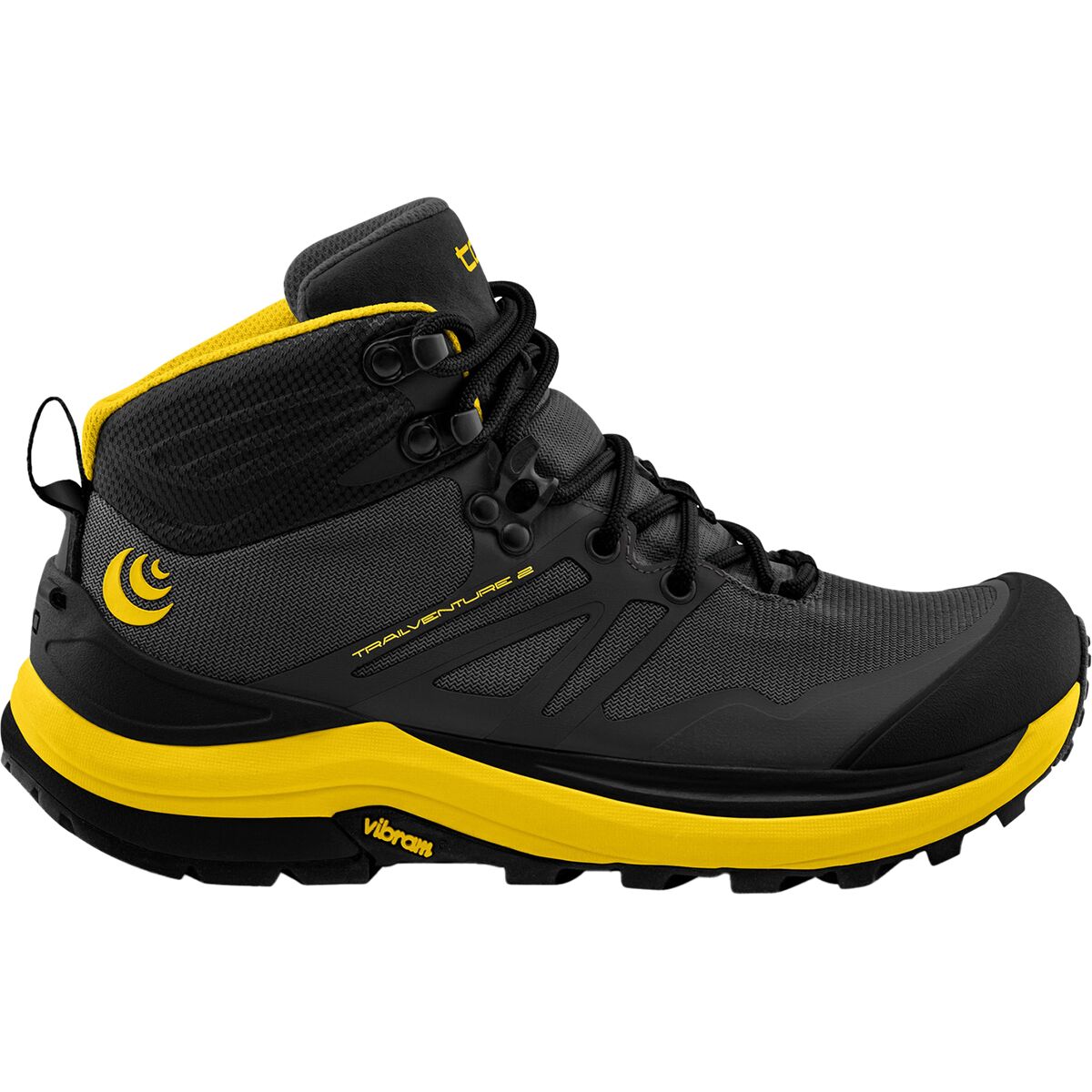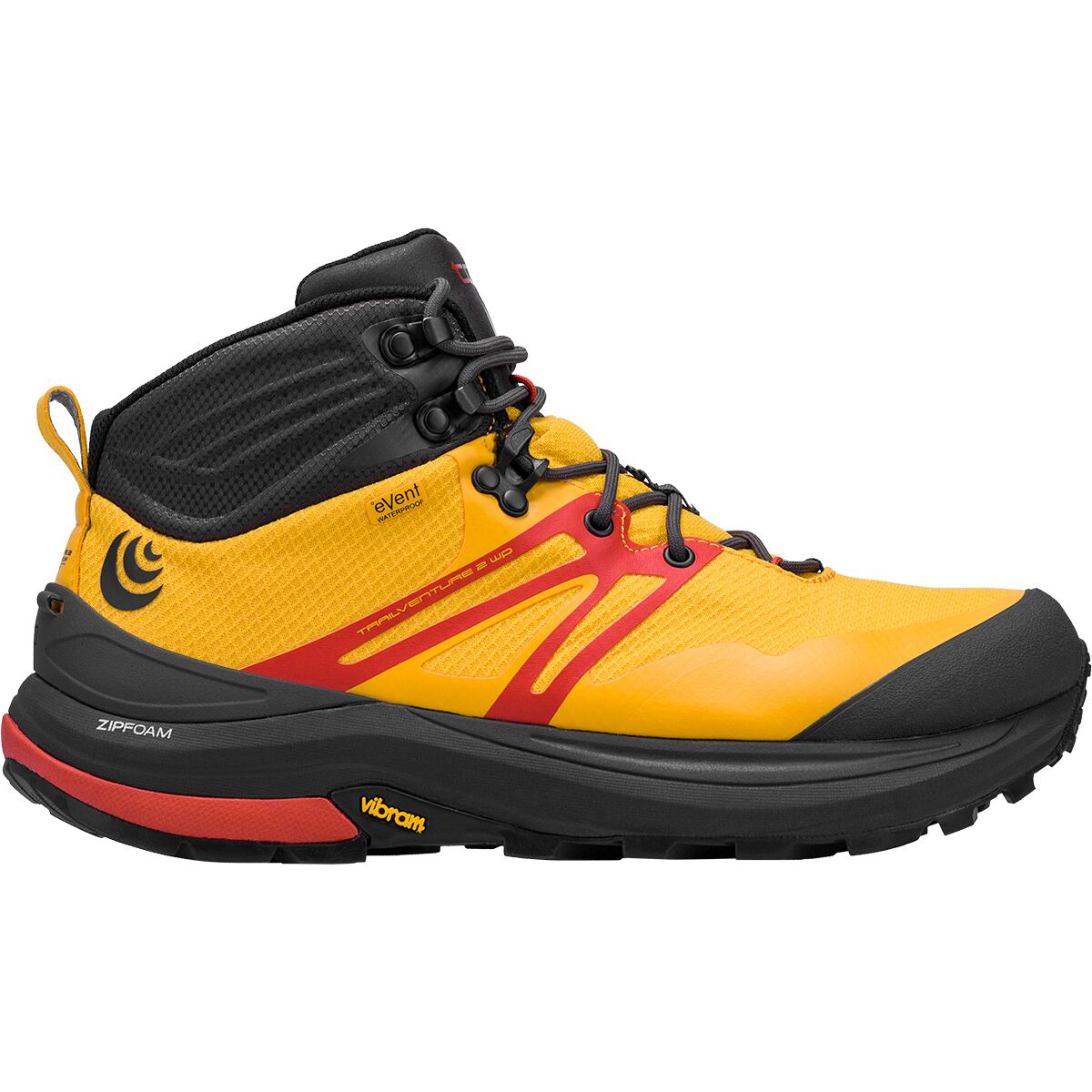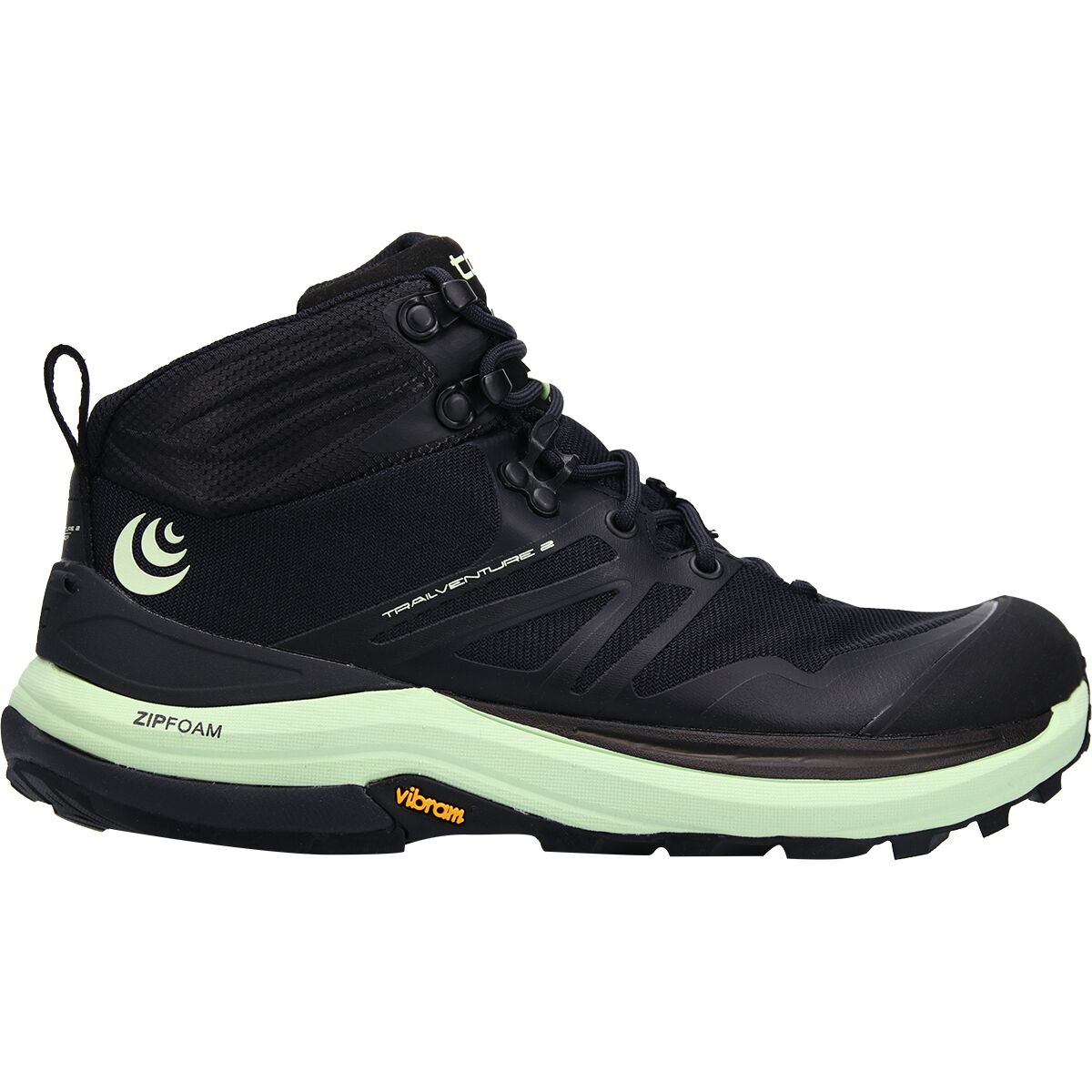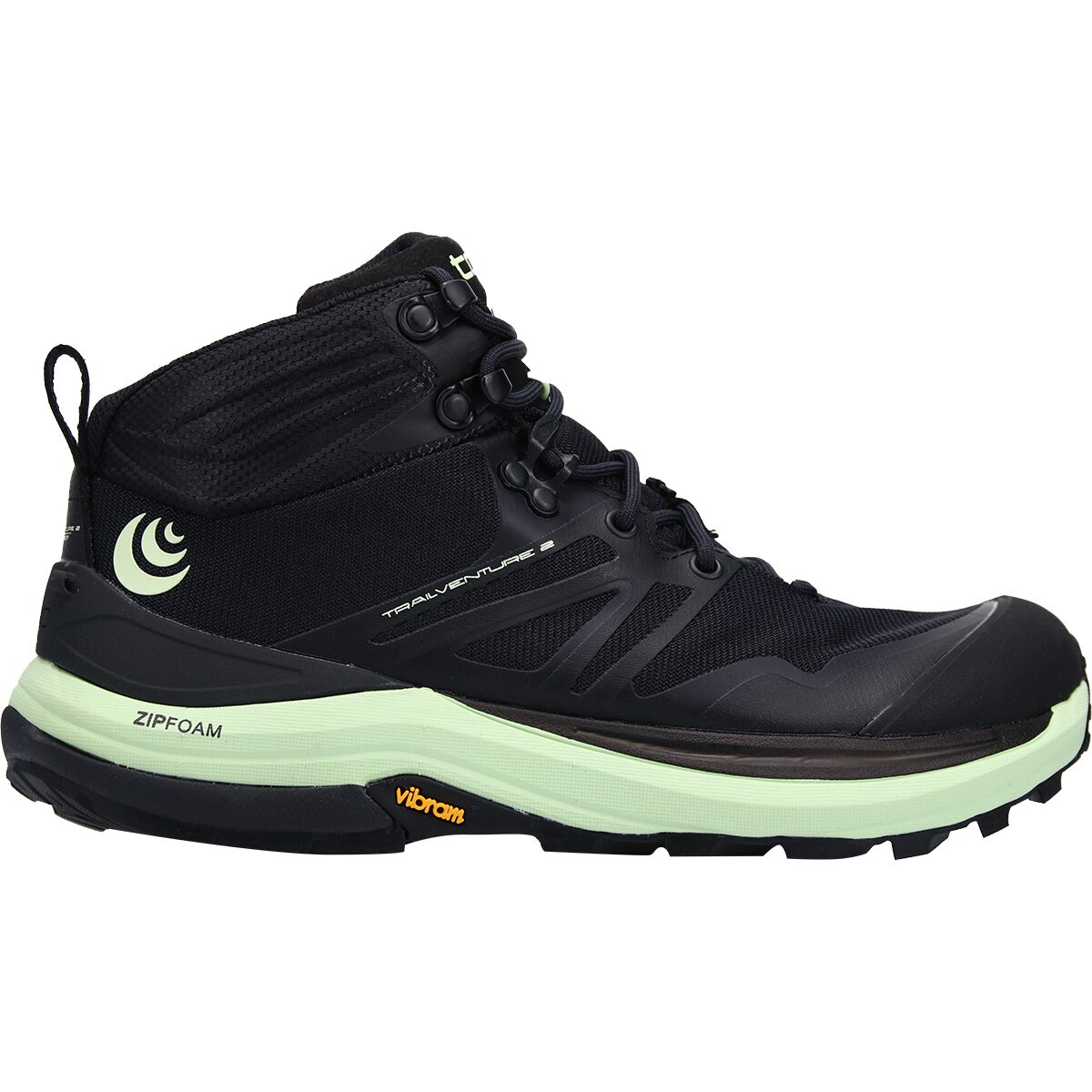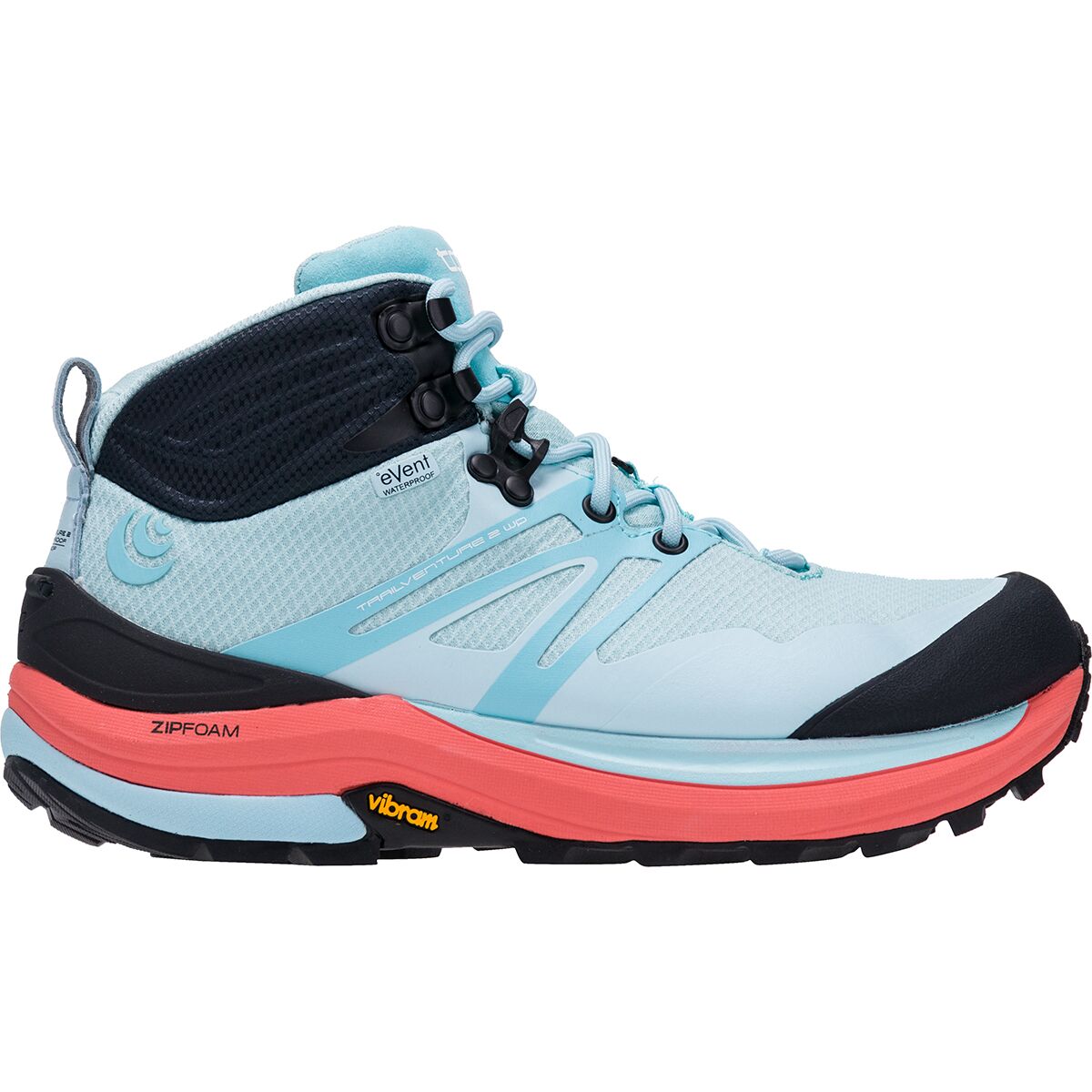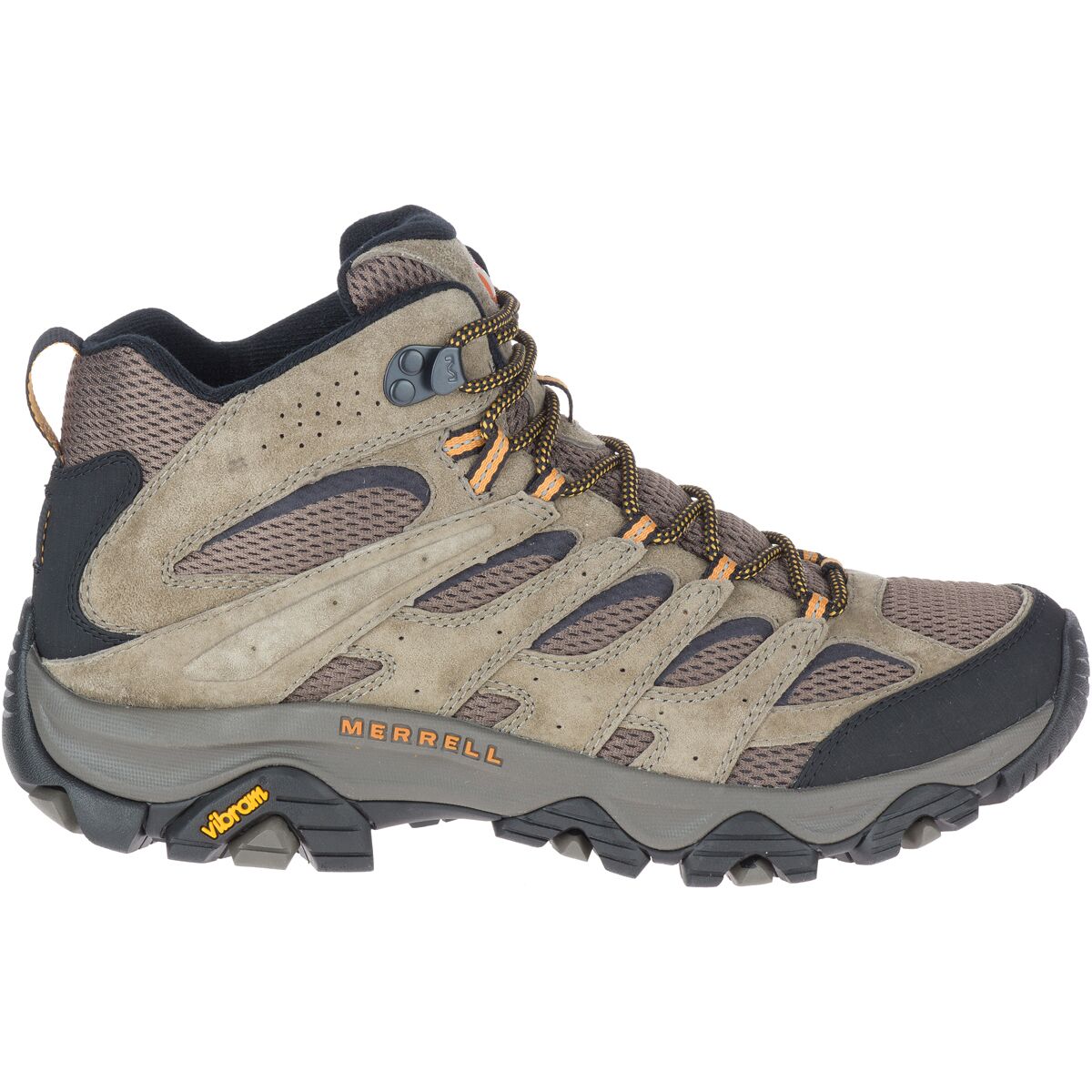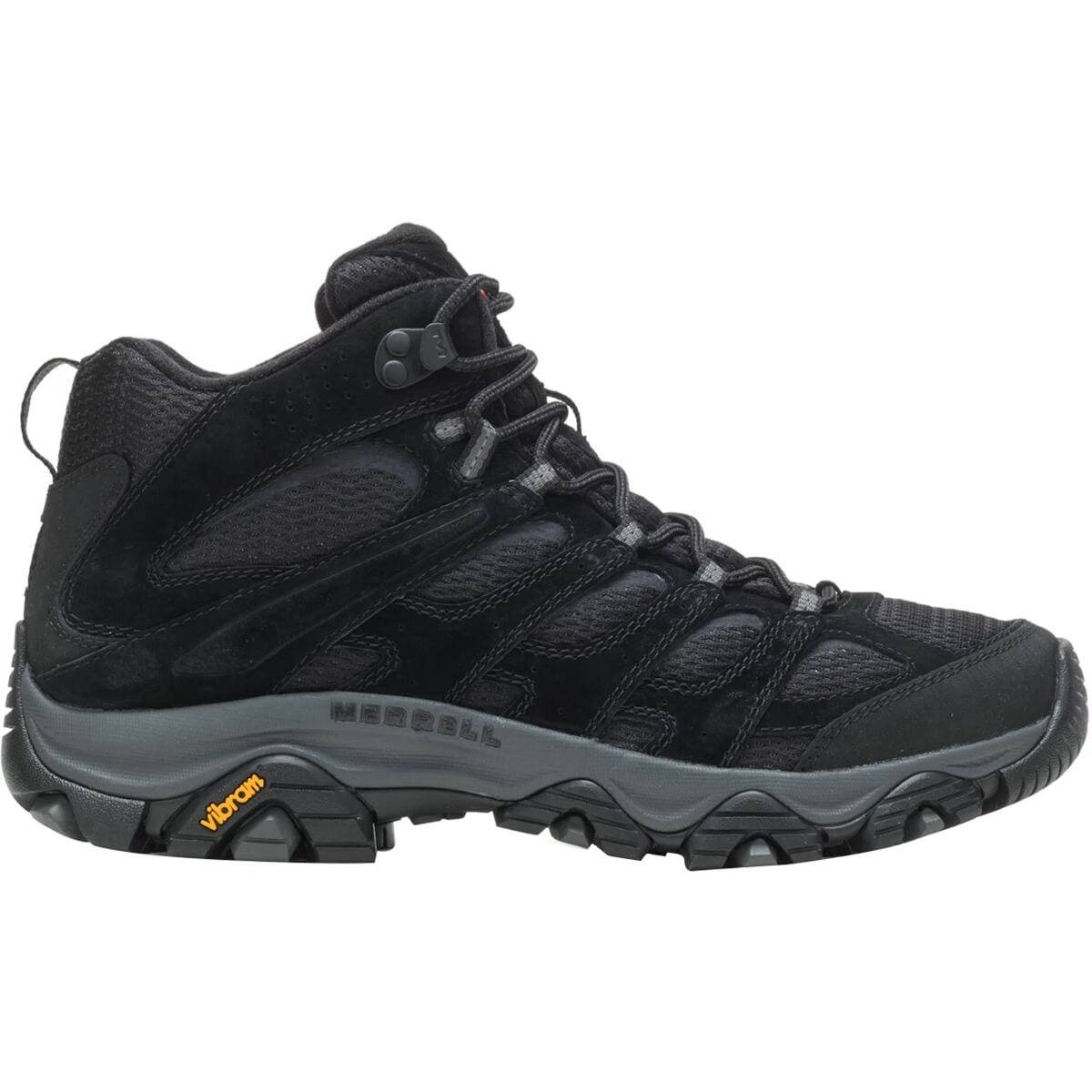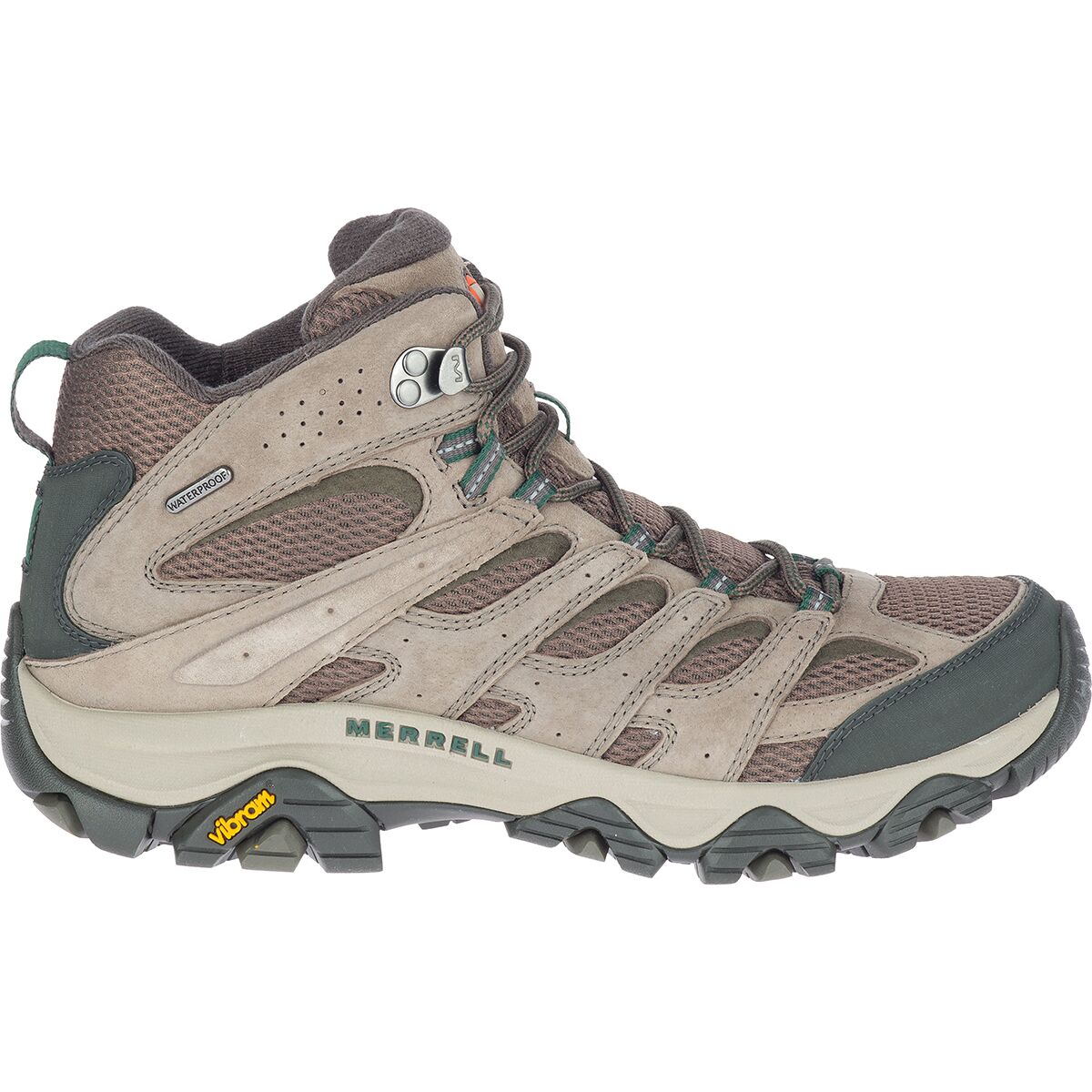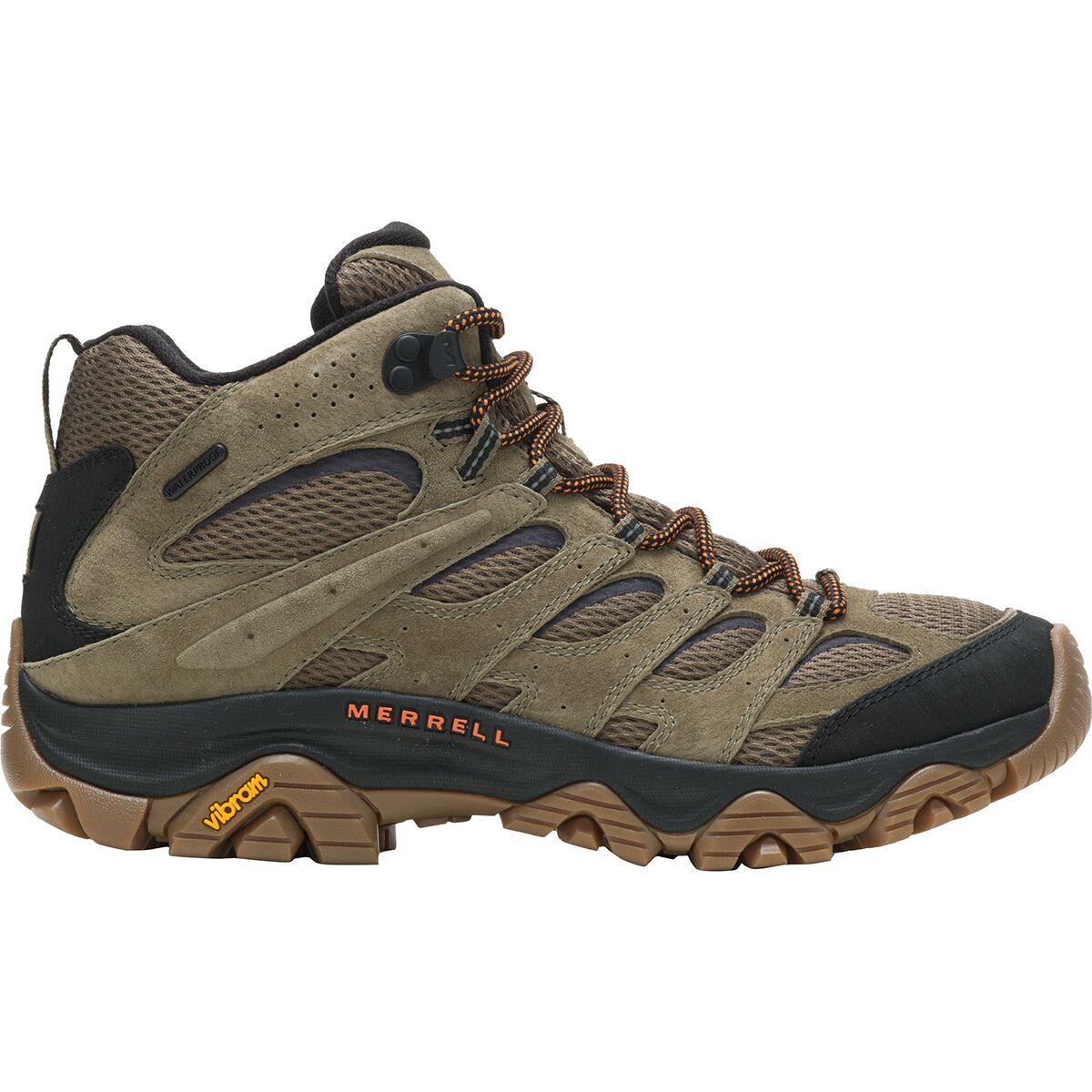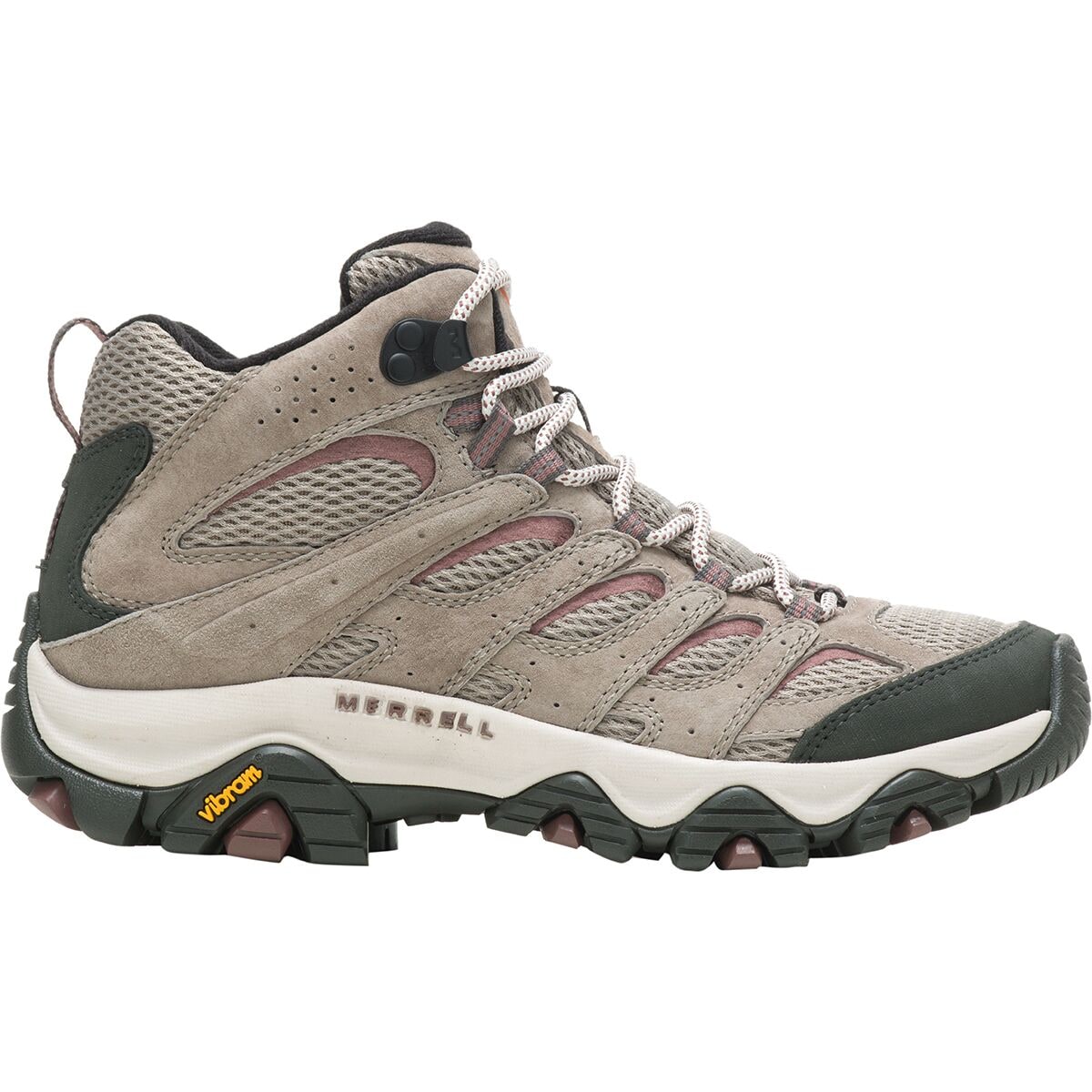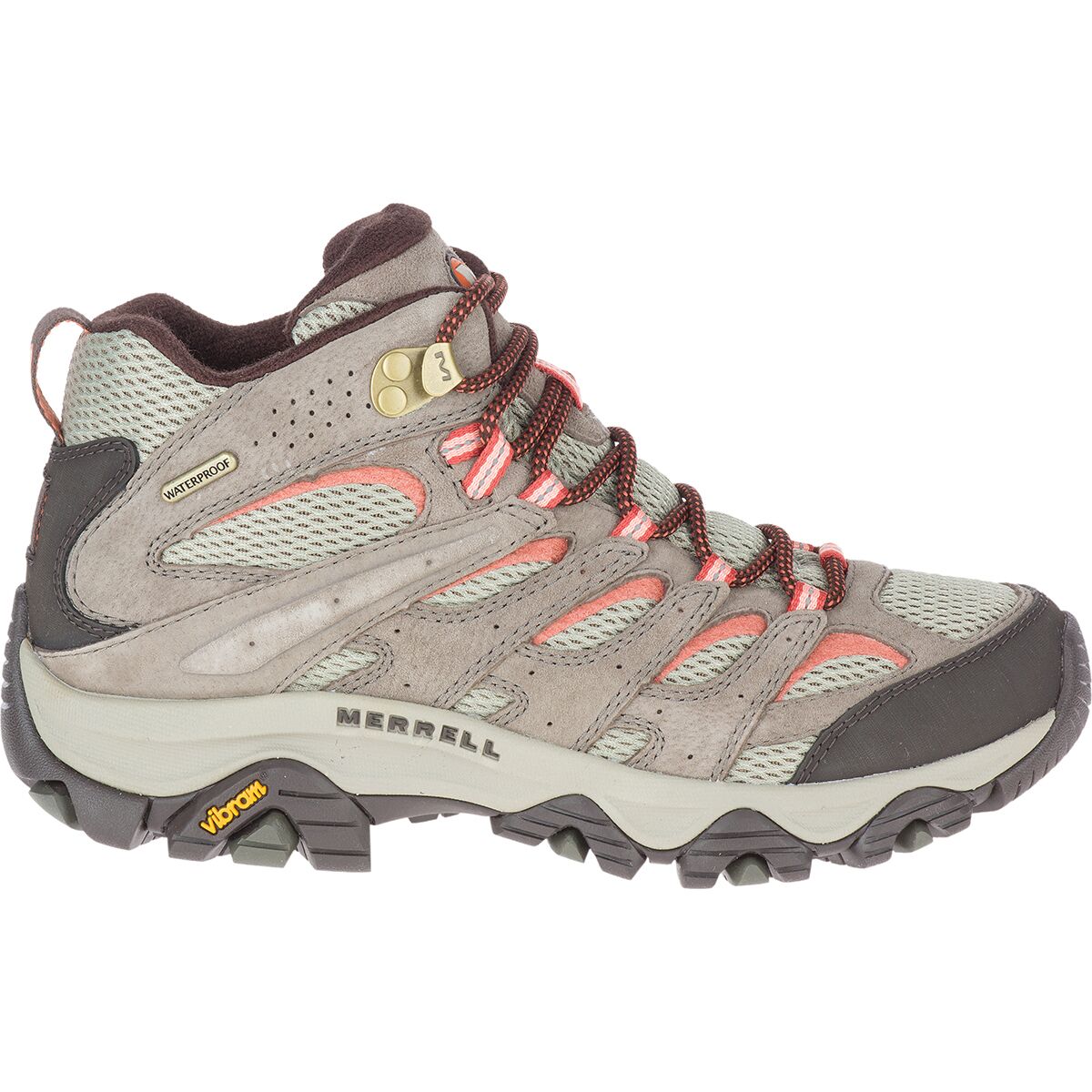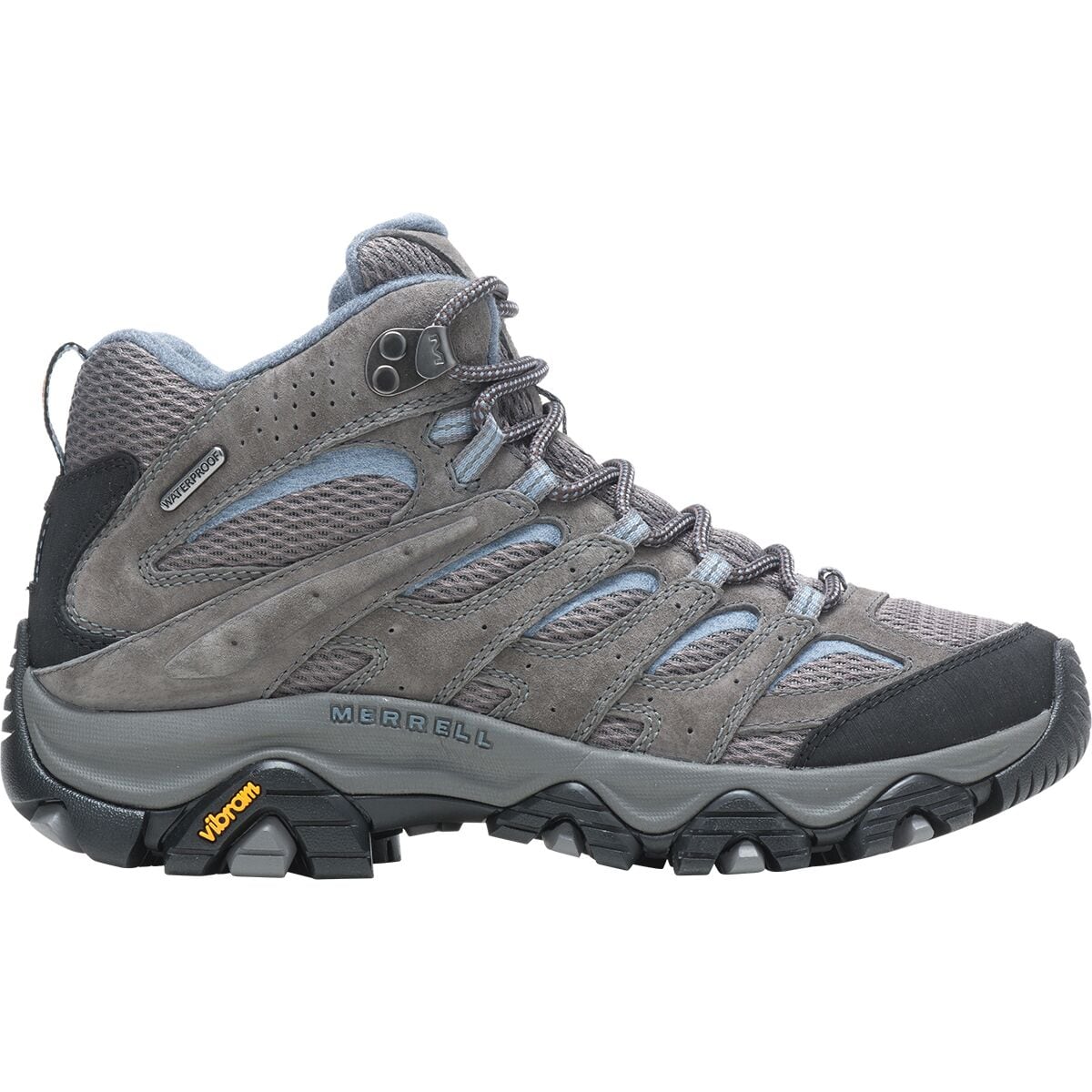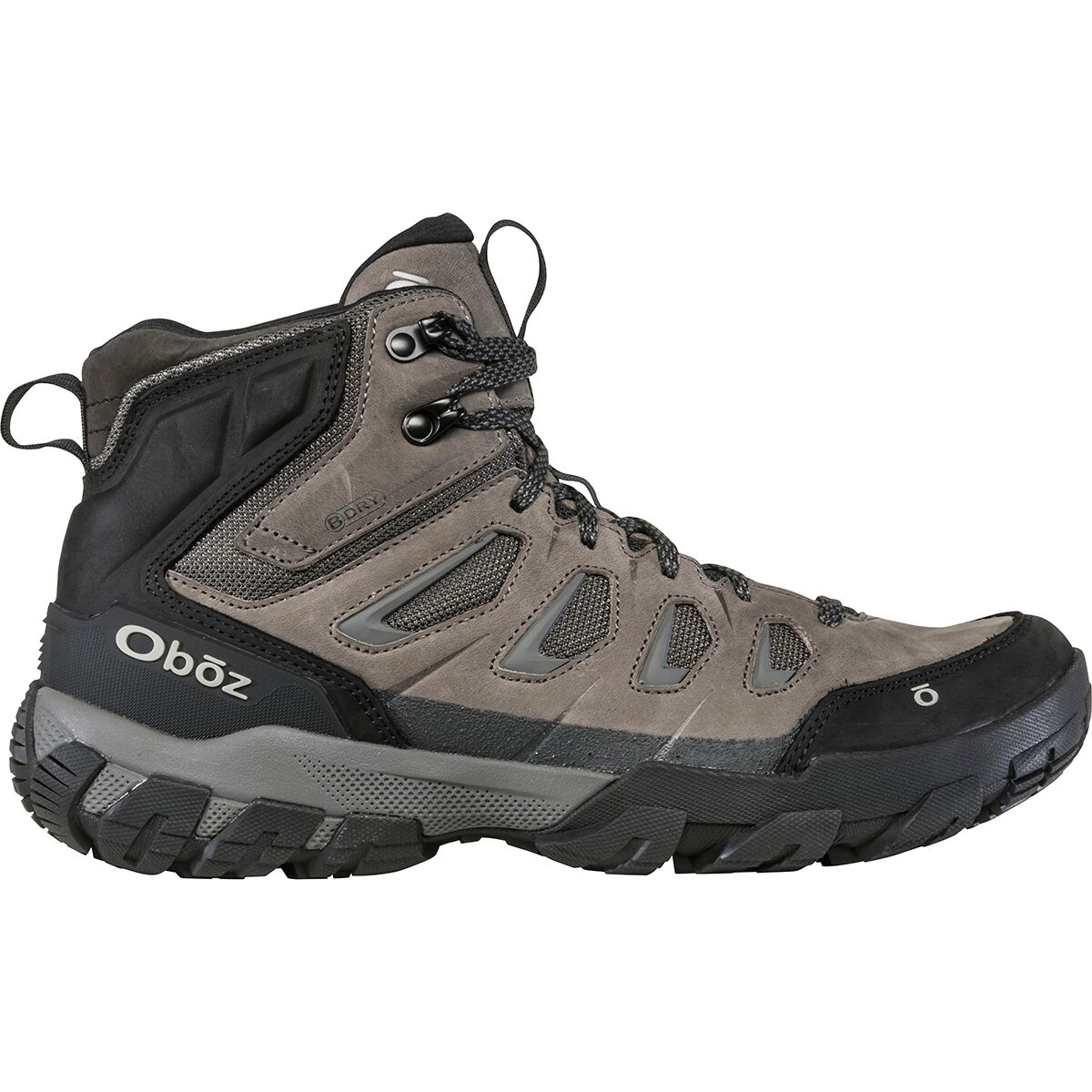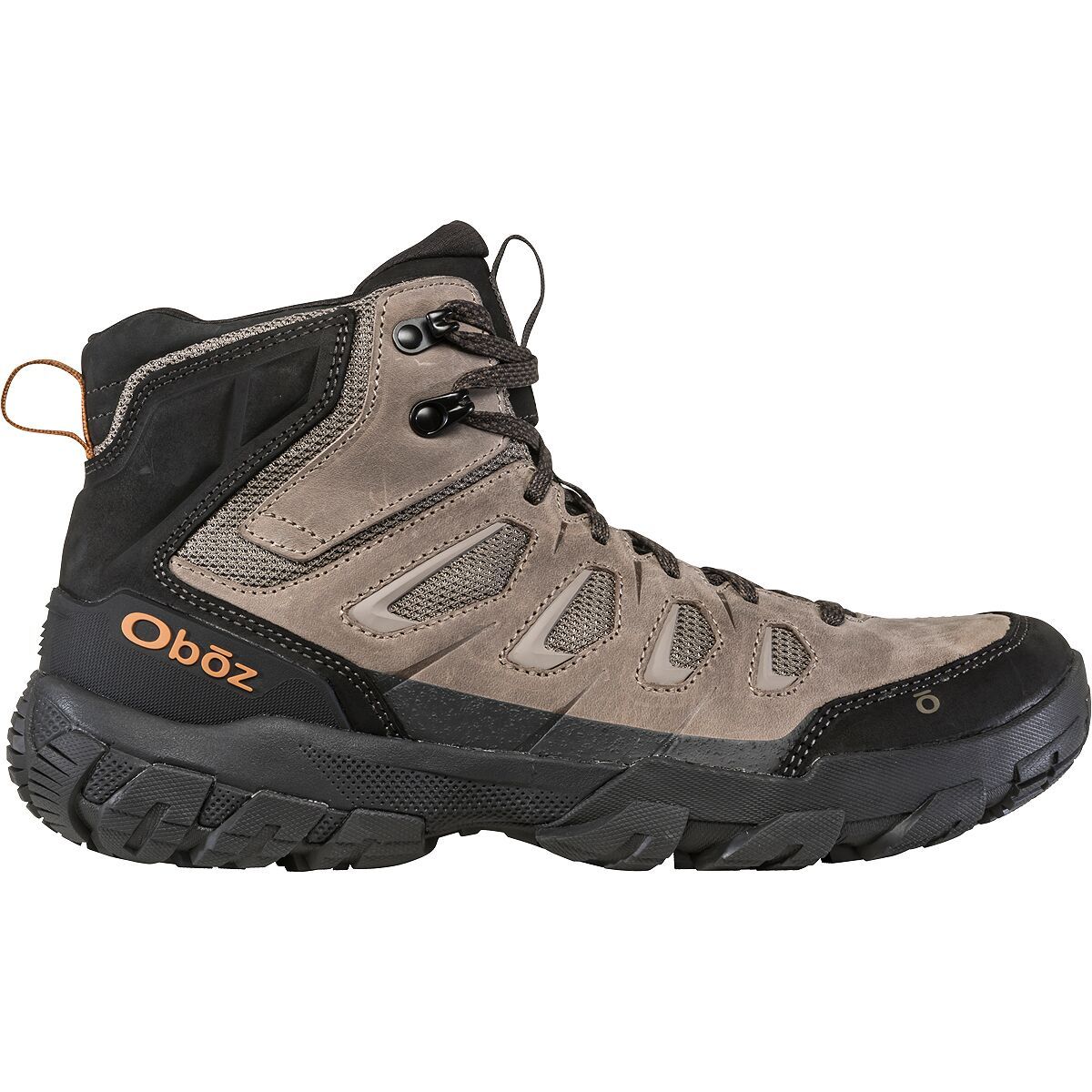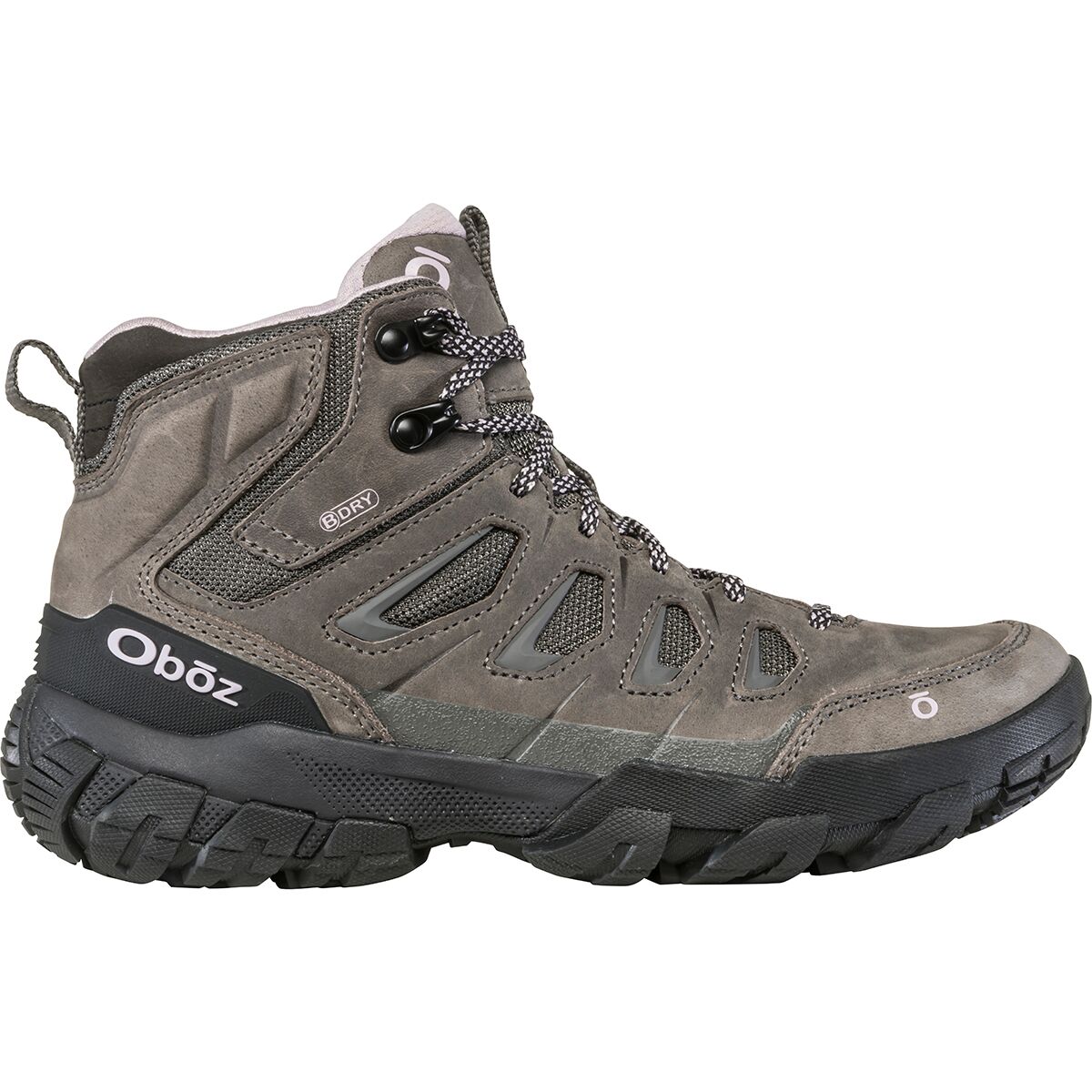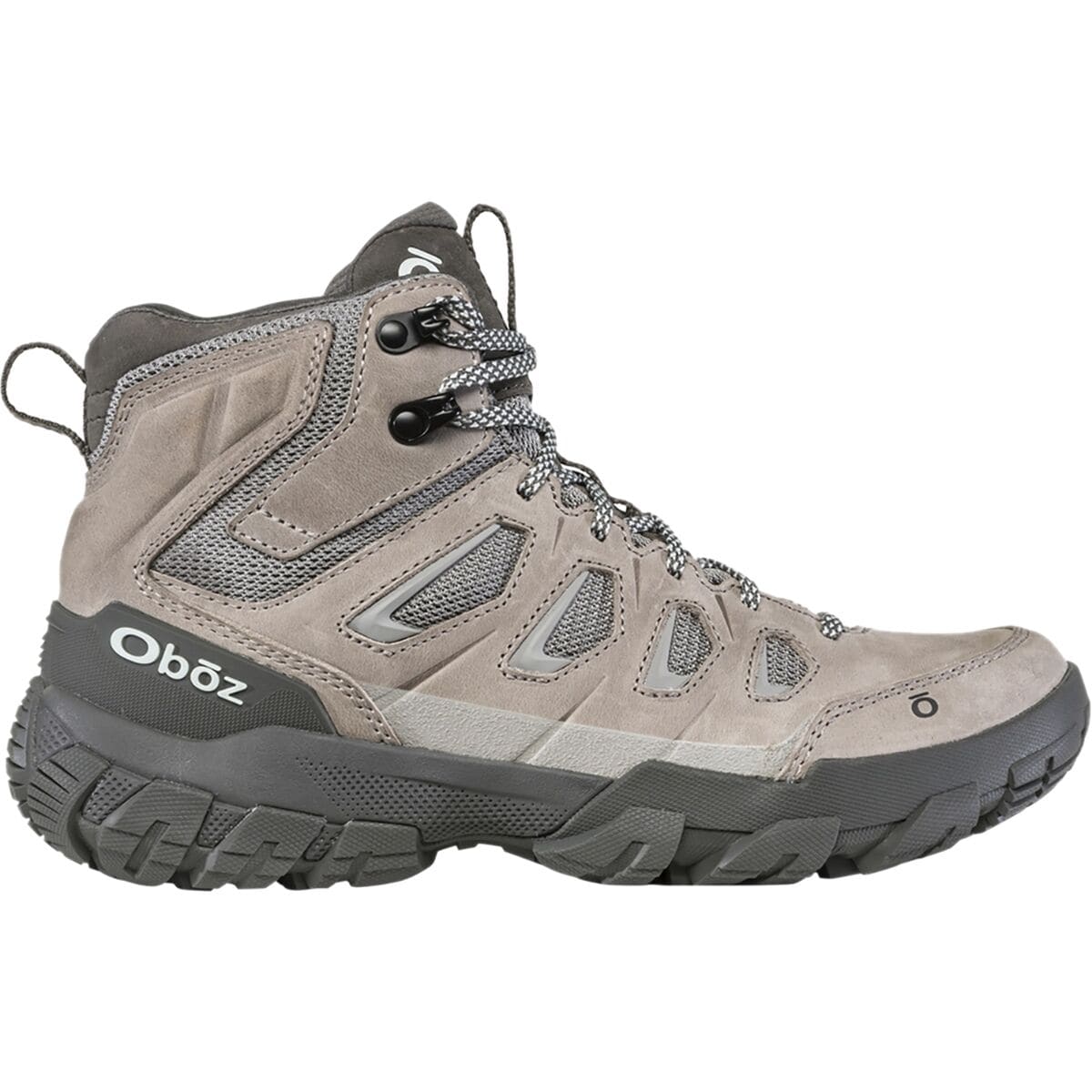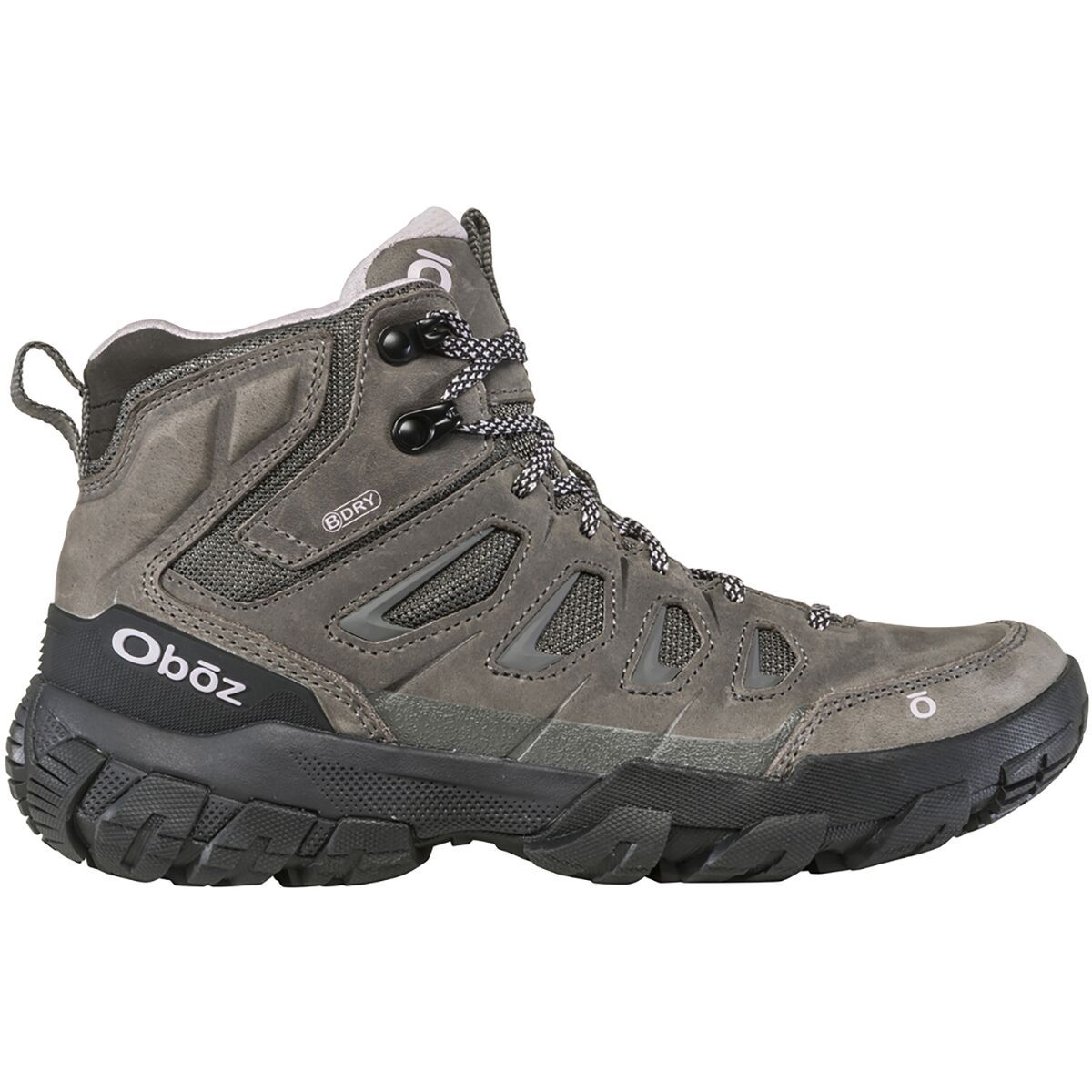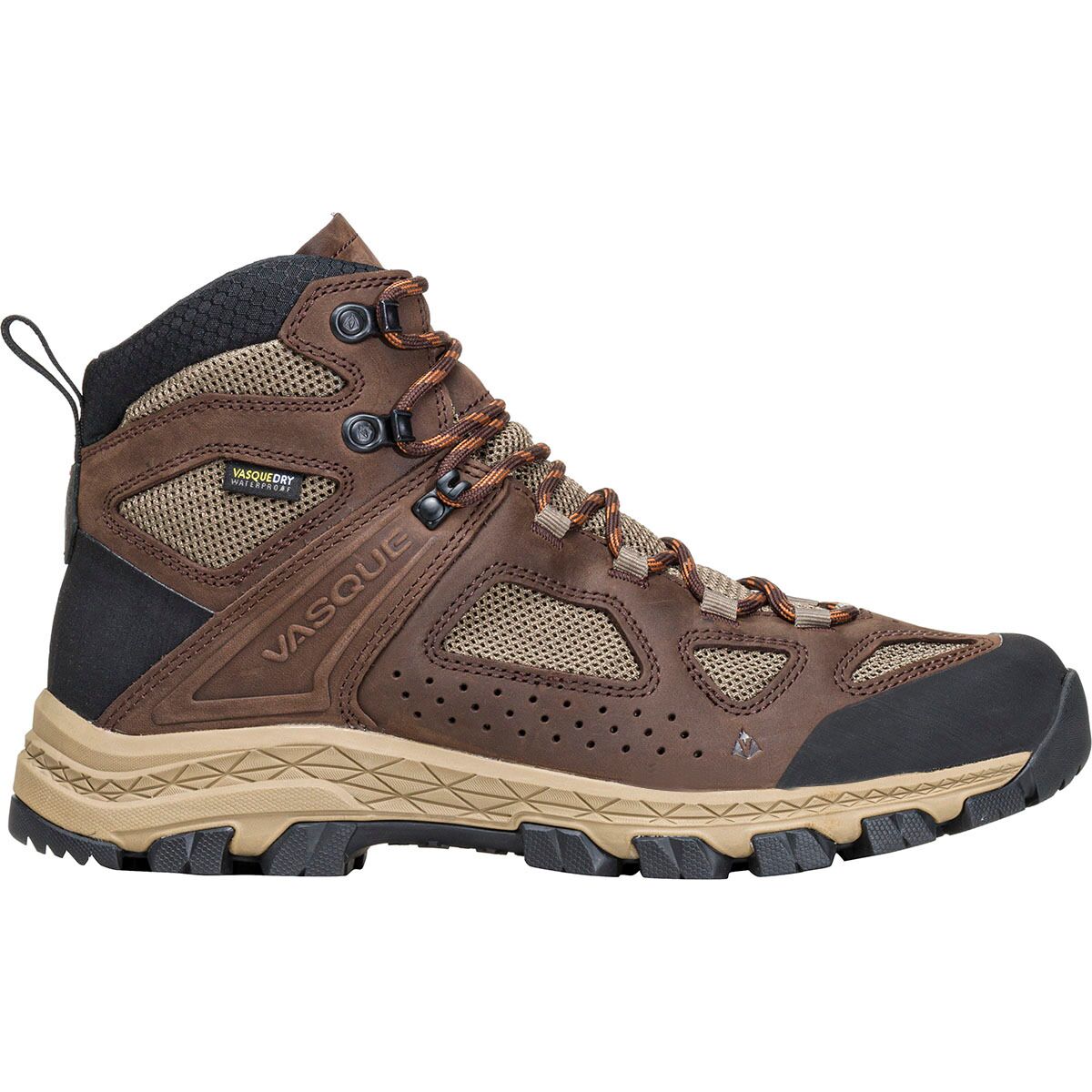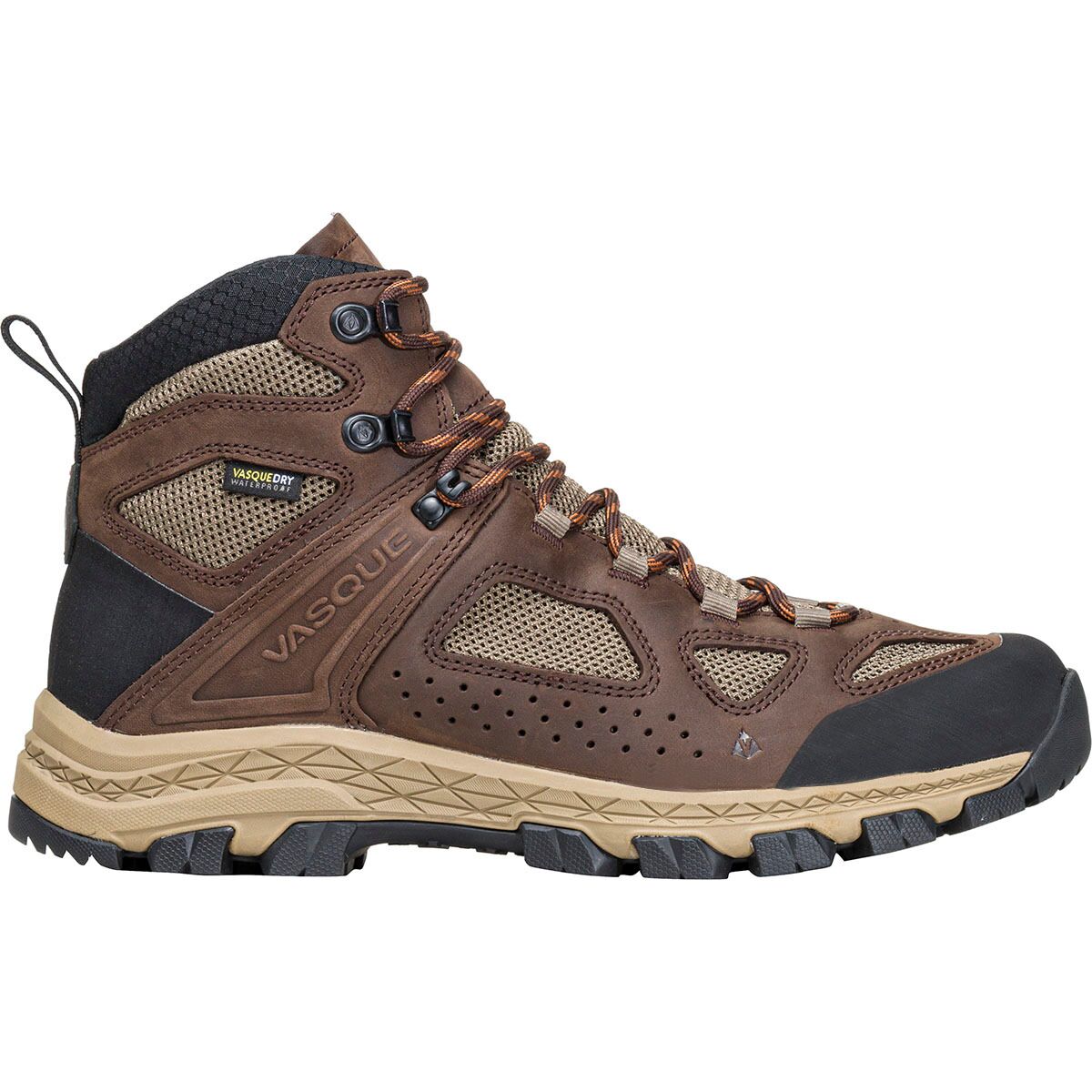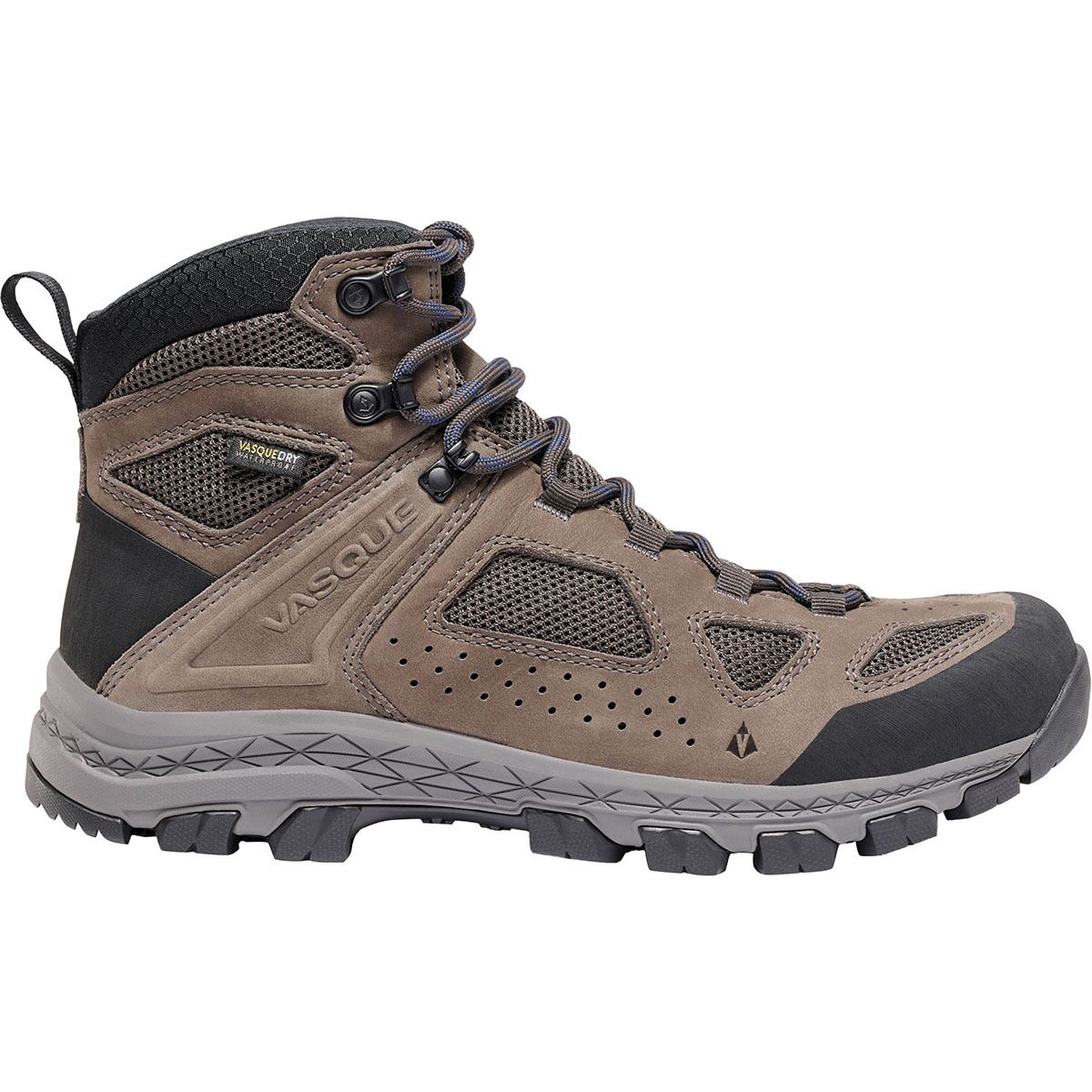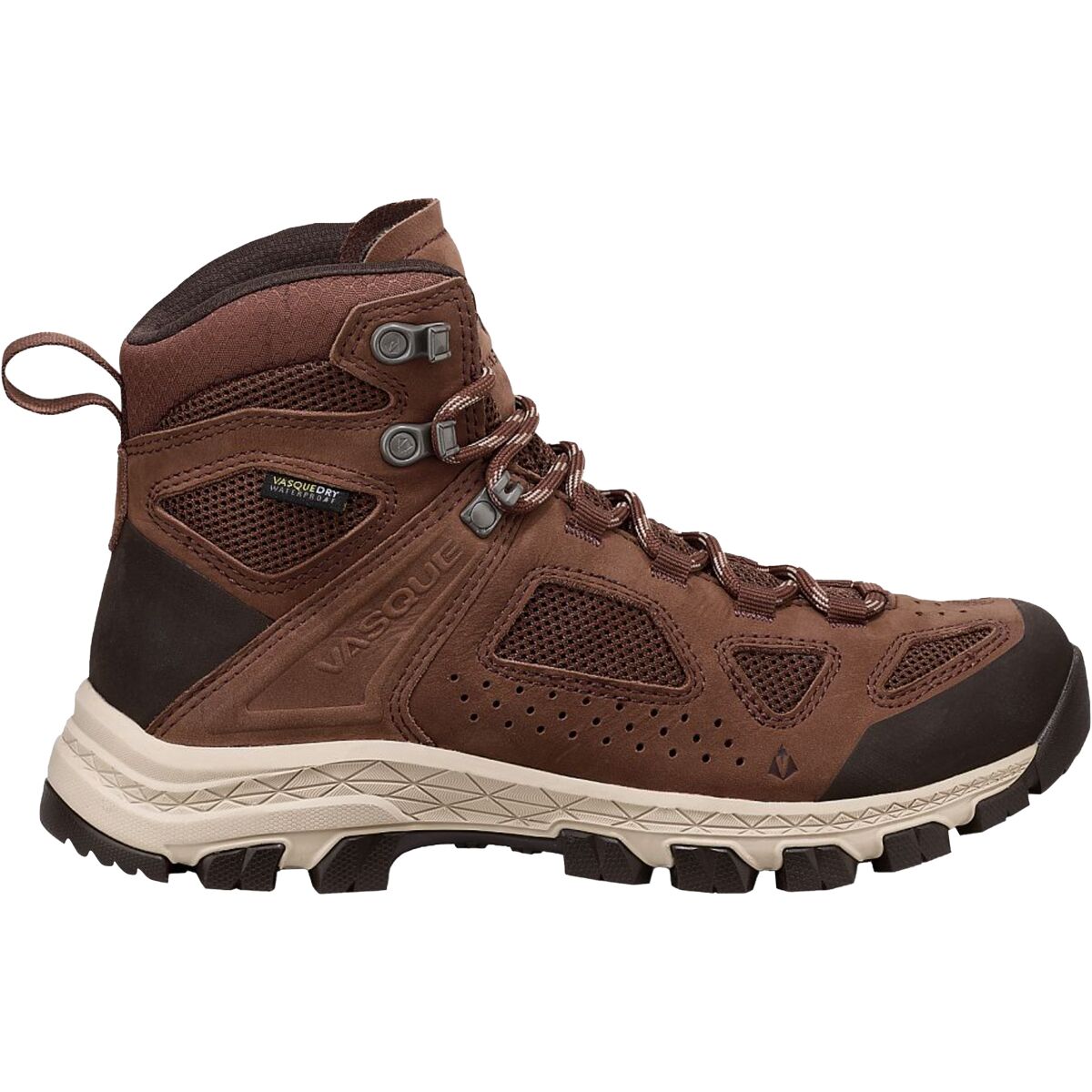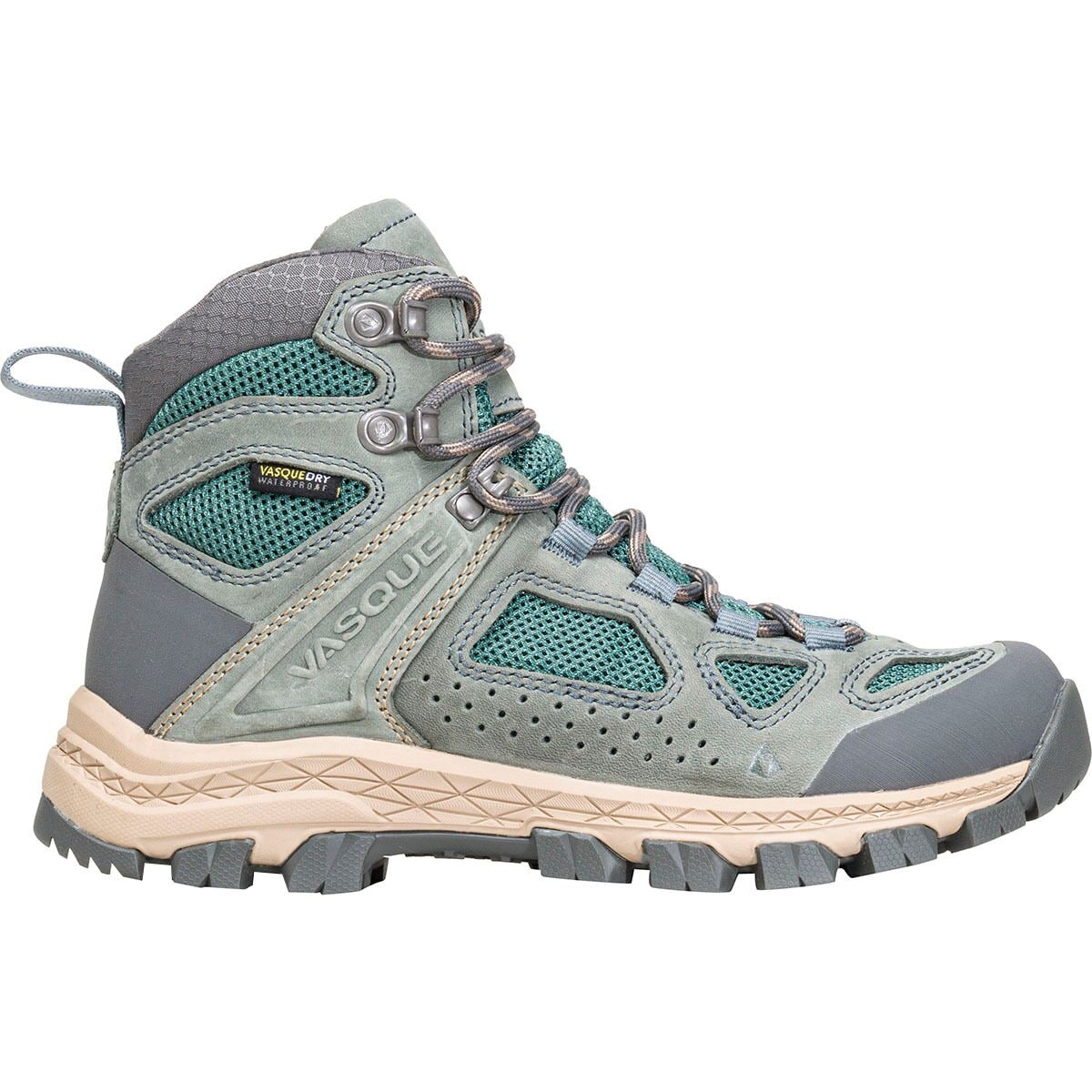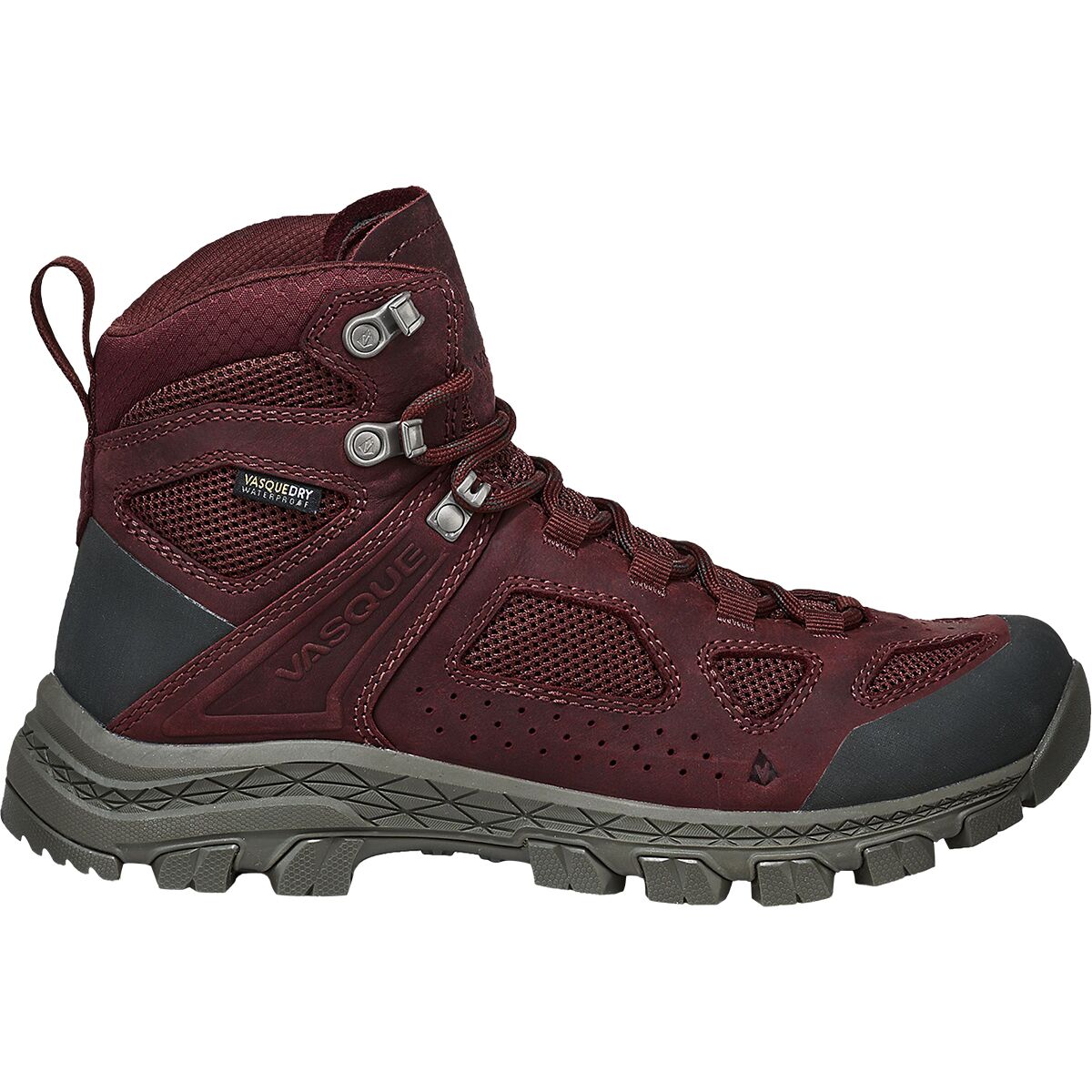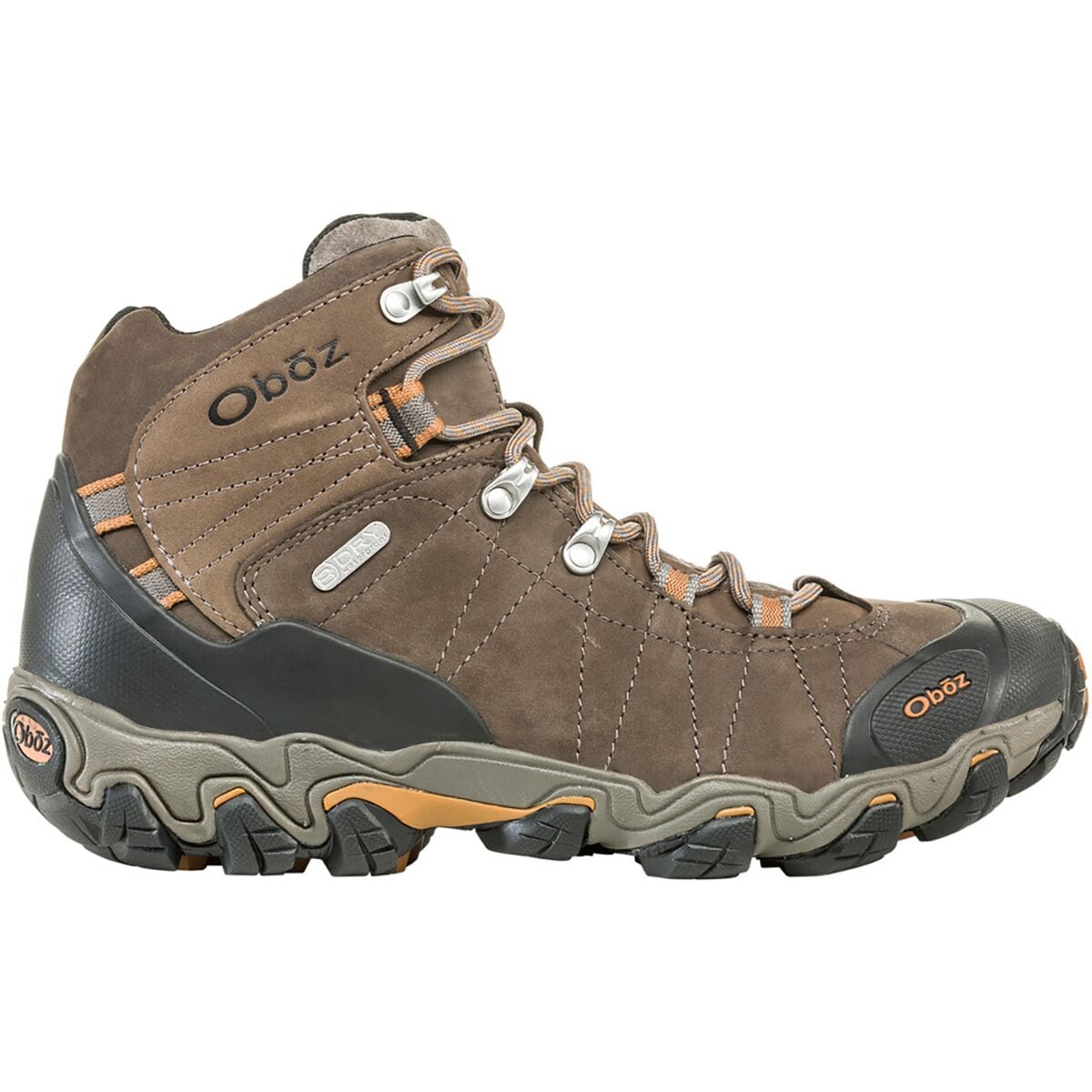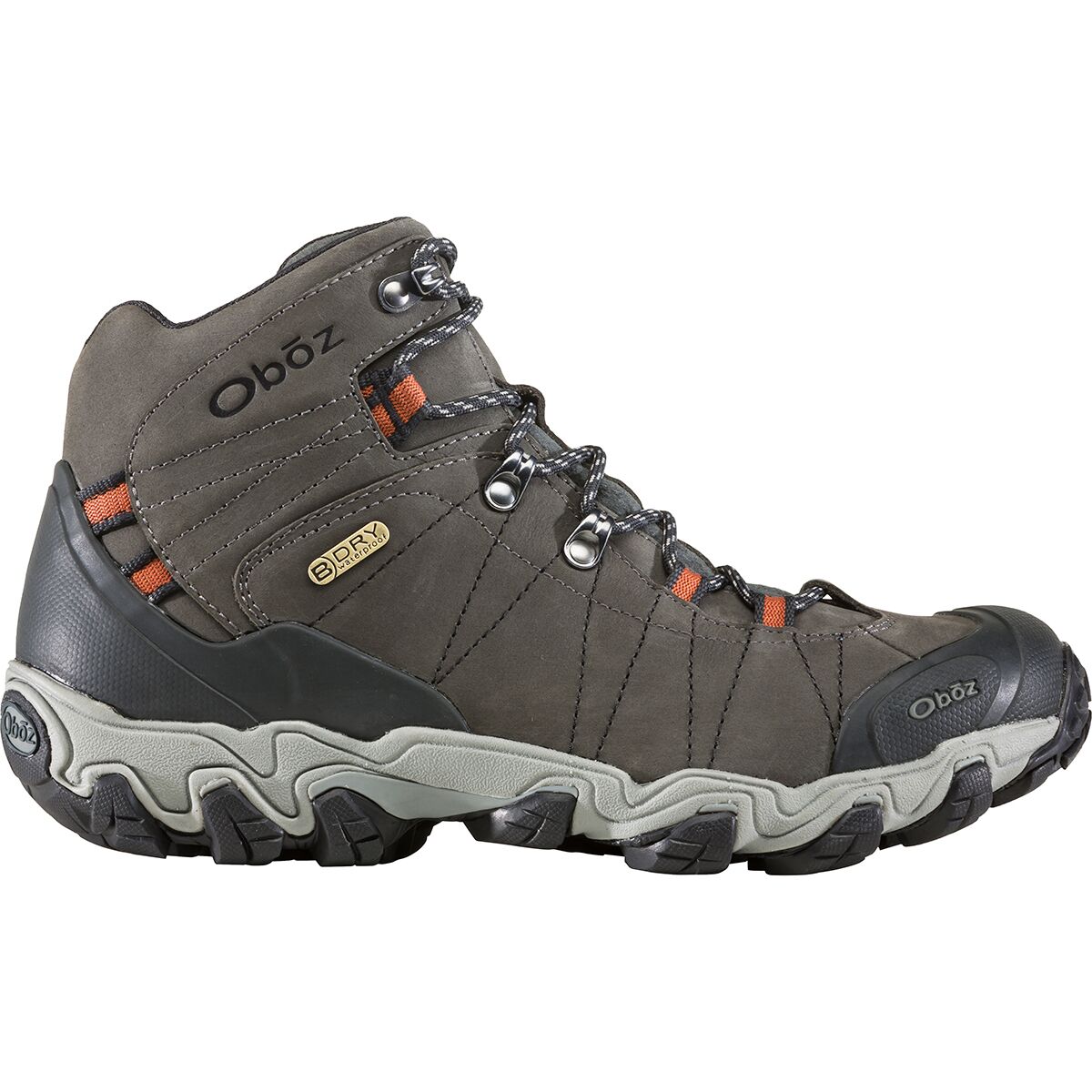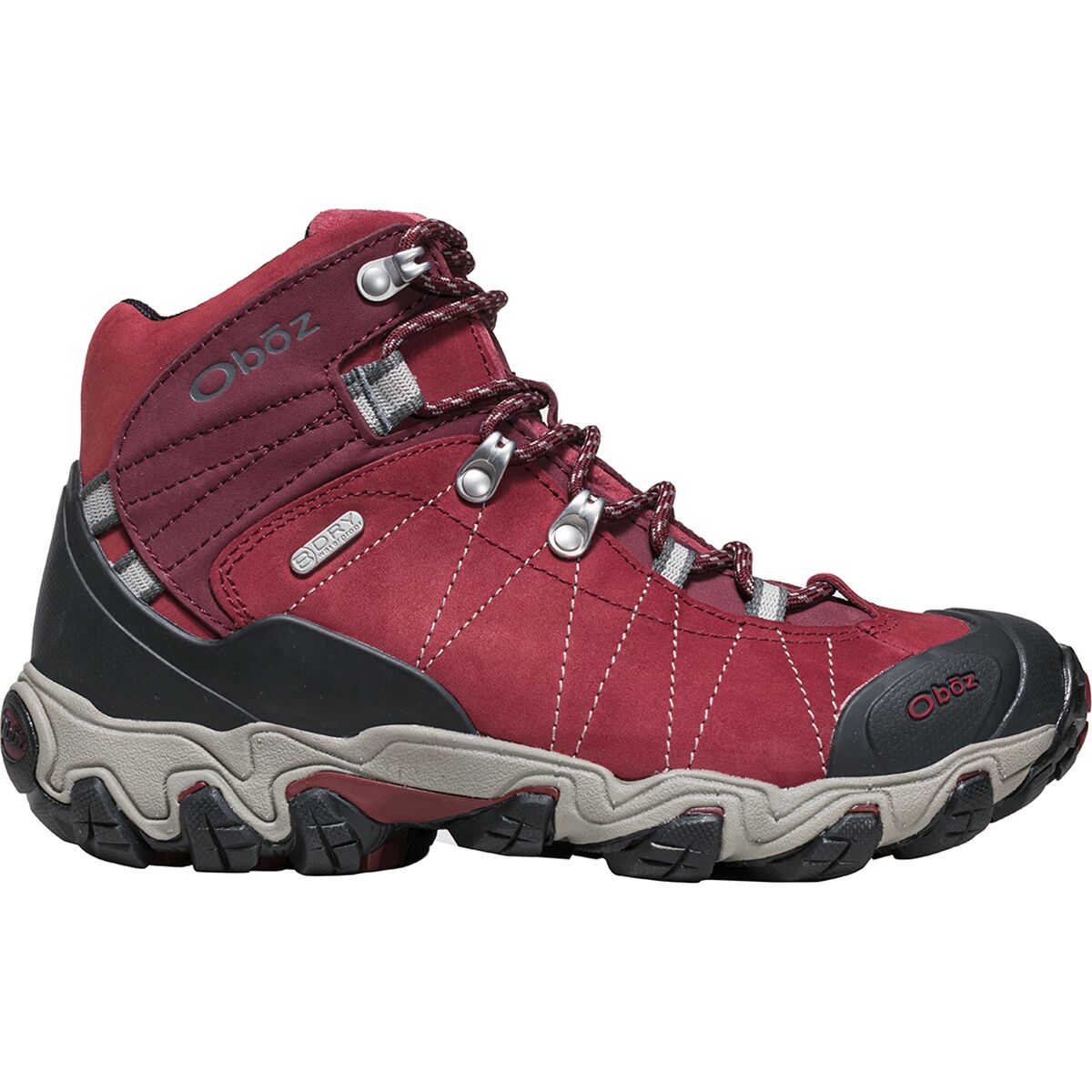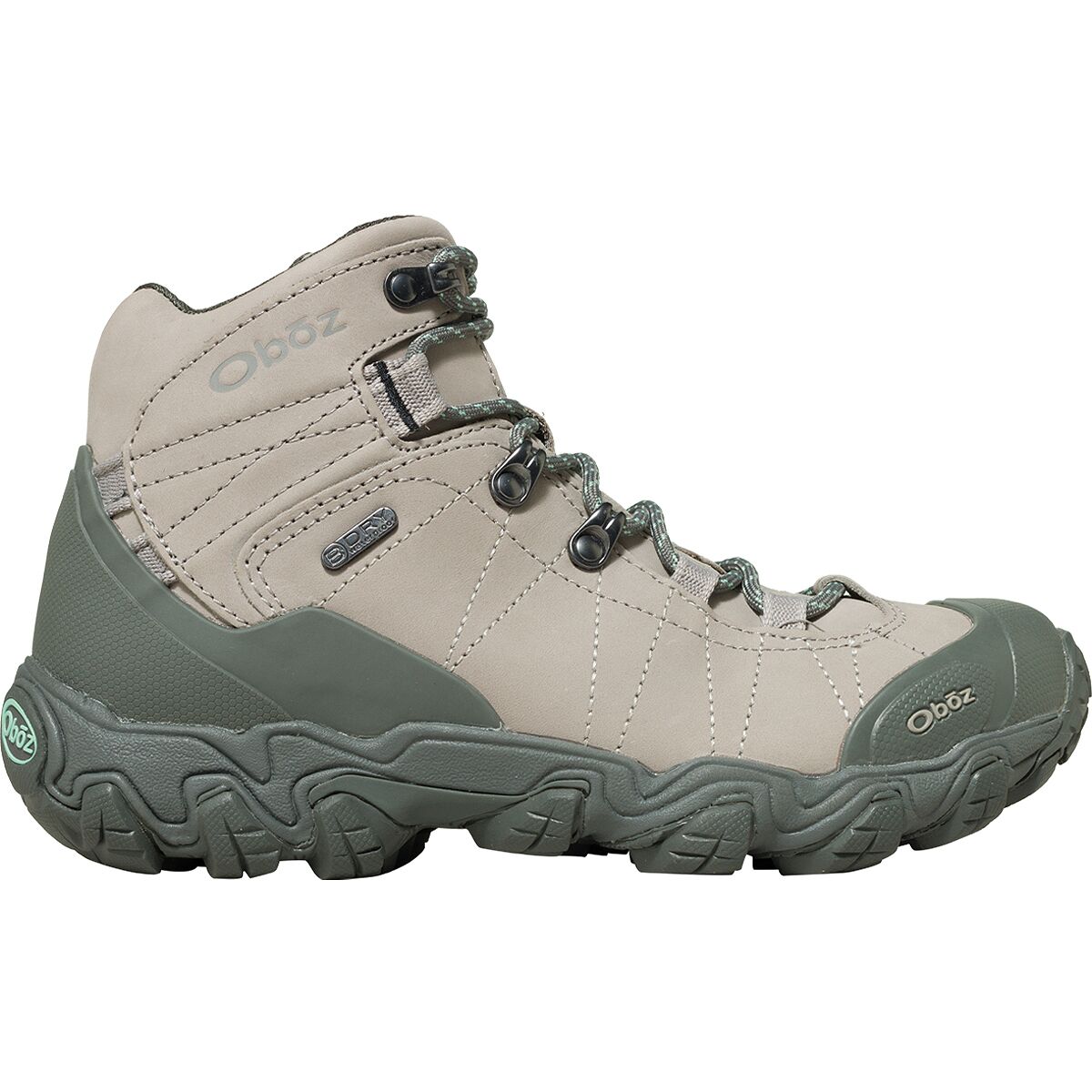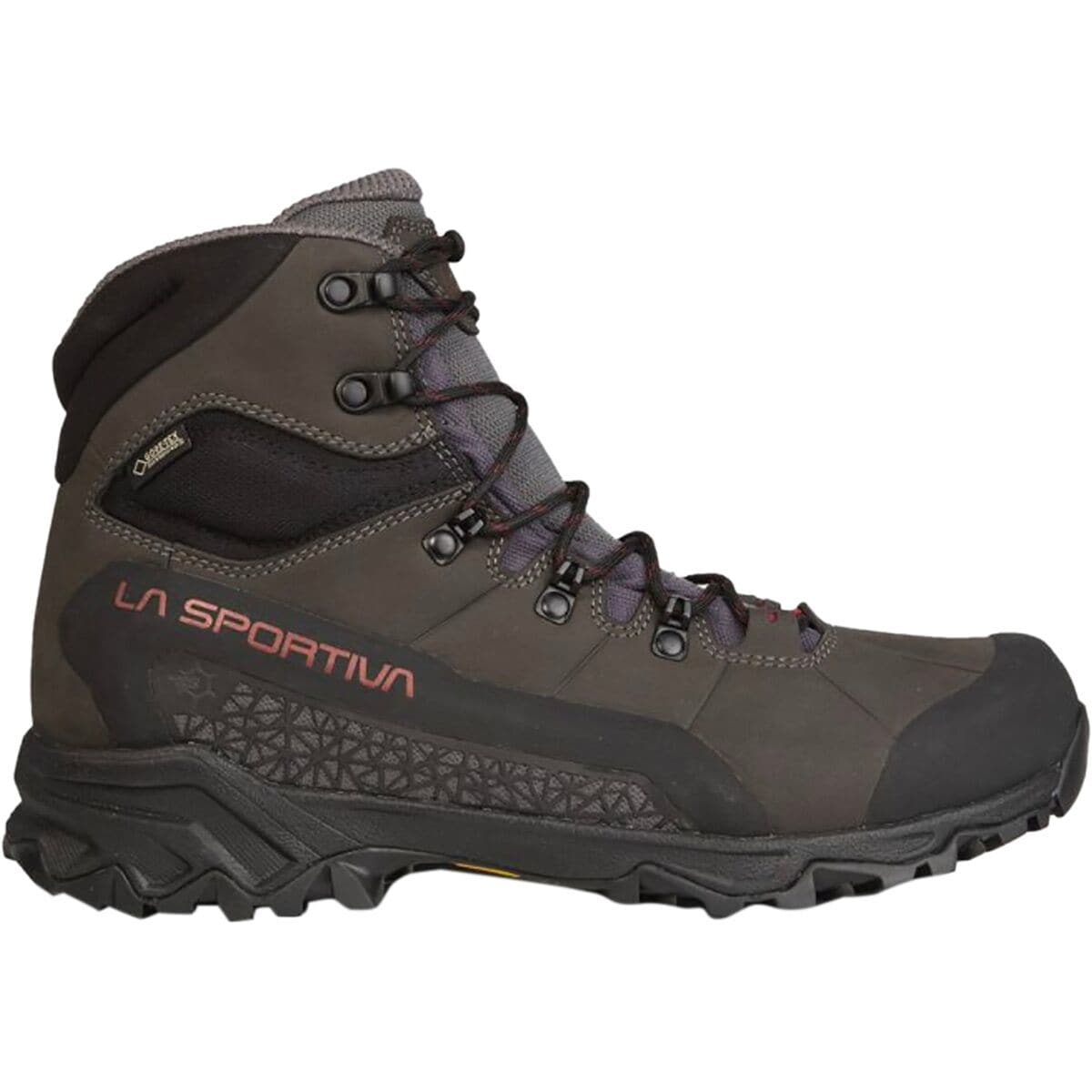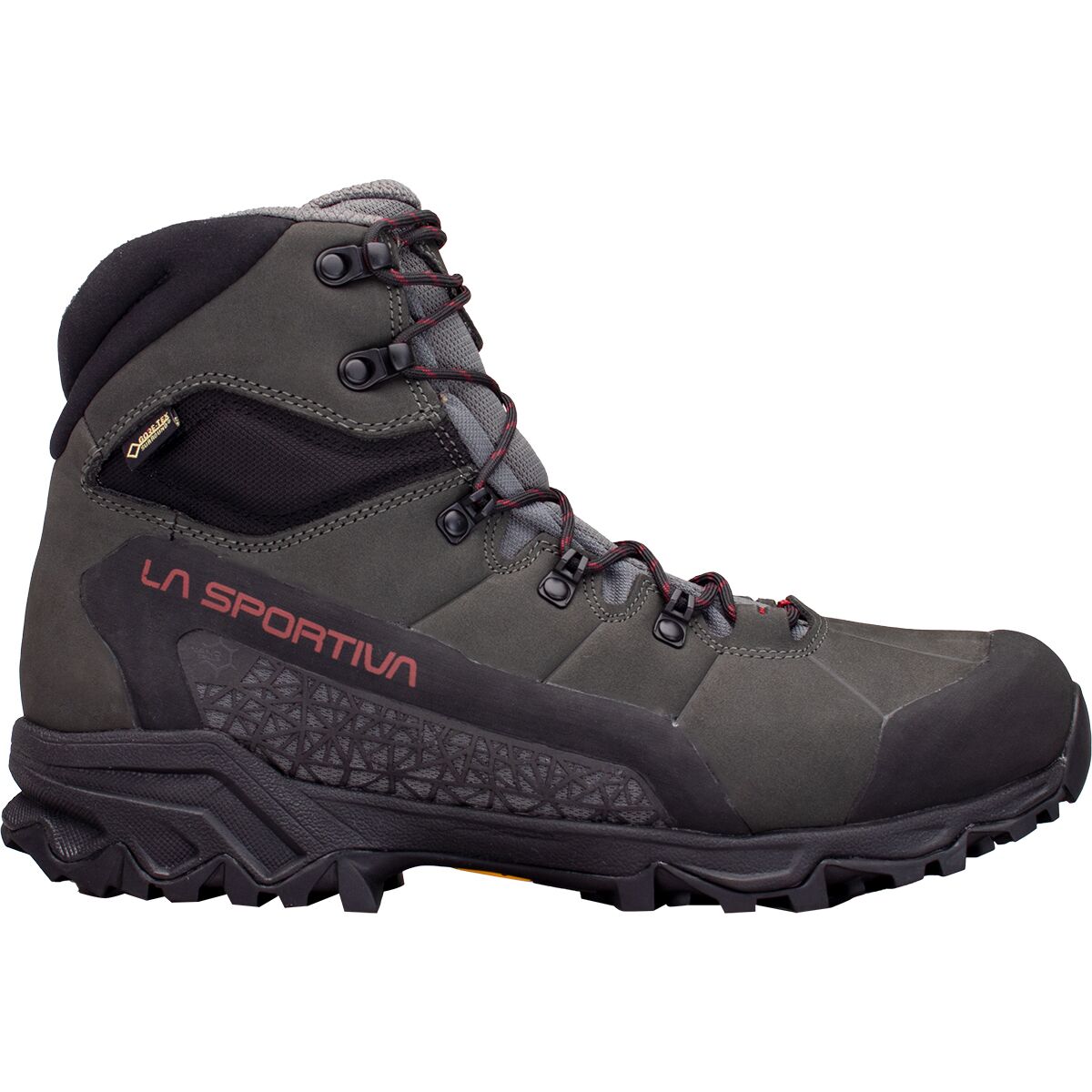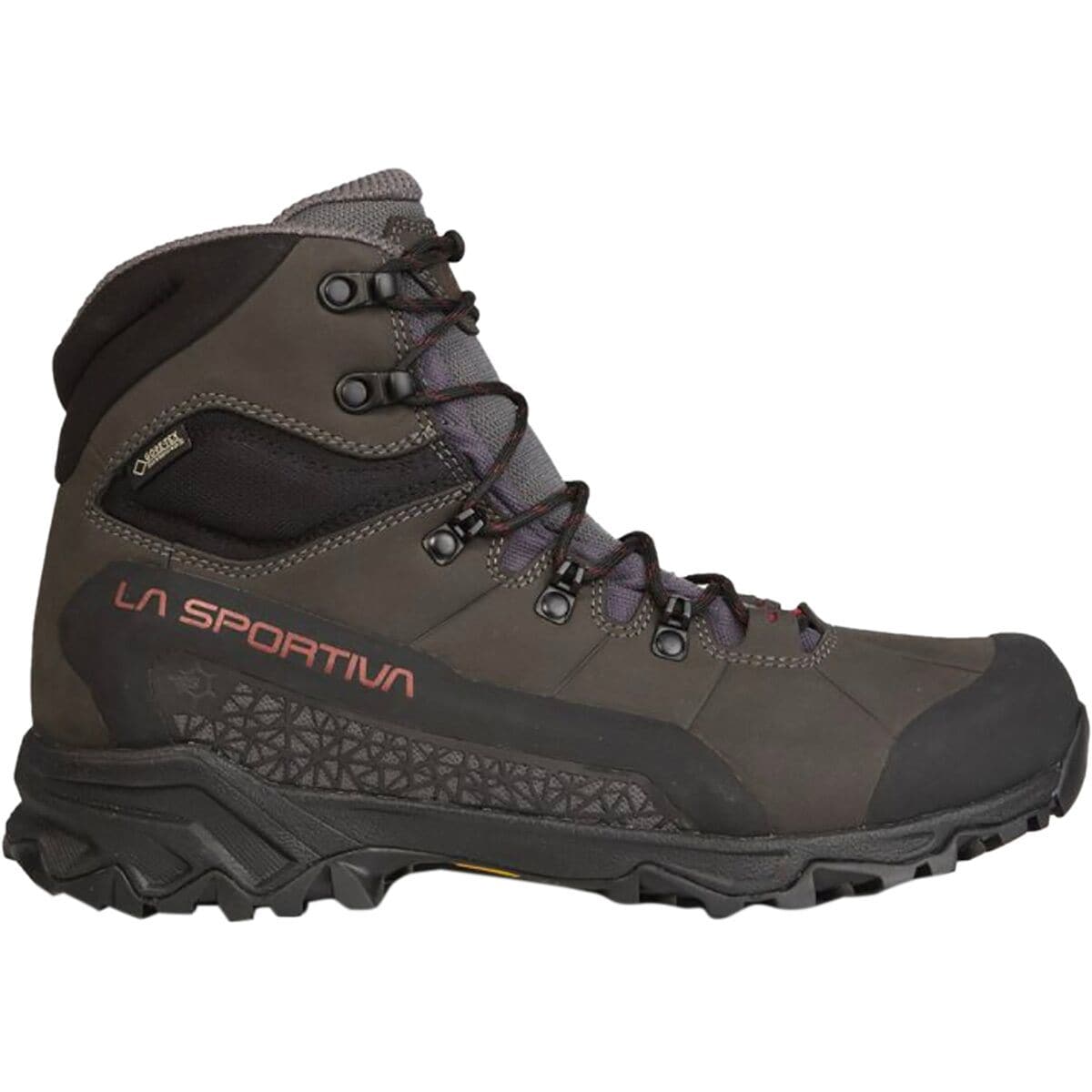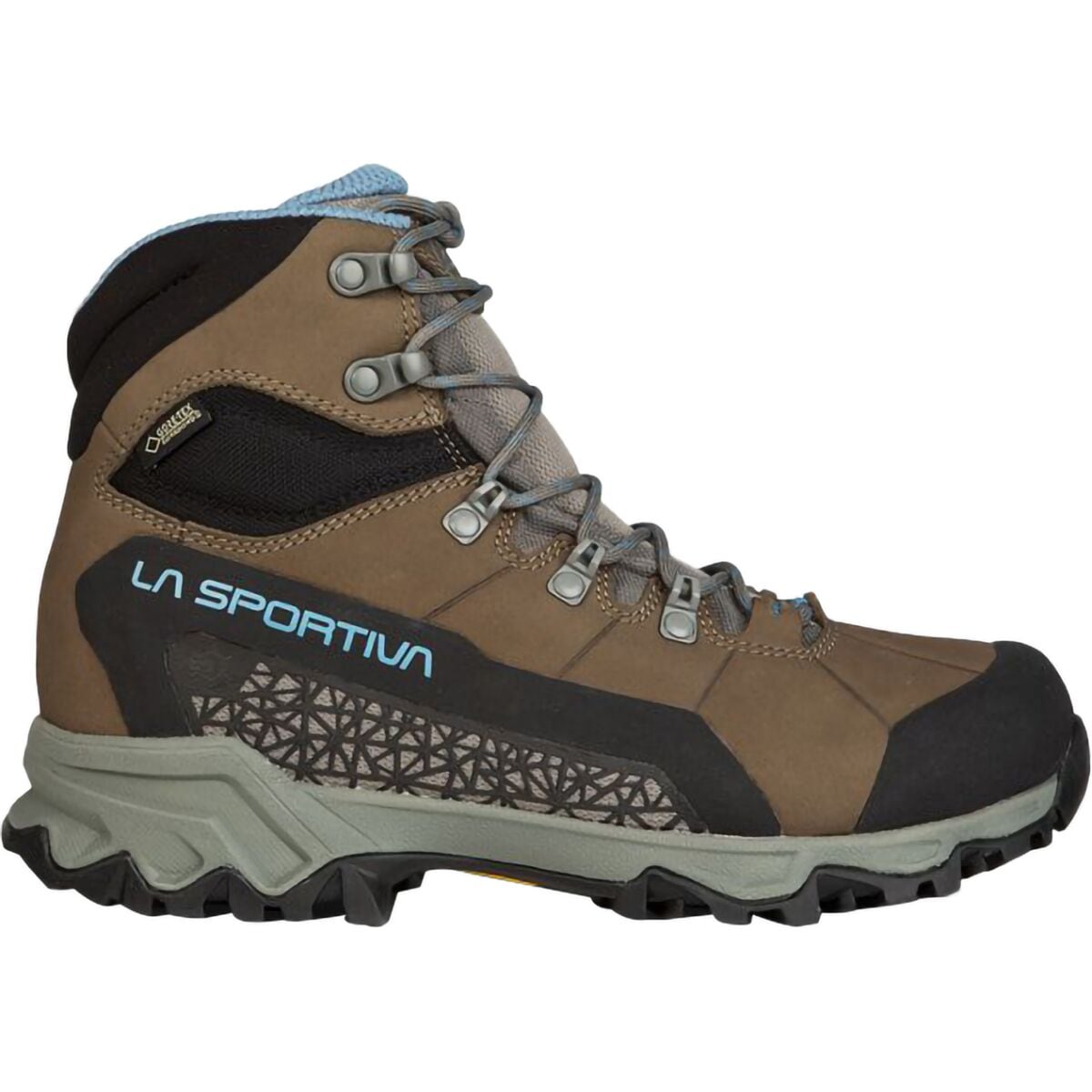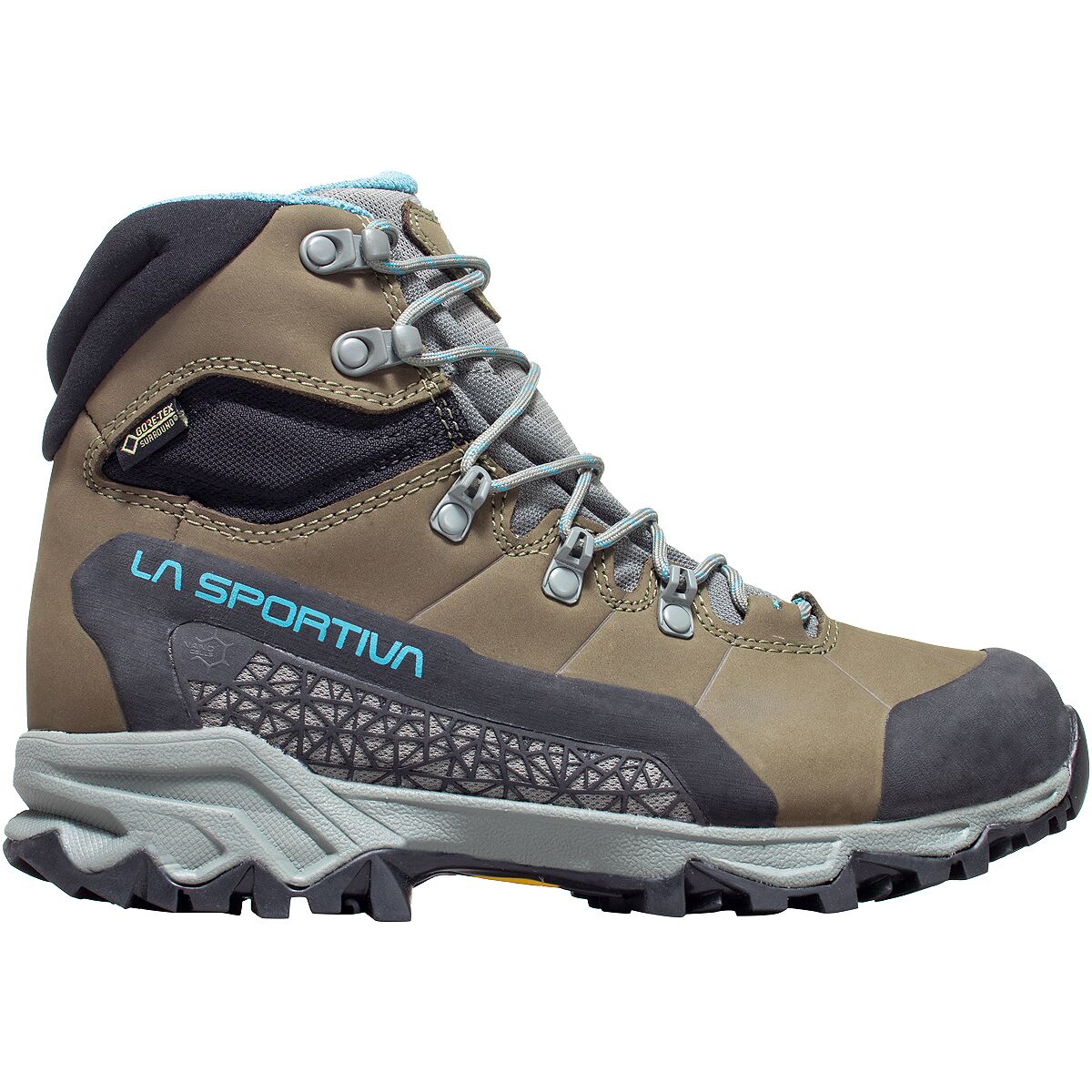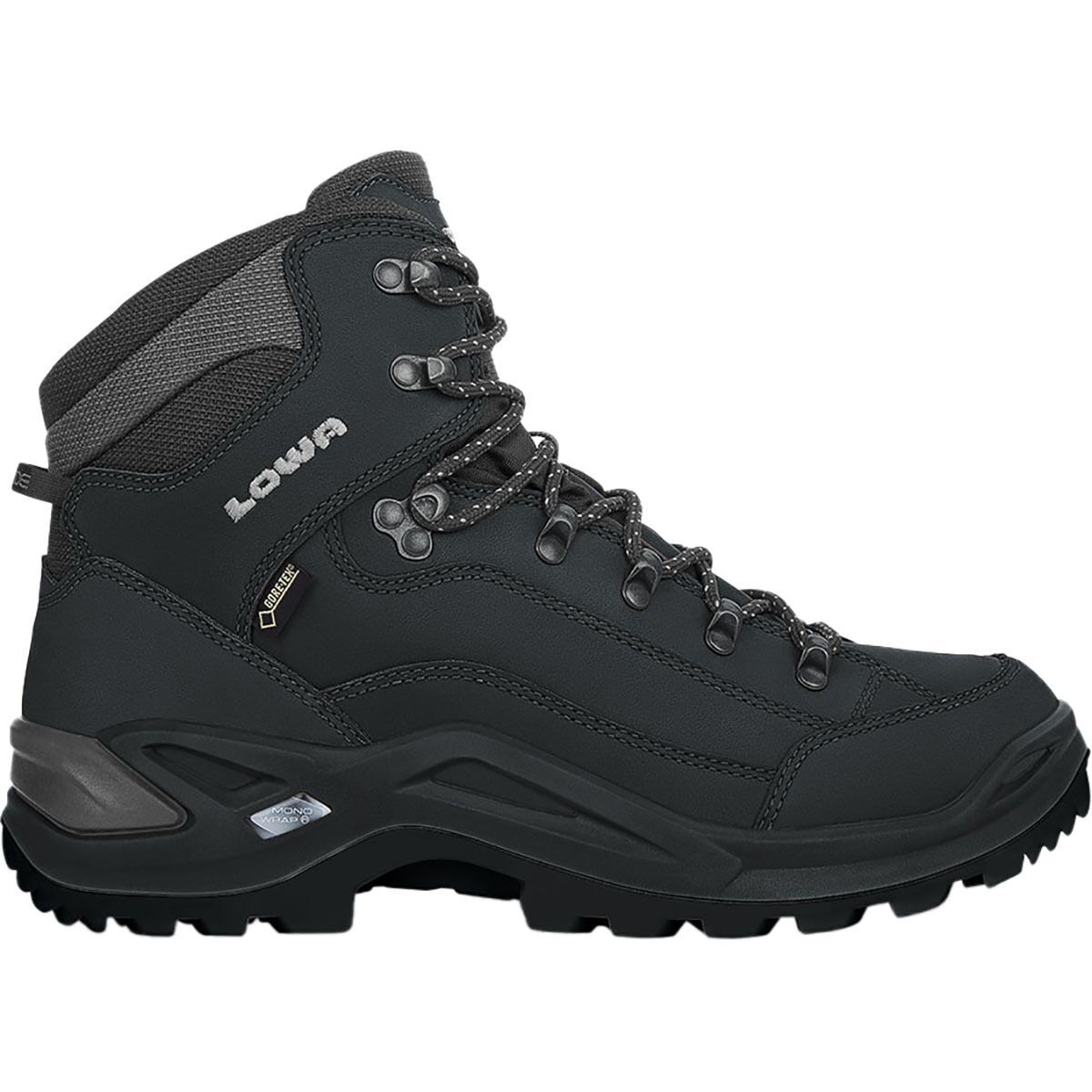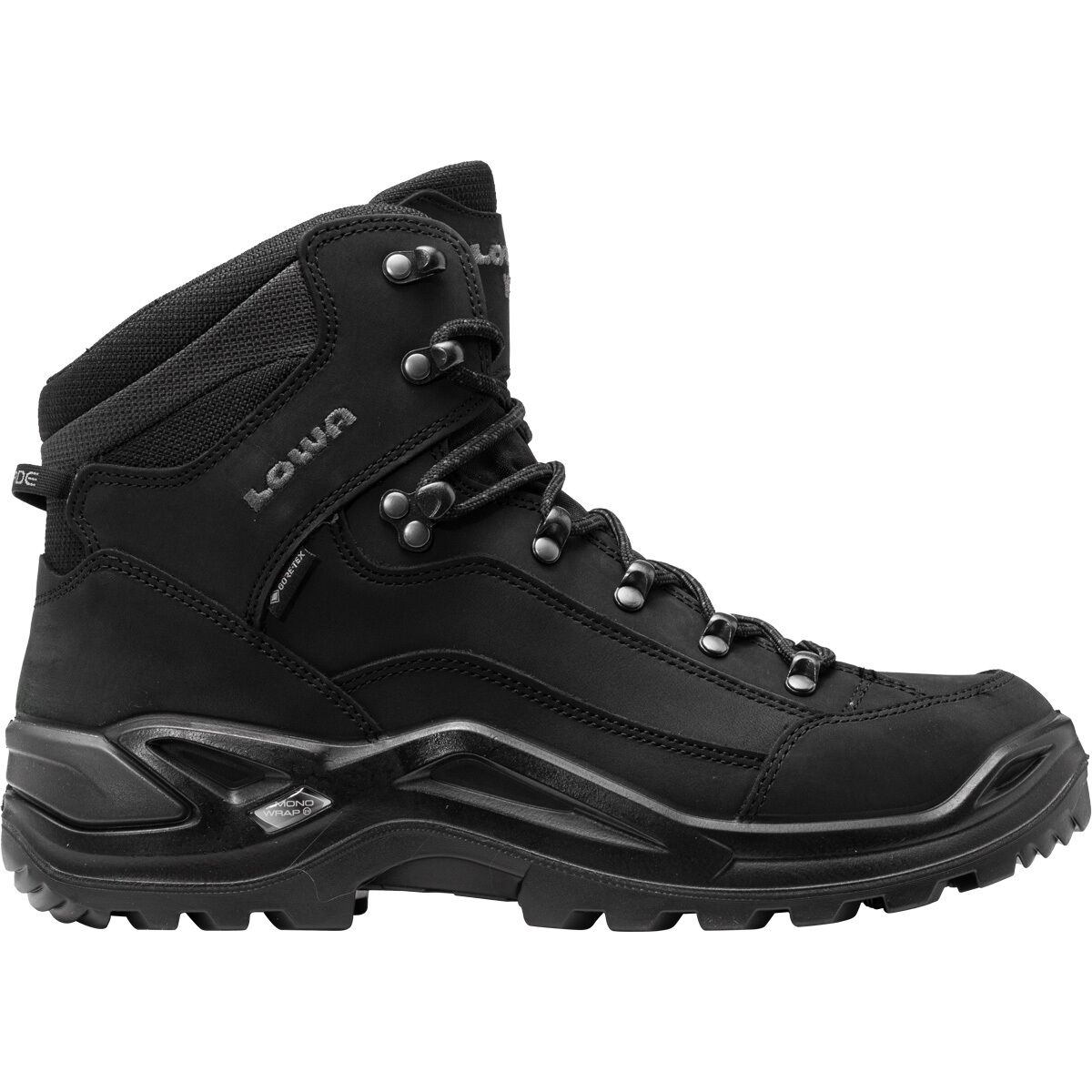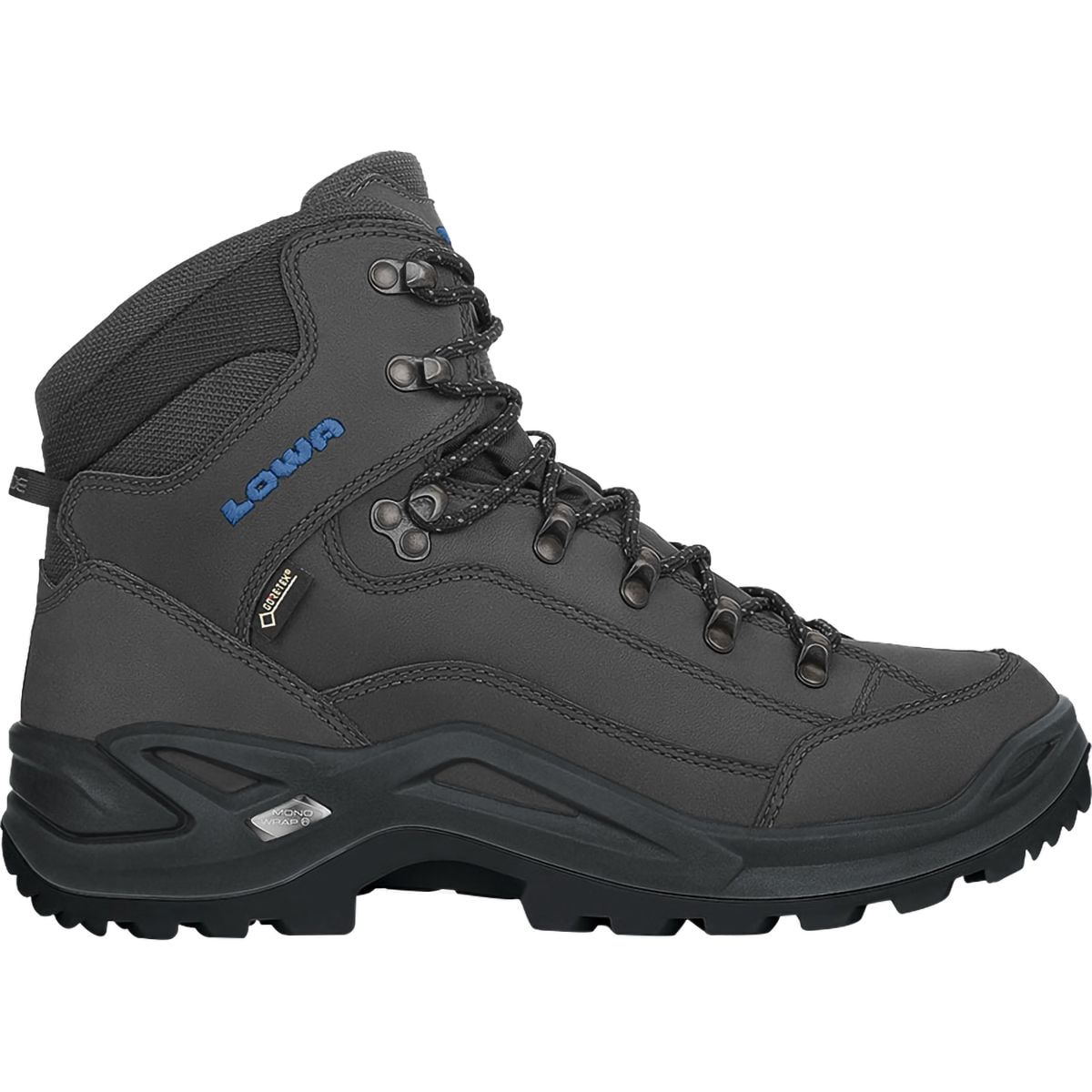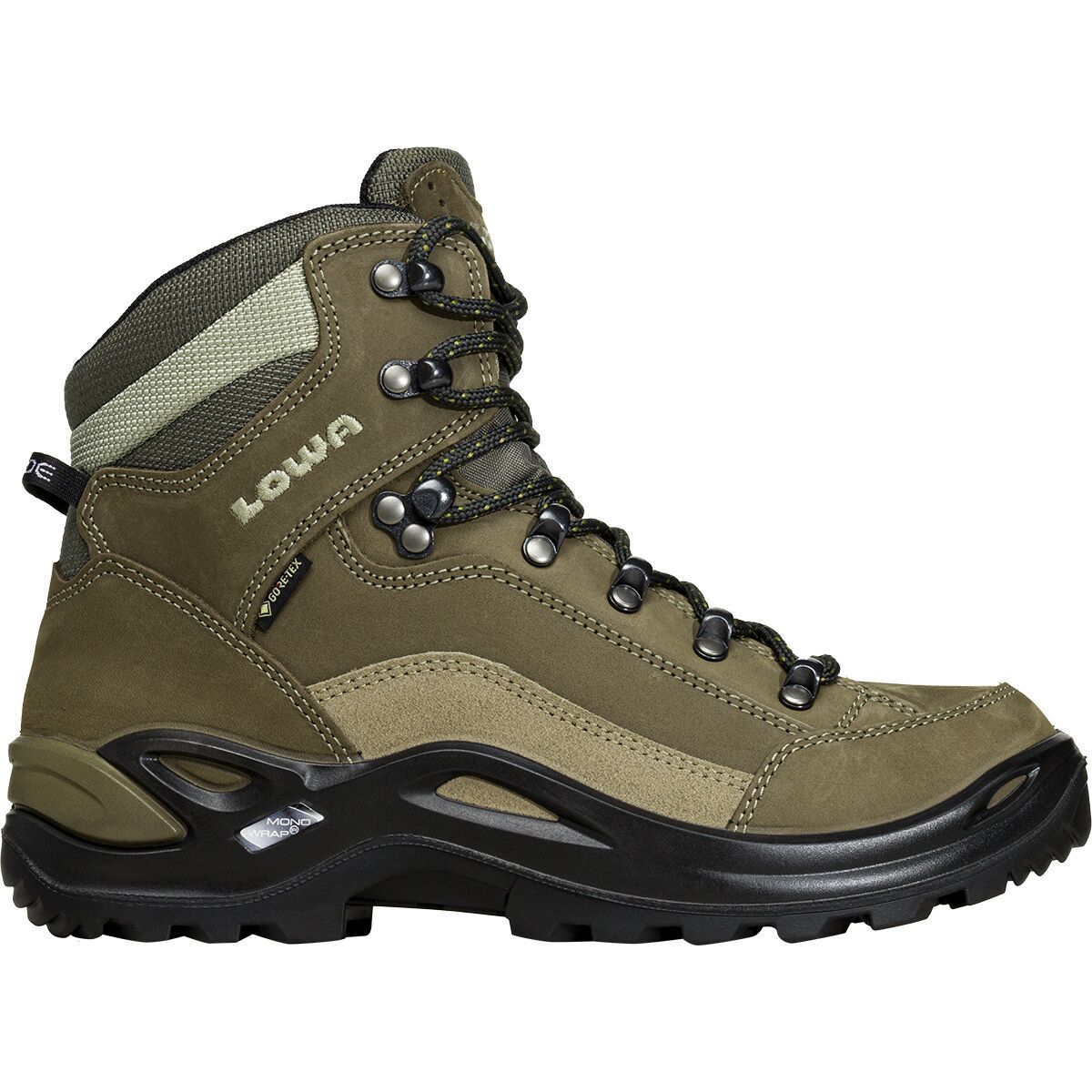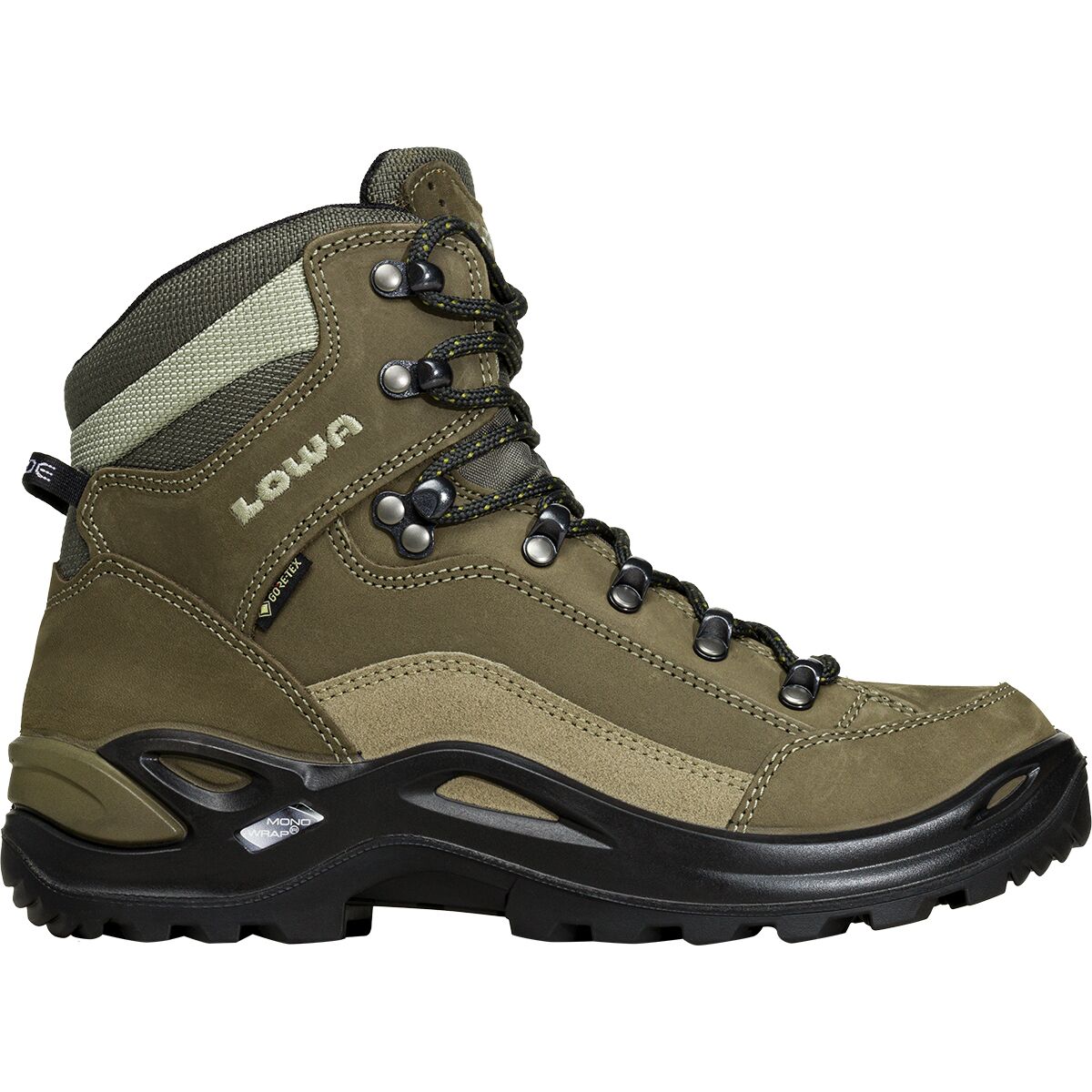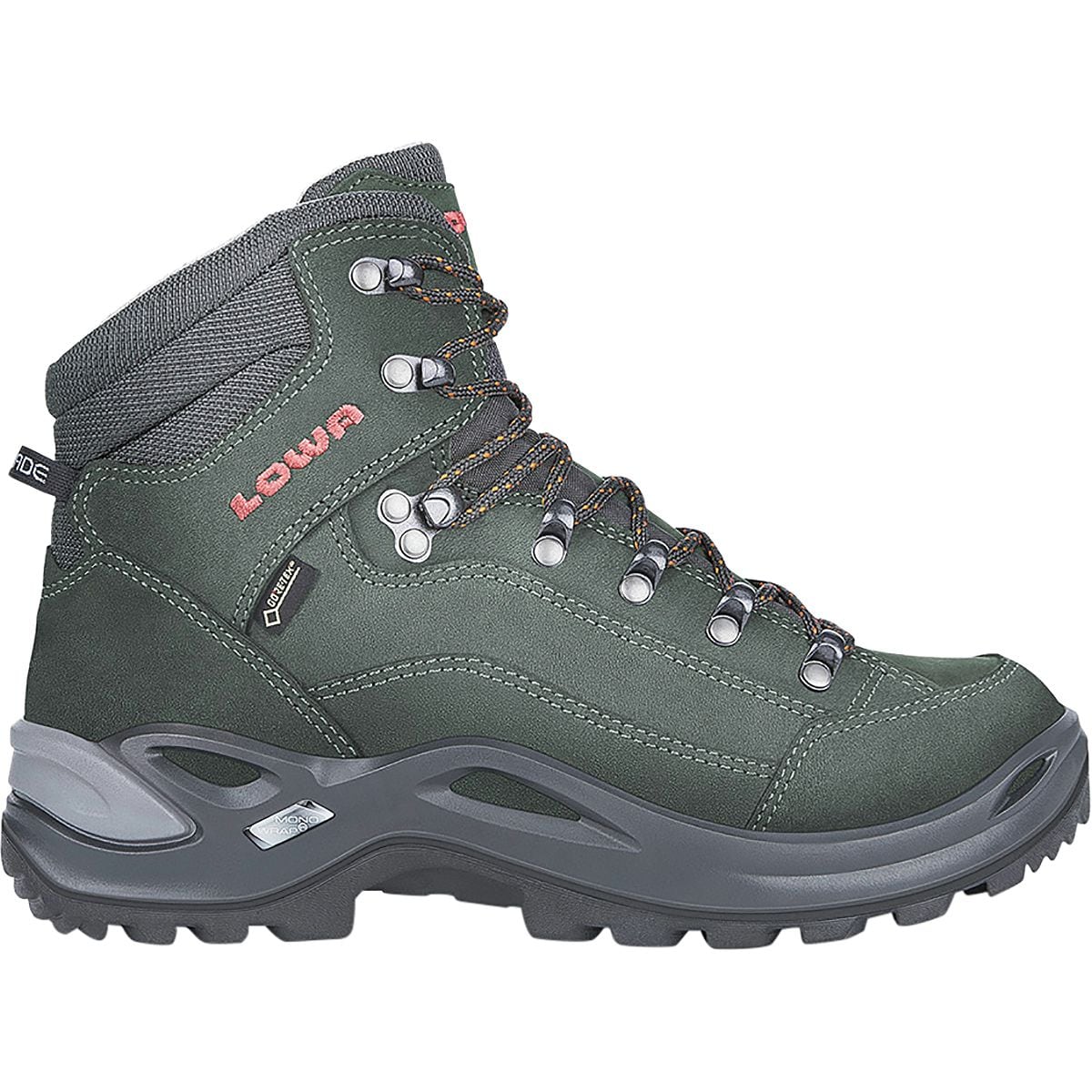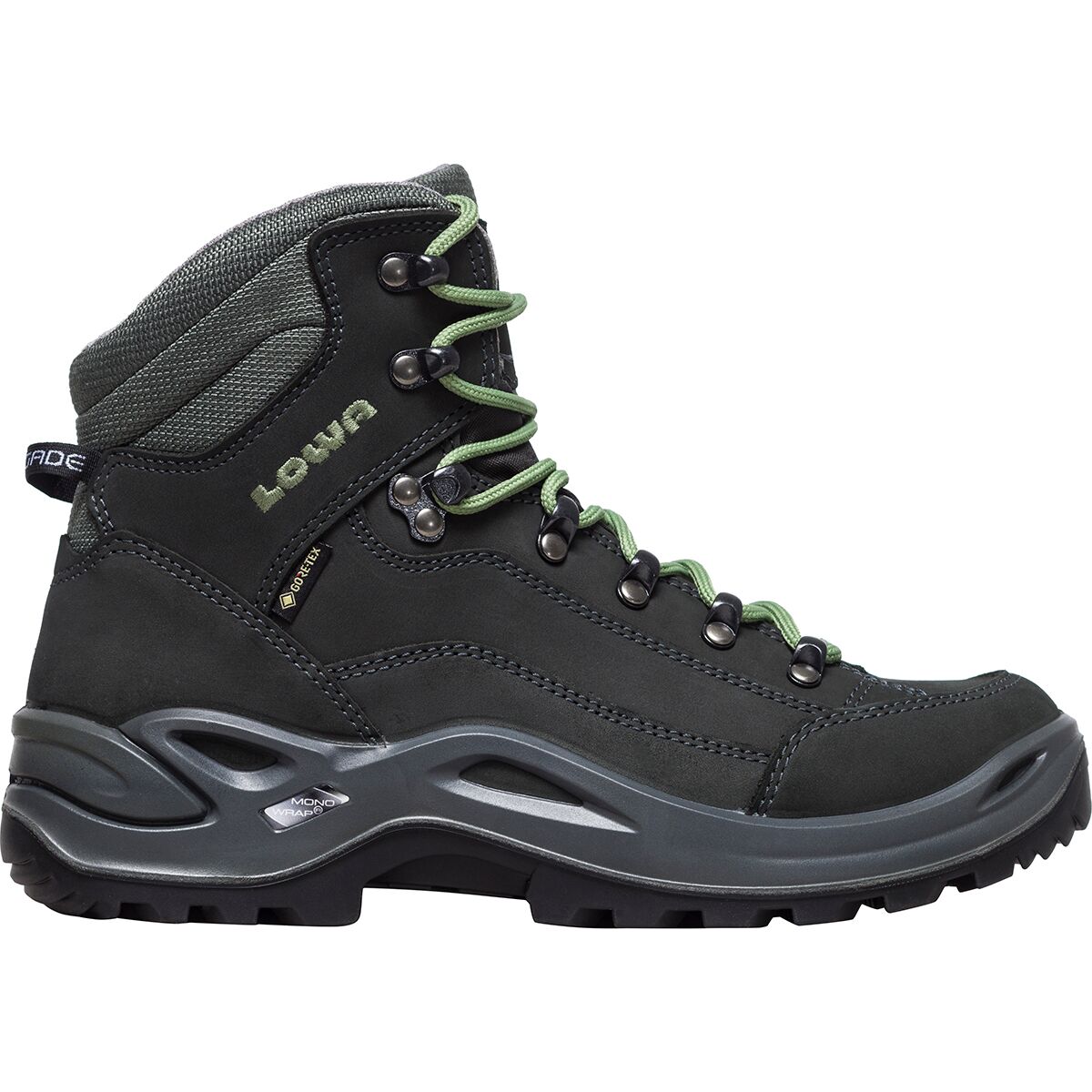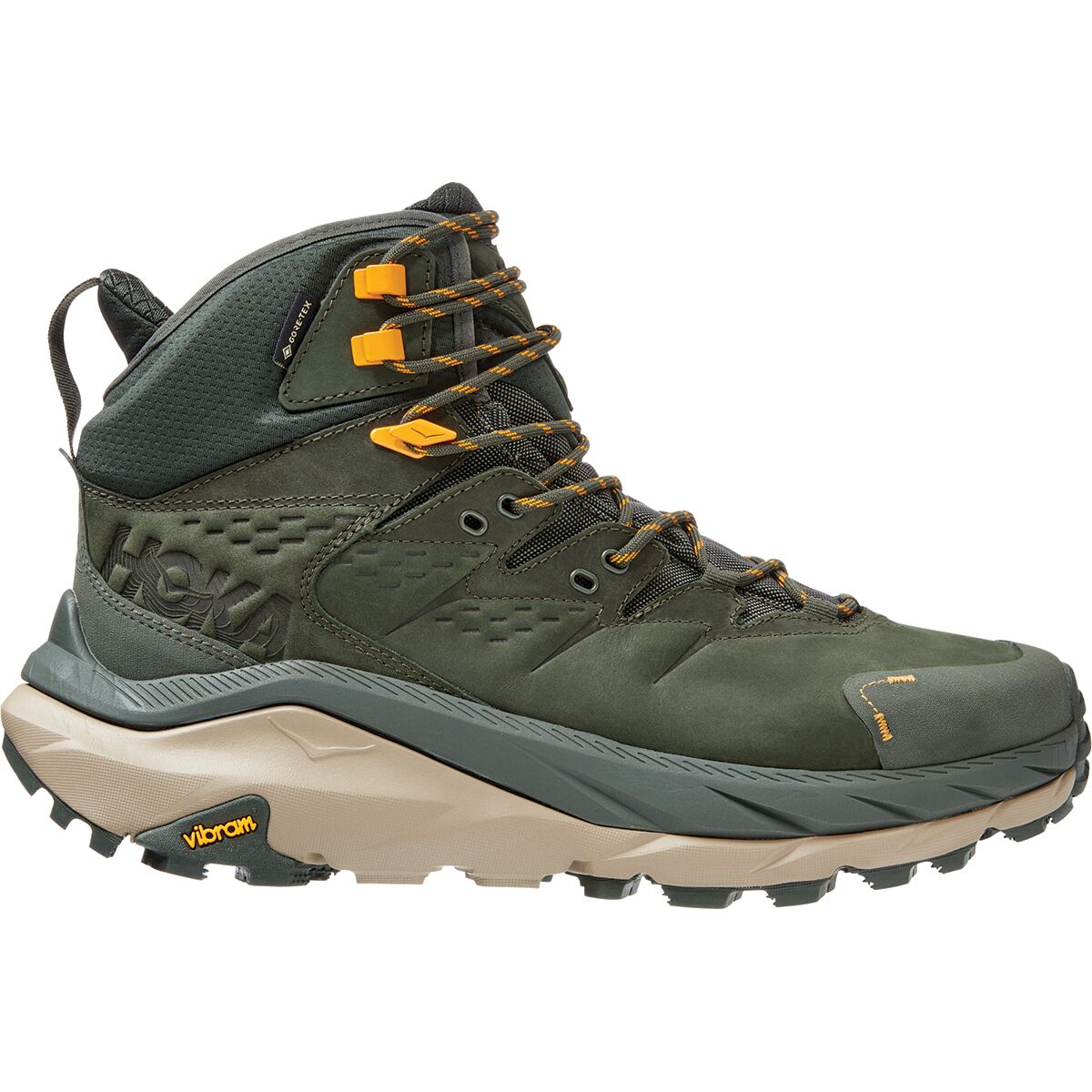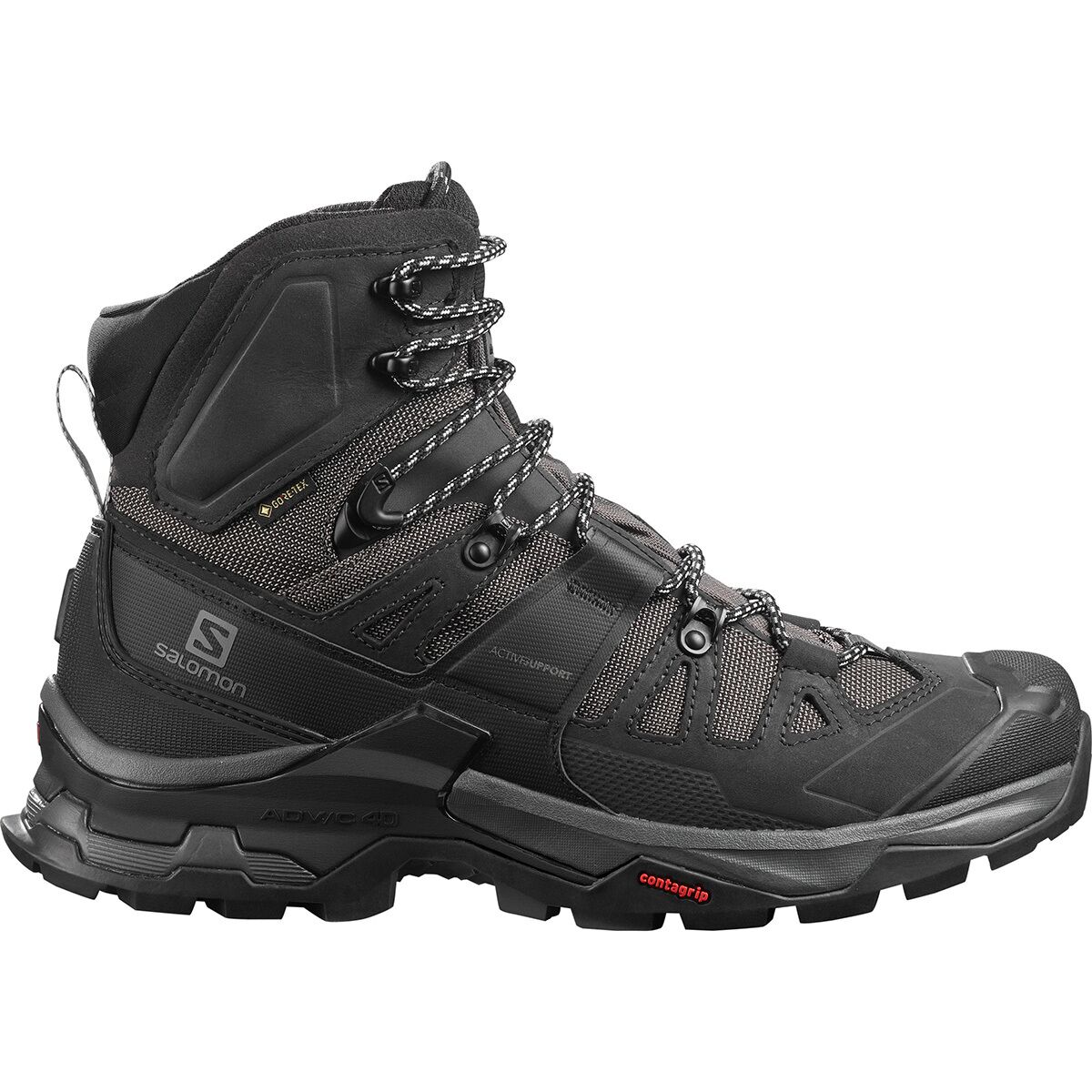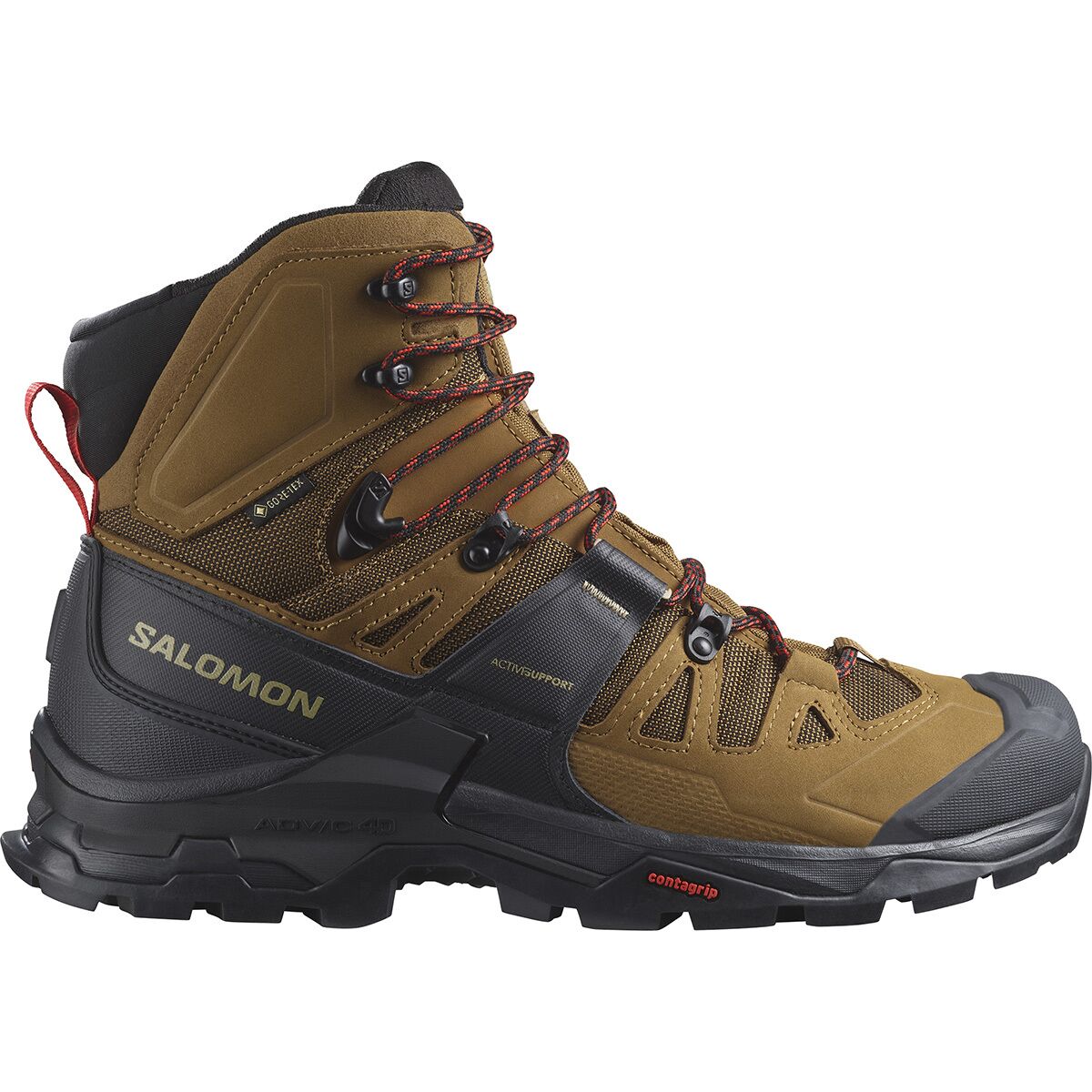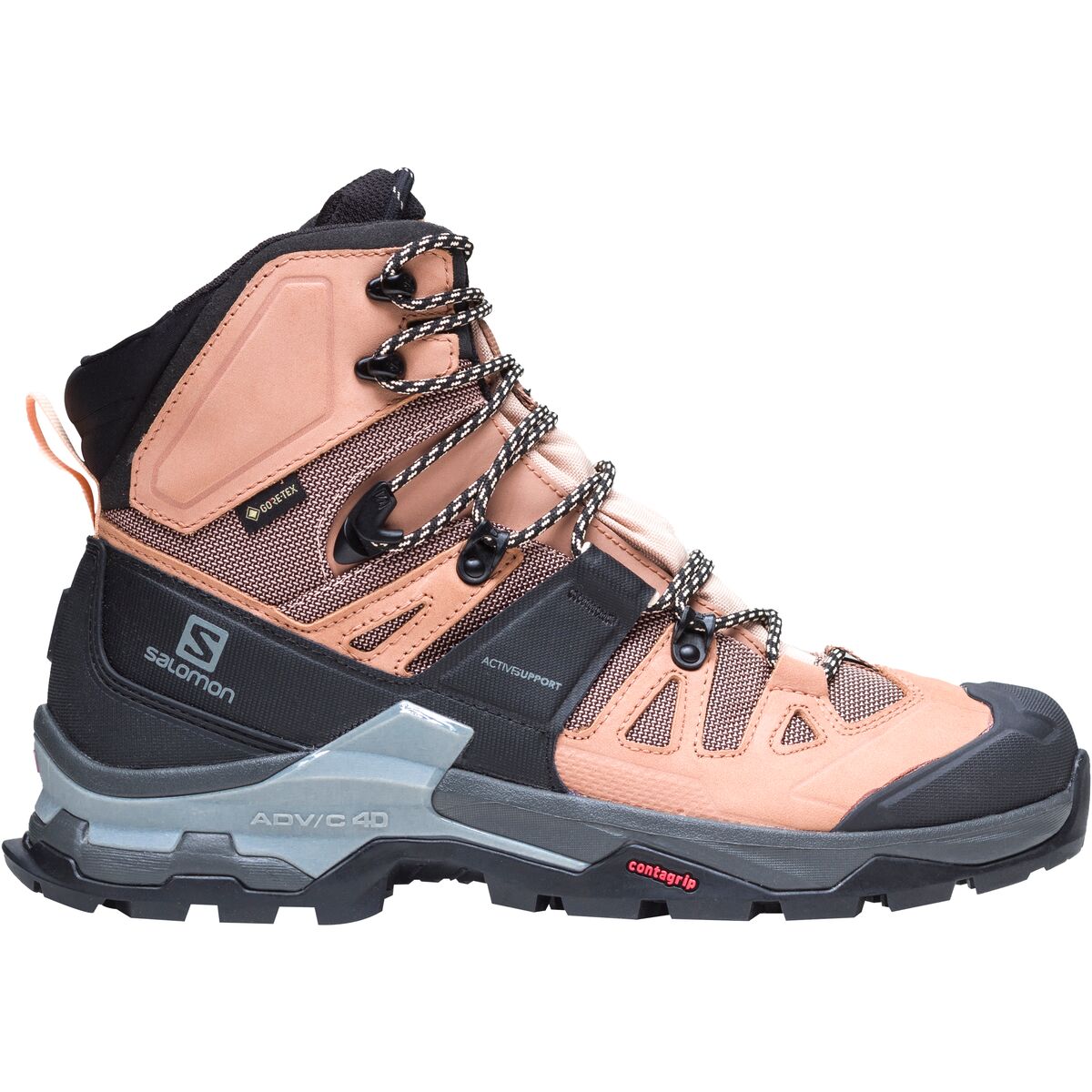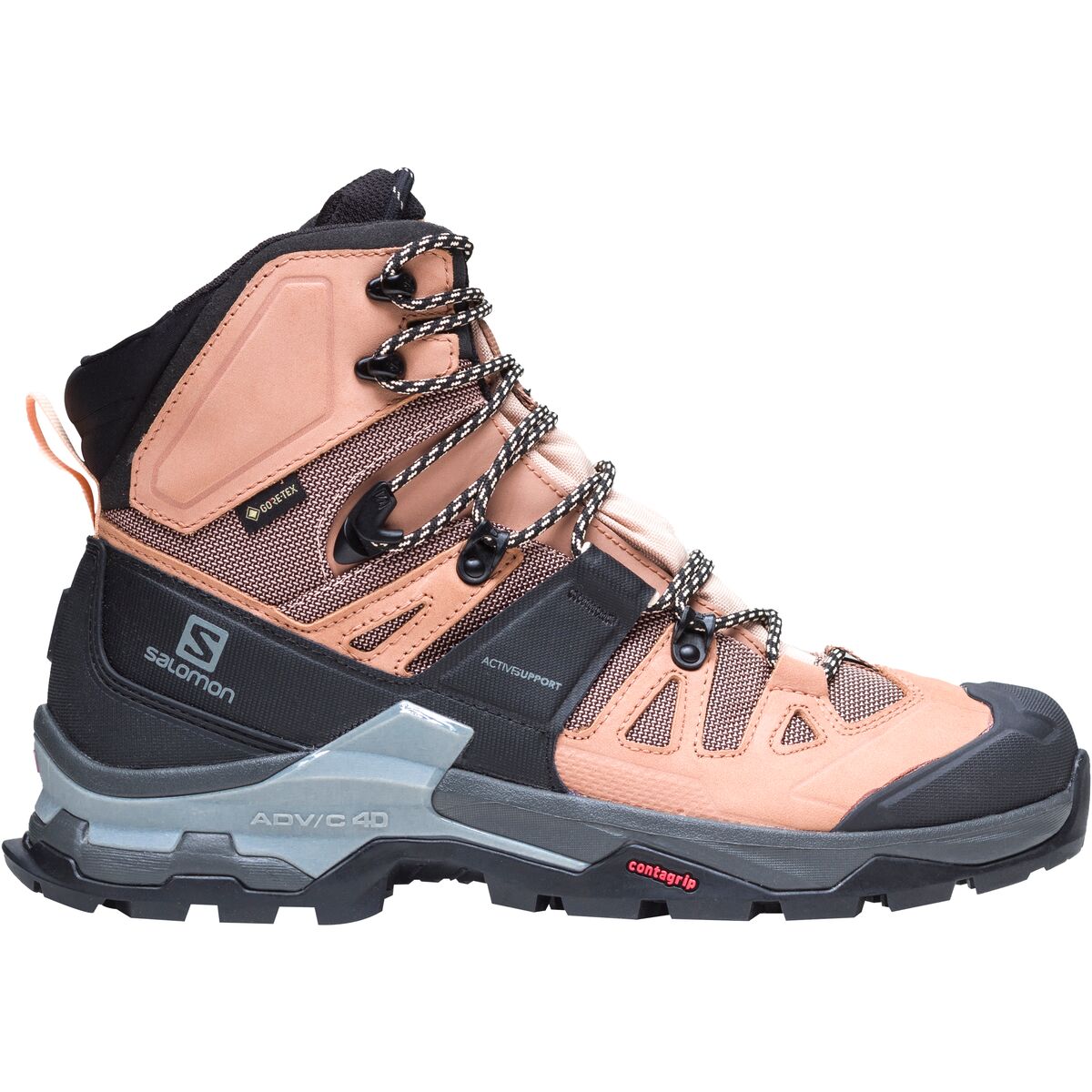As the former footwear guy at a hiking and backpacking shop, I love hooking people up with the best hiking boots. The thing is, there's really no such thing as "the best hiking boot."
Hiking boots are not created equally. But the best hiking boot for YOU is the one that best fits your feet, your budget, and your hikes. That's why outdoor industry pros won't recommend any hiking boot until they've fit you and asked you qualifying questions about where you hike and how you hike. Then, they'll probably pull 2 or 3 pairs for to try on.
That's more or less how this article works. It highlights the 2 or 3 best choices in different categories of hiking boots and recommends the "best fit" and "best match" for each boot to help you narrow down your choices. The second half of the article then explains how to choose the right hiking boots for your feet and hikes.
best hiking boots: lightweight
There's a strong trend toward lightweight hiking footwear, such as trail running shoes, hiking shoes, and lightweight hiking boots. The best lightweight hiking boots—now starting around two pounds per pair (men) or less (women)—weigh less than traditional hiking boots while providing better support and durability than trail running shoes and most hiking shoes. The trade off is that lightweight hiking boots generally have less support, weather protection, and durability than traditional (midweight) hiking boots and backpacking boots.
If you're more concerned about weight than cost or support, these are the best hiking boots:
Salomon X Ultra 4 Mid
Best Lightweight Hiking Boot
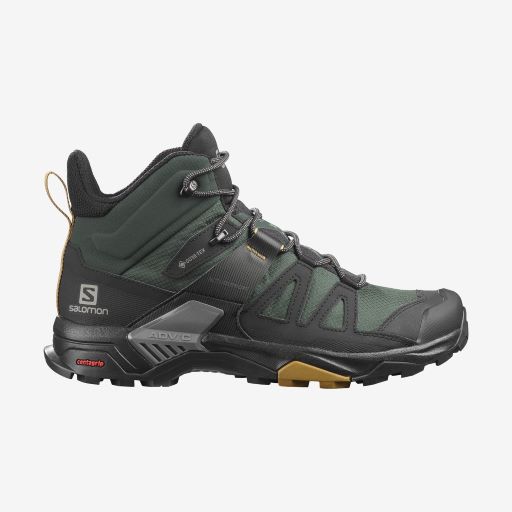
Main Benefits:
The X Ultra 4 Mid almost matches the stability of a mid-weight hiking boot while not weighing too much more than a trail running shoe. That's Salomon's secret sauce: better support at a lighter weight than most brands. The X Ultra 4 is not as tall as many mids, but its sturdy chassis offers torsional rigidity and lateral stability to add some foot and ankle protection. It also features a waterproof and breathable GORE-TEX membrane and aggressive climbing lugs and braking lugs for excellent traction on steep trails with mud, snow, gravel, or scree. This boot weighs about a half pound less than the average hiking boot. It's a versatile, lightweight hiking boot than can handle steeper trails as well as easy to moderate hikes.
Best Fit
standard fit (slightly narrow in heel/toe), wides available
Best Match
all-around hiking, moderate to difficult trails, light backpacking
This post includes affilate links, including the links above. If you buy something after clicking on a link, the retailer may share a small percentage of the sale with Hiking Feet. That's free for you—and supports this site's free and independent content.
Scarpa Rush 2 Mid GTX
Best Lightweight Hiking Boot for Rocky Trails

Main Benefits:
The Scarpa Rush 2 Mid is a lightweight hiking boot that rivals the Salomon X Ultra 4 for best in class. Much lighter than other Scarpas, the Rush series is made for fast hikers and can handle more serious terrain than most lightweights. As you might expect from a premium brand for climbing shoes, the Scarpa Rush has good traction on rock, making it a capable scrambler. If you're looking for a lightweight hiking boot for mountain trails, it's hard to beat the Scarpa Rush 2 Mid.
Best Fit
standard fit (size up a full-size from your everyday size)
Best Match
all-around hiking, day hikes on rocky trails
La Sportiva Ultra Raptor II Mid GTX
Best Lightweight Hiking Boot For Narrow Feet
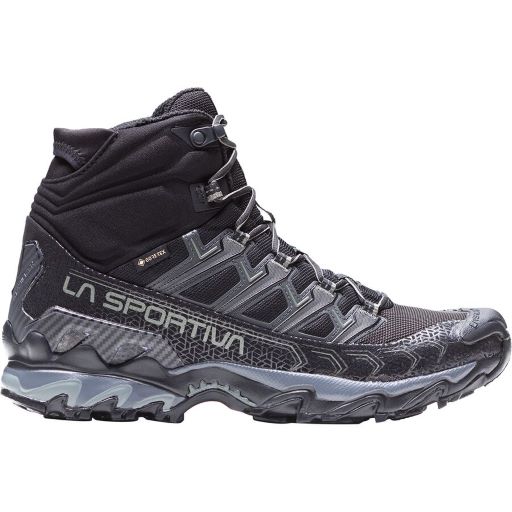
Main Benefits:
The mid-cut version of La Sportiva's sturdiest trail running shoe, the Ultra Raptor Mid II GTX is lightweight hiking boot for men and women who mostly hike rocky, technical trails. Ultra Raptors feel firm underfoot with protective toe caps and secure uppers that wrap around your feet for decent protection for a lightweight package. They also feature waterproof-breathable GORE-TEX weather protection and La Sportiva's Frixion rubber compound (used in their climbing shoes) for great grip on rocks. Sportivas have a snug and narrow fit (which may require sizing up more than normal), but they also offer the Ultra Raptor in wide, which adds some room in the forefoot and toe box.
Best Fit
narrow feet,
wide sizes also available
Best Match
day hikes on rocky, technical trails with rock scrambling
Topo Athletic Trailventure 2
Best Lightweight Hiking Boot With Wide Toe Box
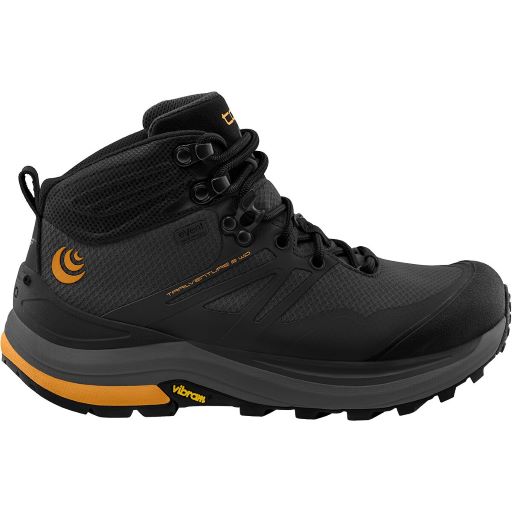
Main Benefits:
The Trailventure 2 is a lightweight fast-packing boot from Topo Athletic—a brand awarded the American Podiatric Medical Association Seal of Approval for supporting healthy feet. Topos features a wide toe box, a secure fit, and low (5mm) heel to toe drop to encourage a more natural base. The Topo Trailventure feels cushy underfoot with the brand's soft but responsive zipfoam midsoles and moderately stiff outsoles (with a nylon stability shank), which makes the boot moderately supportive. The Trailventure 2 is tailor-made for fast hikers, but its traction is good enough for tough trails, too. And its comfort may appeal to casual hikers and especially to hikers who like wide toe boxes. The first Trailventure won REI Editor’s Choice Award, and the Trailventure 2 is better— and currently my boot-of-choice for most of my day hikes (see my review).
Best Fit
standard to wide feet
Best Match
day hikers, fast-packers
best hiking boots on a budget
Not everyone can afford the best hiking boots, which often cost $200 or more. However, many hikers will be fine with budget-oriented hiking boots, particularly if they aren't hiking difficult trails, hiking tons of miles, or carrying extra weight.
What are the best hiking boots for hikers on a budget? Here are the best budget-oriented hiking boots for hikers:
Merrell Moab 3 Mid
Best Budget Hiking Boot

Main Benefits:
With KEEN raising its prices, the Merrell Moab has less competition at the budget price point. Billed as the world's best-selling hiker, the Moab is popular with budget-oriented hikers and with casual hikers who prefer Merrell's "out of the box comfort" to more supportive, performance-oriented hiking boots. Updated in summer 2022, the Moab 3 has added a little more support and better tread for hiking, which may have bumped it up to an average hiking boot. You should target other hiking boots on this list if you hike moderate to difficult trails, carry a heavier pack, or want better durability, waterproofing, support, and overall quality. However, the best-selling Moab is easier on the wallet, a good fit for wide feet, good enough for the average hiker, and a good "trail to town" option for people who want to wear hiking boots everyday.
Best Fit
wide feet,
wide sizes available
Best Match
hikers on a budget, casual hikers, day hikers
Oboz Sawtooth X Mid
Best Value Hiking Boot
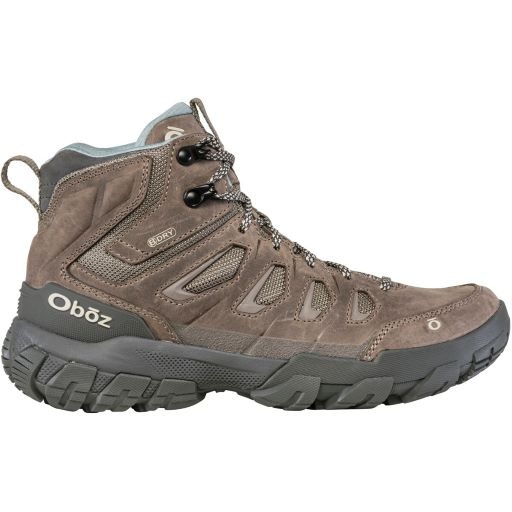
Main Benefits:
The Oboz Sawtooth Mid gets my vote for best value in hiking boots, and it's just been updated with the 10th Anniversary Sawtooth X. Like most Oboz, the Sawtooth X is a sturdy, comfortable, and durable hiking boot that's easy on your feet yet tough on the trail. The Merrell Moab (above) is the most popular hiking boot for budget-oriented hikers. For a few dollars more, however, the Sawtooth offers better support, waterproofing, traction, and durability. The Sawtooth isn't a light hiking boot. But Oboz scores points for durability and its quality O-Fit insoles, which add cushion and foot support where other brands skimp. The Sawtooth also tends to fit a wide range of men and women—the regular fits snug in the heel and standard in the midfoot, and its wide size is now a true wide.
Best Fit
standard fit,
wide sizes available
Best Match
average hikers,
moderate day hikes
best hiking boots: mid-duty
Are you looking for a hiking boot with good foot and ankle support? If so, your best hiking boot is probably a mid-duty hiking and backpacking boot—what most people picture when they think of a "hiking boot."
Midweight hiking boots provide better foot and ankle support, weather protection, and durability than lightweight hiking boots, hiking shoes, and trail runners. They're also versatile. The best mid-weight hiking boots are sturdy enough for backpacking yet flexible enough for day hiking. The trade off is that they're heavier than trail runners, hiking shoes, and lightweight hiking boots—and not as protective as true backpacking boots. Mid-duty hiking boots are often good choices for beginners (who normally need more support until their lower bodies are built up for hiking), hikers with foot or ankle issues, serious hikers who prefer more taxing trails and harder hikes, and hikers who want one pair of boots that works for both day hiking and backpacking.
Vasque Breeze
Best Bang For Your Buck
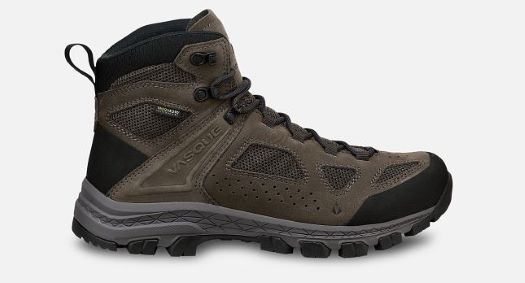
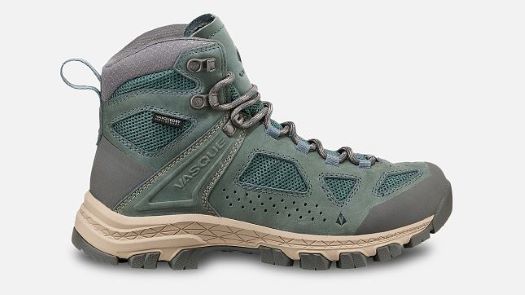
Main Benefits:
The Vasque Breeze is another good value—and one of the best midweight hiking boots overall. The Breeze strikes a balance between support and flexibility, so you can wear it comfortably for both backpacking and day hiking. For 2023, Vasque has dropped the Breeze's price—as other brands raise theirs—by replacing GORE-TEX waterproofing and Vibram outsoles with Vasque's proprietary waterproofing and outsoles. That makes the Breeze more budget-friendly, though probably not be quite as breathable or ventilated (breezy) as it used to be (when I chose it for my first Grand Canyon hike). Overall, the Vasque Breeze is a solid hiking and backpacking boot for those who prefer a more durable and supportive boot.
Best Fit
standard to narrow feet,
wide sizes available
Best Match
moderate to difficult day hikes and backpacking trips
Oboz Bridger
Best Midweight Hiking Boot
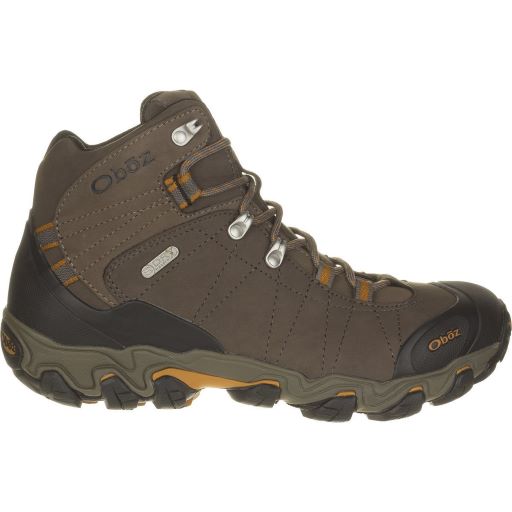
Main Benefits:
Out of Oboz's great selection of boots, the Bridger is their best hiking boot. It's a brute on the trail yet gentle on your feet, thanks to arguably the best footbed in the industry. There's an upmarket insole (worth $30) that sits on a foam cushion that rides on top of a protective chassis and burly outsole. The Bridger has more aggressive traction than the Oboz Sawtooth (above) with deep lugs and heel brakes that excel on soft surfaces, loose terrain, and steep descents. It's not the lightest boot. But its mix of moderate flex and support hits that sweet spot where it's comfortable enough for day hiking yet strong enough backpacking.
Best Fit
standard fit,
wide sizes available
Best Match
moderate to difficult day hikes, backpacking
La Sportiva Nucleo High GTX
Most Athletic Midweight Hiking Boot

Main Benefits:
The Nucleo II High GTX is the lightest hiking boot I know with high-cut ankle support. Lighter and more flexible than traditional hiking boots, it's a little more athletic than most midweights, making it a good choice for fast hikers. The Nucleo features soft, Nubuck leather and stands out for its GORE-TEX Surround waterproofing—the most breathable GTX membrane—and for Vibram Megagrip outsoles that excel on wet and dry surfaces. La Sportivas run small and narrow (by US standards), but the Nucleo is available in wide. This boot is a premium pick for hikers who want high performance in a moderately lightweight package with supportive ankle collars. For more, here's my review of the Nucleo High II GTX.
Best Fit
narrow feet,
wide sizes available
Best Match
moderate to difficult day hikes, light backpacking
best hiking boots: backpacking
Men and women now backpack in a wide range of footwear. Still, a dedicated backpacking boot is the safest choice if you're carrying a heavier pack or traversing tough terrain. The best backpacking boots provide plenty of foot and ankle protection to support that extra weight and the extra stress it places on your lower body. The following boots are heavier than most people want for day hikes. At the same time, they're significantly lighter than the 4-pound behemoths that backpackers wore back in the day.
Here's my short list of the best hiking boots for backpackers:
Lowa Renegade
All-around Hiking And Backpacking Boot
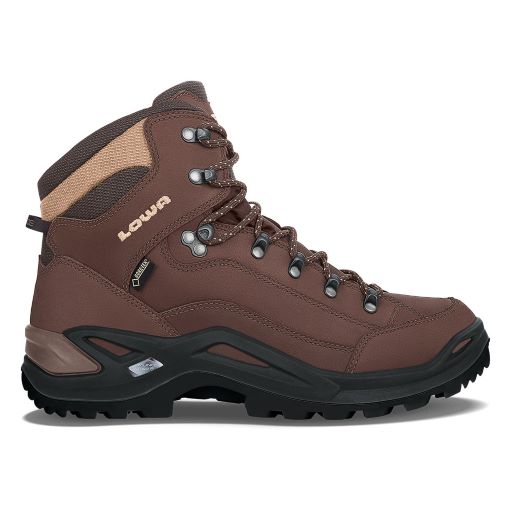
Main Benefits:
The Lowa Renegade has old-school appeal for men and women who want a time-tested hiking and backpacking boot. The first hiking boot named to Backpacker Magazine's Hall of Fame, it's long been a top choice for backpackers, off-trail hikers, trail crews, and heavy-set hikers. Renegades rock protective leather uppers, stiff soles, sturdy PU midsoles, and lateral support to provide backpackers with the stability and protection they need to carry a heavier pack safely. It's pobably burlier than most day hikers want (unless they have serious ankle issues and hike serious terrain). However, the Renegade is one of the best hiking boots for backpackers and off-trail hikers, especially if you find it on sale.
Best Fit
available in narrow, regular, and wide sizes
Best Match
backpacking,
hard off trail hiking
HOKA Kaha 2
Most Cushioned Backpacking Boot

Main Benefits:
Backpacking boots don't need to be stiff, burly, and brown. The HOKA Sky Kaha is a lightweight backpacking boot with plush cushioning to take the load off our hiking feet. The Kaha wears more like a basketball high-top than a backpacking boot with less weight and more cushioning than the competition. However, it's still a serious hiking boot with full-grain leather uppers, premium Vibram outsoles, and an eVent membrane for air permeable waterproofing that may not wear as warm as other waterproof hiking boots. If you like max cushion, the HOKA Kaha is the most comfortable backpacking boot.
Best Fit
standard fit
Best Match
backpacking
Salomon Quest 4
Best Overall Backpacking Boot

Main Benefits:
There's a reason the Salomon Quest has dominated many awards lists for hiking and backpacking boots. Make that several reasons. There's the great traction, the great lacing system, the industry-leading GORE-TEX waterproofing. It's comfortable and durable. And the Quest also matches the foot and ankle support of classic heavy-weights while weighing less and feeling pretty agile—almost like a high-cut trail running shoe. No wonder it wins so many awards. This is yet another Salomon that may be in a class all by itself—and obviously one of the best backpacking boots out there.
Best Fit
standard fit,
size up full size for wide feet
Best Match
all-purpose backpacking,
off trail hiking
how to choose hiking boots
The best hiking boot for you is the one that best fits your feet and best matches your hikes.
That's why it's useless to crowdsource hiking boot recommendations on Reddit or Facebook. It won't take long for a hundred strangers to recommend whatever they wear—without knowing a single thing about your feet, your body, your budget, and your hikes. That's how to waste $100-$200 on hiking boots that don't fit and don't match where you hike or how you hike.

PRO TIP:
The people who know the MOST about hiking boots are the LEAST likely to recommend hiking boots on social media because they can't make a good recommendation without knowing your fit and the kind of hiking you do.
Choosing the right hiking boot is more of a match-making process than a popularity content. Here's how to choose hiking boots that fit your feet and match your hikes.
how to choose hiking boots that fit
Fit should be your first concern when buying hiking boots. If they don't fit your feet, the nicest hiking boots in the world will suck. Unfortunately, plenty of hikers and backpackers buy boots that don't fit. According to the podiatrist who trained me in footwear, many people buy their boots too small, especially women.
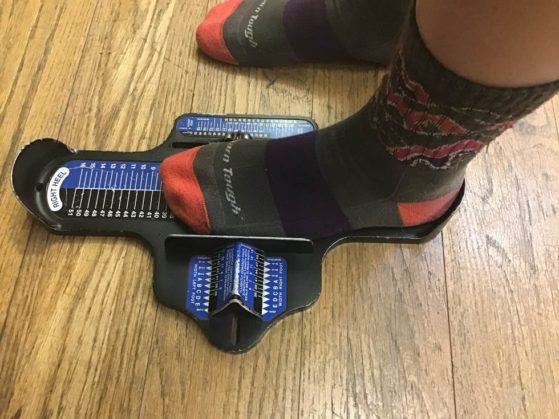
The best way to buy boots that fit is to get fitted at your local hiking shop or REI (not a sporting goods chain store). If that's not an option right now, here are some pro tips from my fitting experience:
Proper Fit: Hiking boots should fit snug (but not tight) with minimal heel lift, no pressure points, and enough room in the toe box to wiggle your toes. Choose boots with approximately 1/2" of room between your longest toe and the end of the boot—roughly the width of your finger (men) or thumb (women). This half-inch clearance (1) accommodates foot swelling and (2) prevents your toes from hitting the end of the boot on steep descents (which leads to injuries and lost toe nails).
Your hiking size probably will be be a half-size or full-size larger than your everyday shoe size. However, the key is following the advice above, not simply sizing up. For more, please check out Hiking Feet's sizing and fitting guide for hiking footwear.
choosing the best hiking boots: support vs weight
Your next challenge is choosing boots with enough support— but not too much support— for the kinds of hiking you do. Most people choose hiking boots for their superior foot and ankle support, stability, and durability. If you want to reap these advantages, you should choose a pair with these features:
At the same time, it's usually a good strategy to buy the lightest hiking footwear you can that provides the amount of support you need. (That's why my recommended backpacking boots don't include hardcore, heavy-duty backpacking boot that approach 4 pounds per pair; that's overkill for most hikers (with the exception of wildland firefighters, trail crews, and backpackers carrying heavy weight over gnarly terrain). Just remember the trade offs: you'll generally lose foot and ankle support— and durability— as you move down in weight.
how much support do you need?
If you want to choose the right boots for you, you've got to know yourself as a hiker. The amount of support you need mostly depends on the terrain you hike, the health of your feet and ankles, and the weight that your lower body has to carry.
In general, your need for stability and support goes UP if you're
You may get by with less support if you're
choosing the right foot and ankle support
Hiking boots can help prevent ankle injuries— at least if they're laced up tightly. Most of a boot's foot and ankle support comes from the ankle cuff and the stiffness of its midsole and outsole.
The height of the ankle cuff is one key indicator of ankle support. For a quick estimate on ankle protection, count the number of eyelets above the ankle on each boot. Hiking boots with one eyelet above the ankle may provide more ankle protection than a low-cut hiker— but less than boots with two (or more) eyelets above the ankle.
However, the quality of materials on the boots' ankle cuffs also makes a difference. For stronger ankle support, look for stiffer leather or synthetic uppers around the boot's heel and ankle areas.
Softer, more flexible uppers— common on budget boots and light-weight boots— may feel good out of the box; however, they may not provide much ankle support, even if they're a mid-cut or high-cut.

PRO TIP:
"Out of the box comfort" is a marketing slogan that usually means crappy foot and ankle support.
At the same time, a stiff sole may provide more foot and ankle stability than the boot's ankle cuff. Stiff soles can carry more weight and are less likely to fold over rocks and rocks, turning over your ankle. That's why (real) hiking boots are stiffer and thicker in the soles than sneakers, cross-trainers, and running shoes.
how to test hiking boots' support
Here are two easy tests to evaluate the stability and support of a boot in a store or at home: the "flex test" and "twist test."
The Flex Text
Evaluate the boot's support by the grabbing it at the heel and toe and forcing the bottom of the boot to bend. Watch to see where the boot flexes and how hard/easy it is to bend the boot from heel to toe.
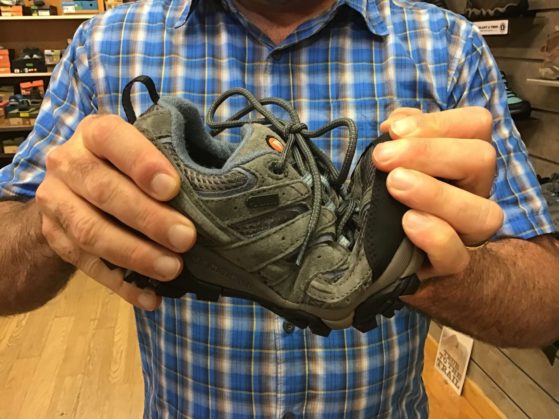
Less support: the best-selling Merrell Moabs flex easily at the midfoot
A boot that flexes easily at the mid-foot (see above) has limited support. Flexible hiking boots may be comfortable for easier day hikes, flat terrain, and well-maintained trails. However, that's less support than many people need for uneven terrain, harder day hikes, and backpacking.
A boot that's stiff in the mid-foot with flex-point near the ball of the foot may be sturdy enough for moderate backpacking yet flexible enough for moderate day hiking. This is the sweet spot for many hikers and backpackers.
A boot with little to no flex underfoot provides the most foot and ankle support for uneven terrain and heavy packs; however, the lack of flex may be uncomfortable for day hikers, casual hikers, and easy-to-moderate trails.
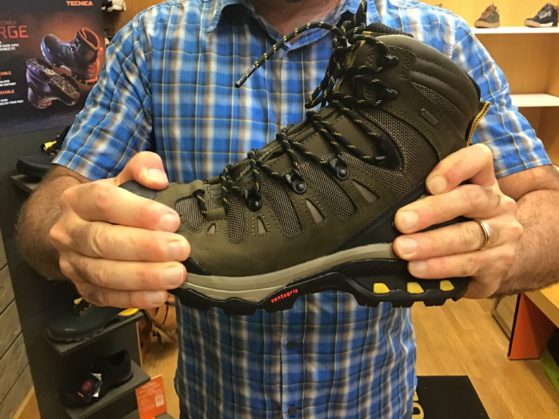
Excellent support: the Salomon Quest backpacking boot has little to no flex
The Twist Test
Evaluate a boot's torsional rigidity— its resistance to side to side twisting— with the "twist test." Grab the toe box in one hand and the heel in other and try to twist the boot (like wringing out wet laundry).

Limited torsional rigidity: Merrell Moab has little lateral support
The easier it is to twist the boot, the less its torsional rigidity. Hiking boots with limited torsional rigidity won't provide much lateral, side-to-side support for your feet or ankles on uneven ground. They're more likely to collapse or fold over rocks and roots. This may increase your risk for rolled ankles, sprains, and other lower body injuries.
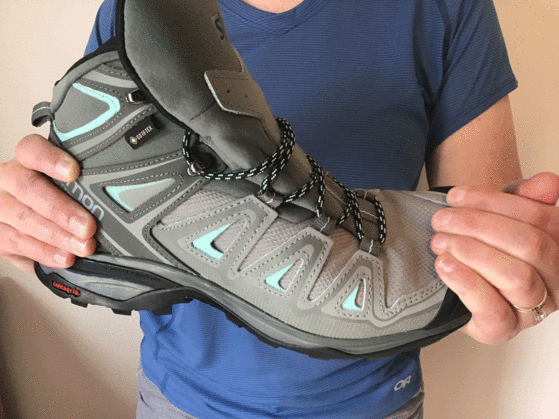
Good torsional rigidity: Salomon X Ultra 3 resists twisting
The harder it is to twist the boot, the greater its torsional rigidity, or lateral support. A boot that resists twisting (like the Salomon X Ultra 3 above) provides better foot support and ankle protection, especially on uneven ground.
Each of my recommendations for the best hiking boots provide at least moderate support, including the lightweight hiking boots. The mid-duty hiking boots provide better support, and the backpacking boots provide the best foot and ankle protection for backpackers carrying heavy packs or hikers who mostly hike off trail in mountainous terrain.
fantastic boots and where to find them
Thanks for checking out my recommendations for the best hiking boots at different weights and price points—and some pro tips on how to choose the right boots for you. I hope this post has helped you get down to two or three choices. And helped you feel smarter and more confident about picking out hiking boots that fit your feet and match your hikes.
If you're not feeling these boots, please feel free to browse Hiking Feet's hiking boot and hiking shoe reviews, my brand reviews, or my curated lists of the best hiking shoes and best trail runners for hiking. You'll also find more curated lists of recommended hiking boots if you scroll down the home page,
Are you ready to pull the trigger on a new pair of hiking boots?! Sweet! If this post helped you make you decision, please consider buying your next pair through the affiliate links above. Hiking Feet may receive a small commission from the retailer at no cost to you. These small commissions fund this site— and compensate me for the hundreds of unpaid hours I spent creating free content to help you buy the best hiking boots (or shoes) for you.
If this site hooked you up, please consider hooking me up, too. (Or, at least like or share this post using the links below, so more people can find this post.) Thanks, I appreciate it!
